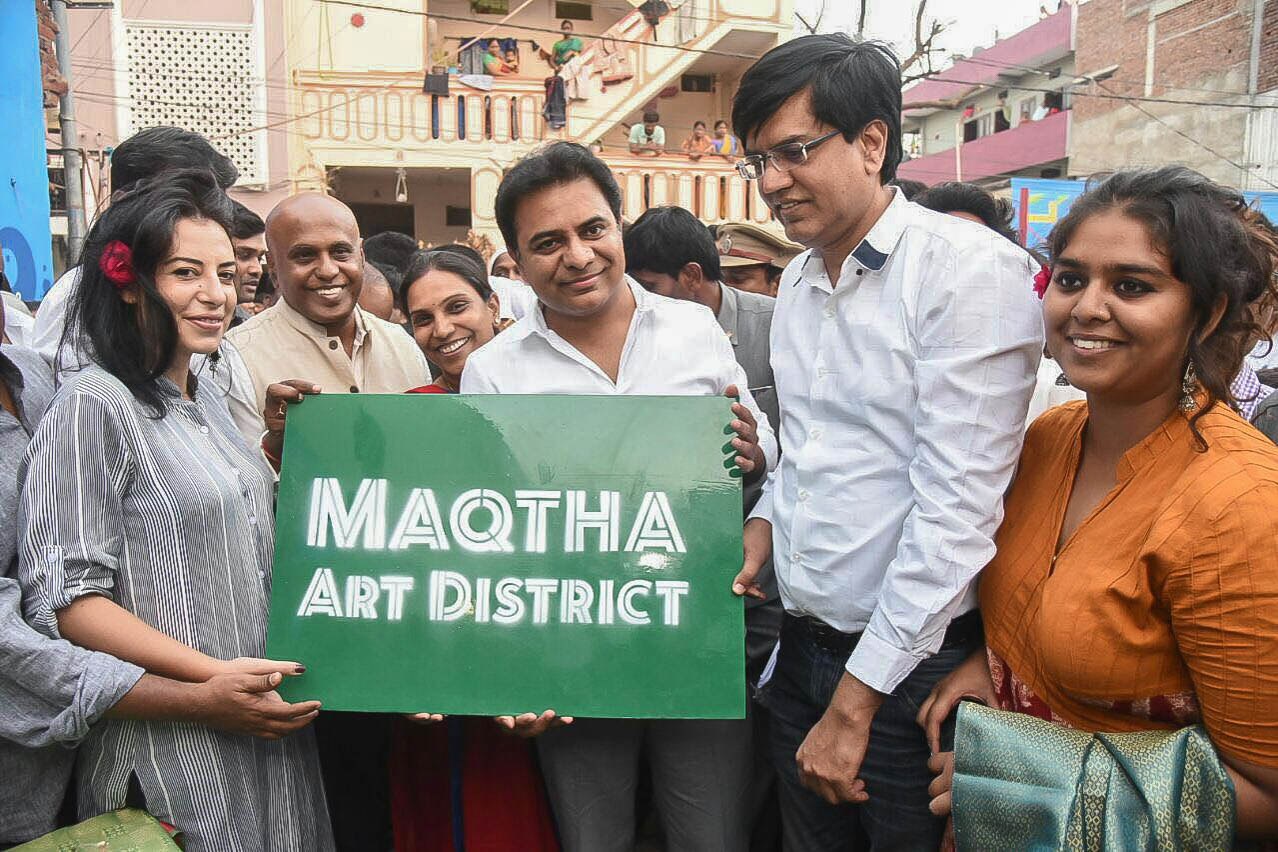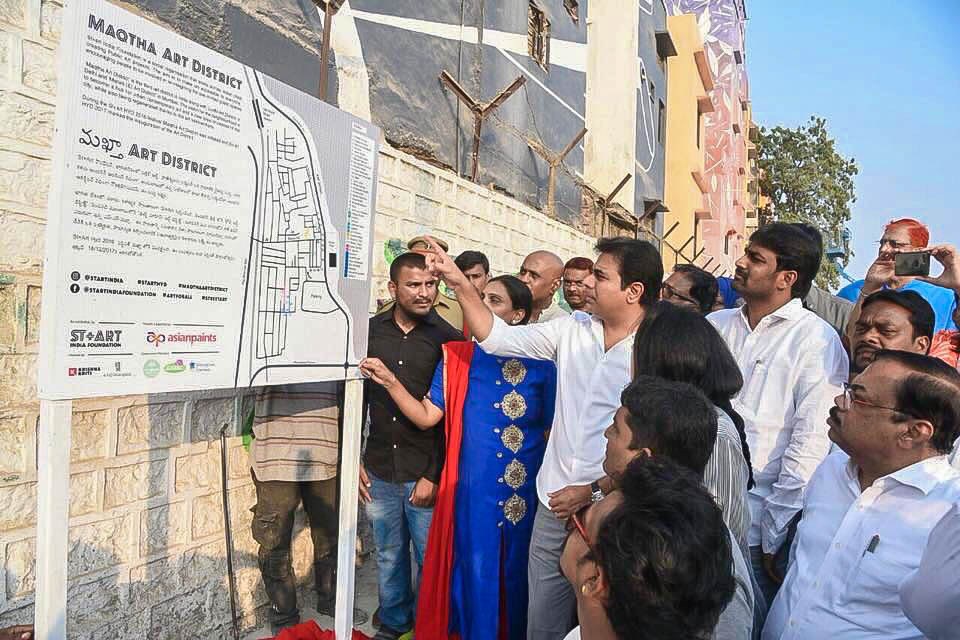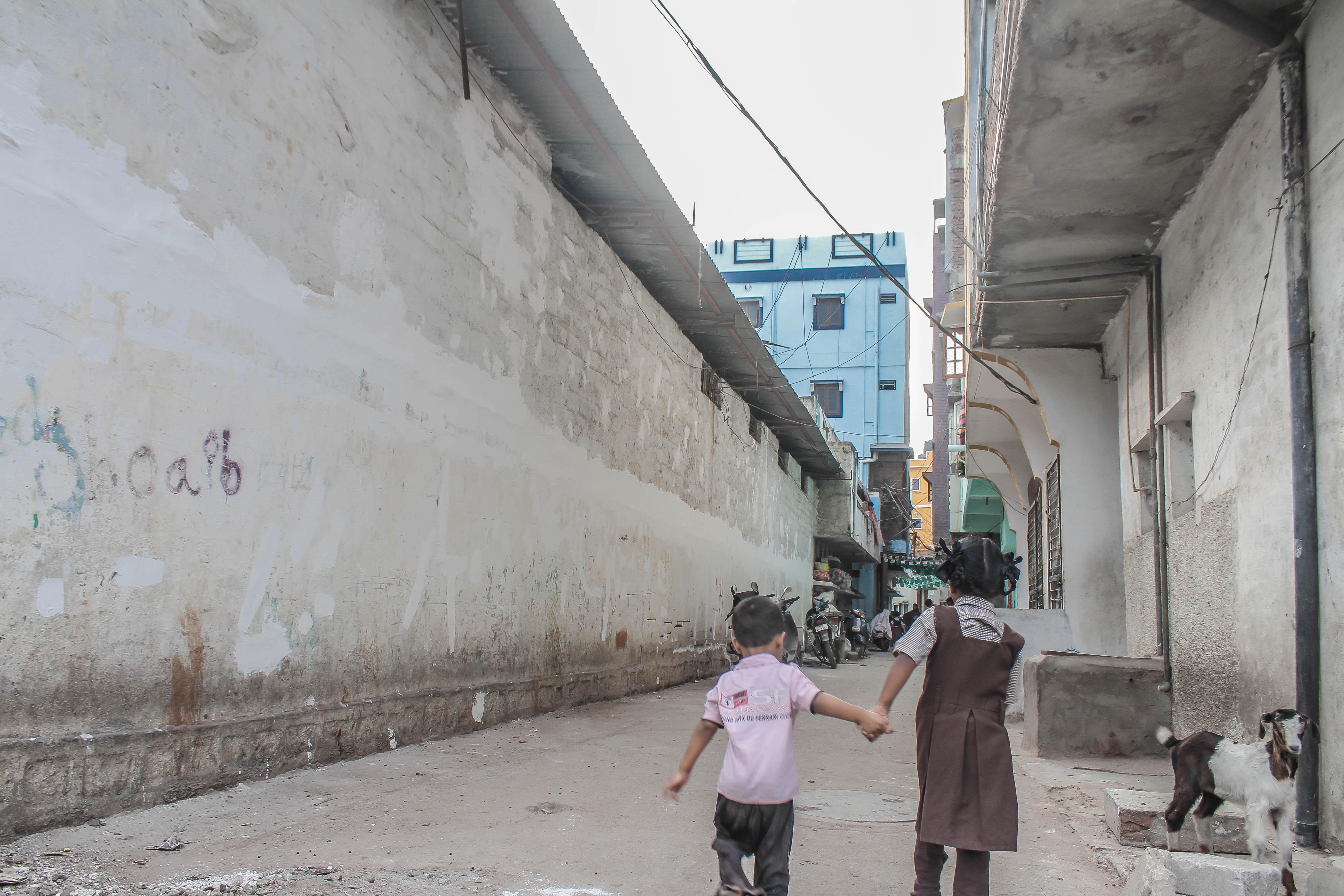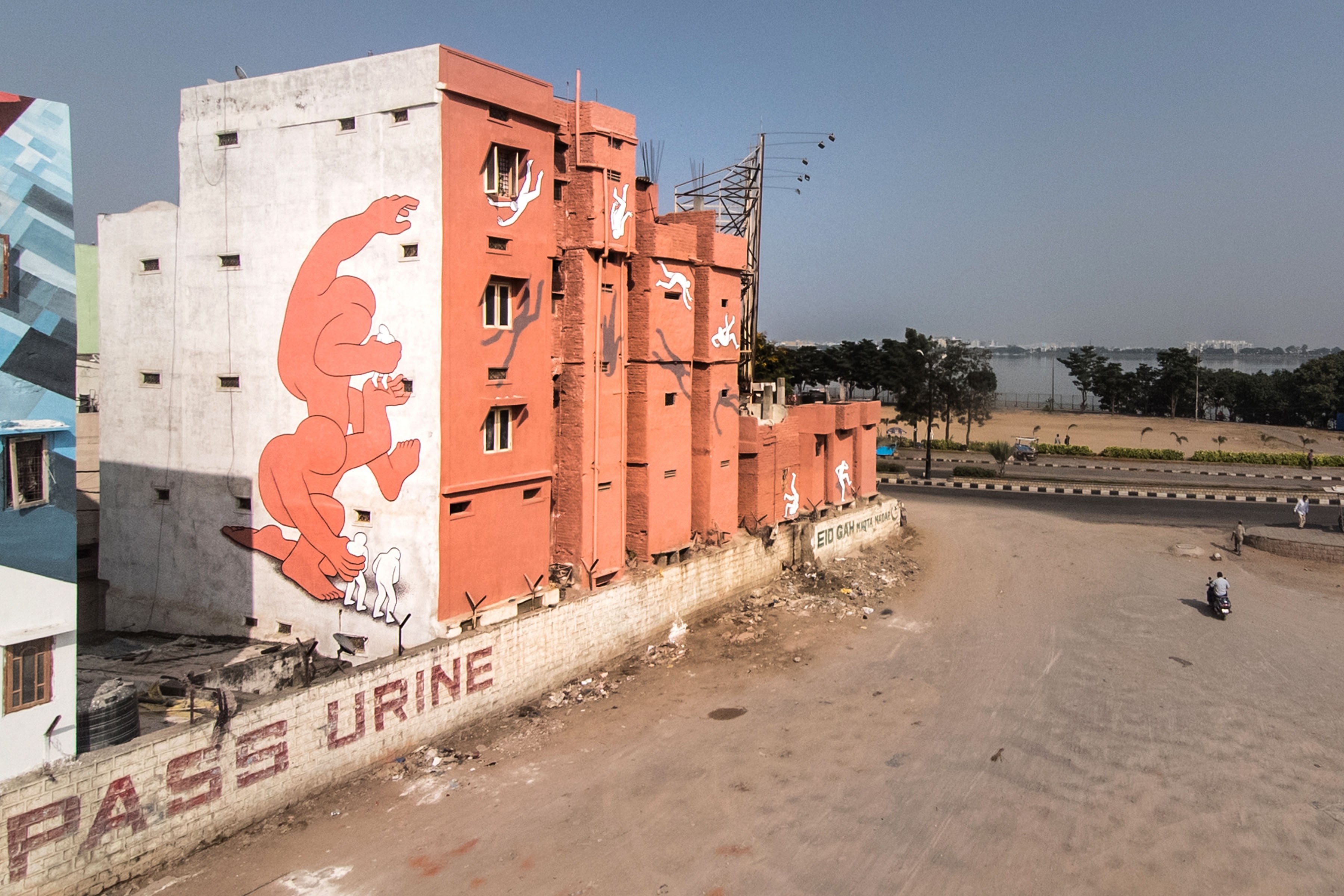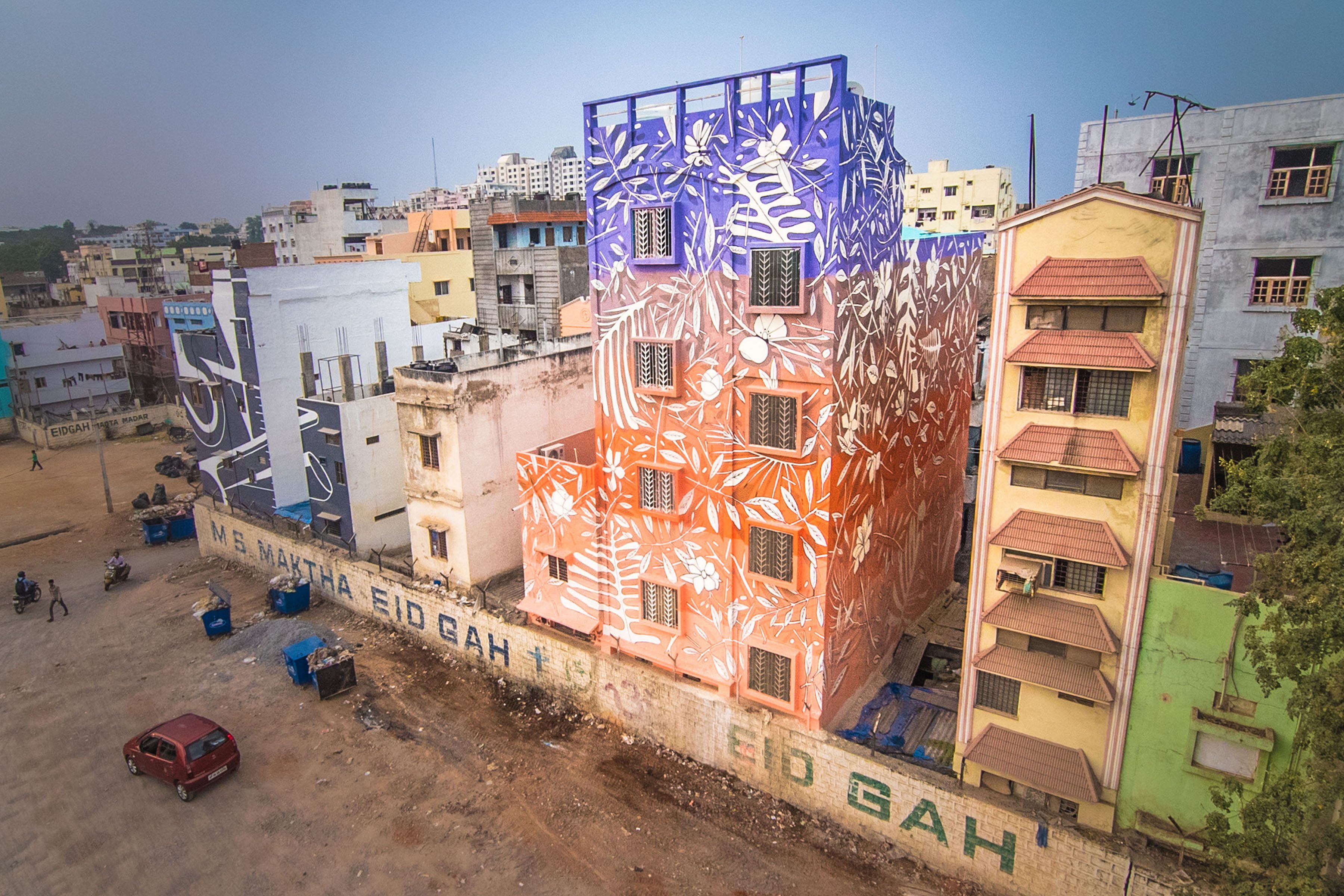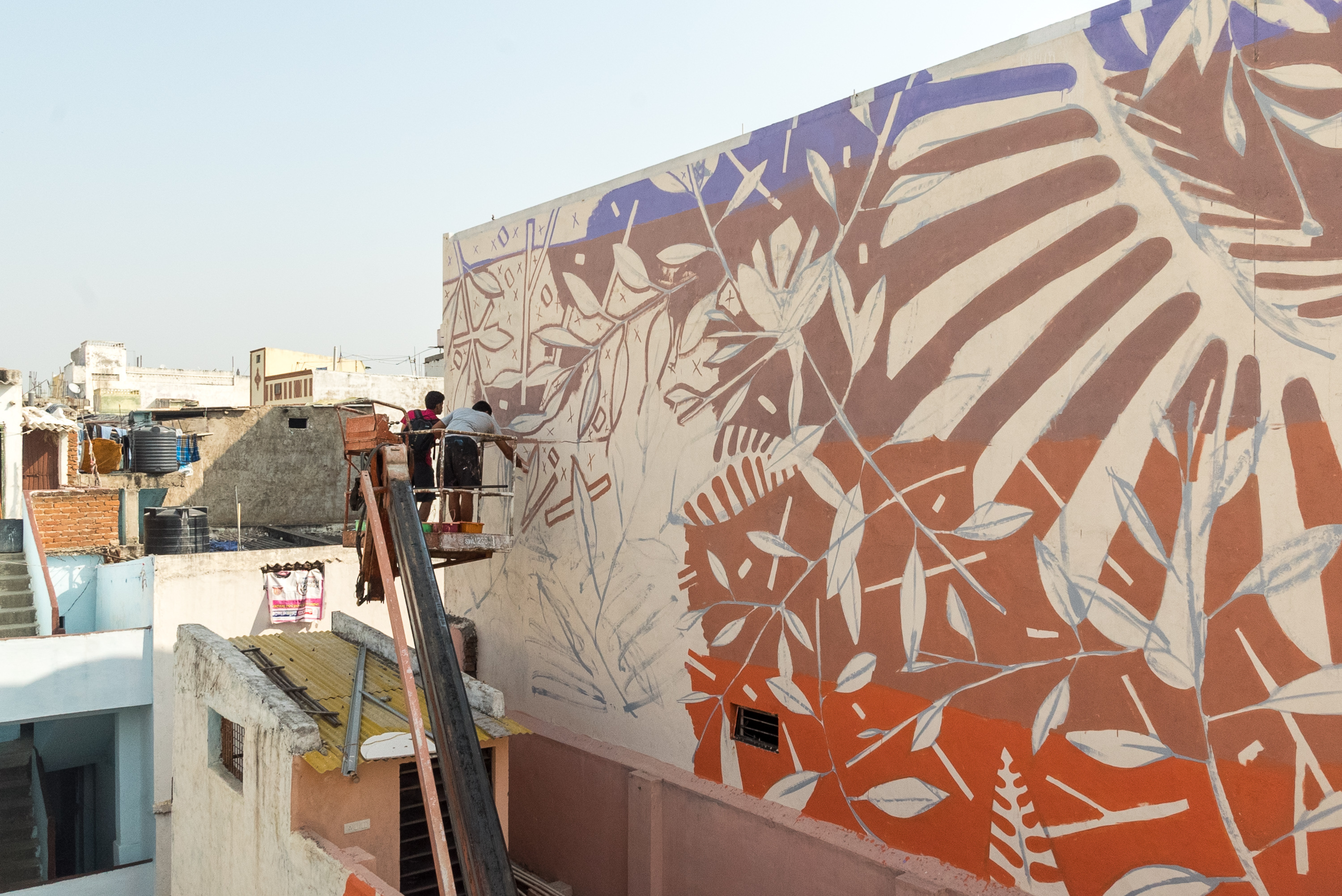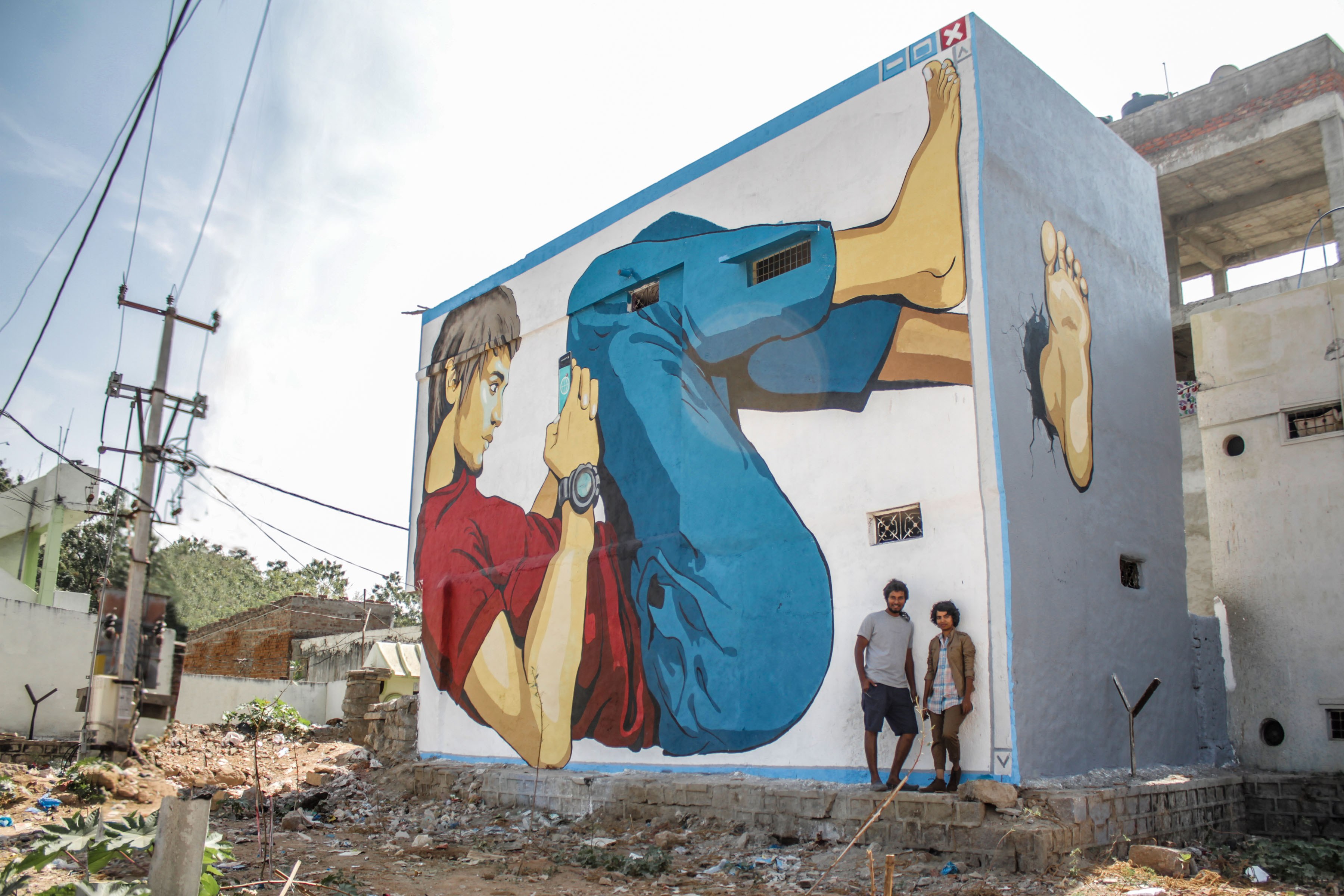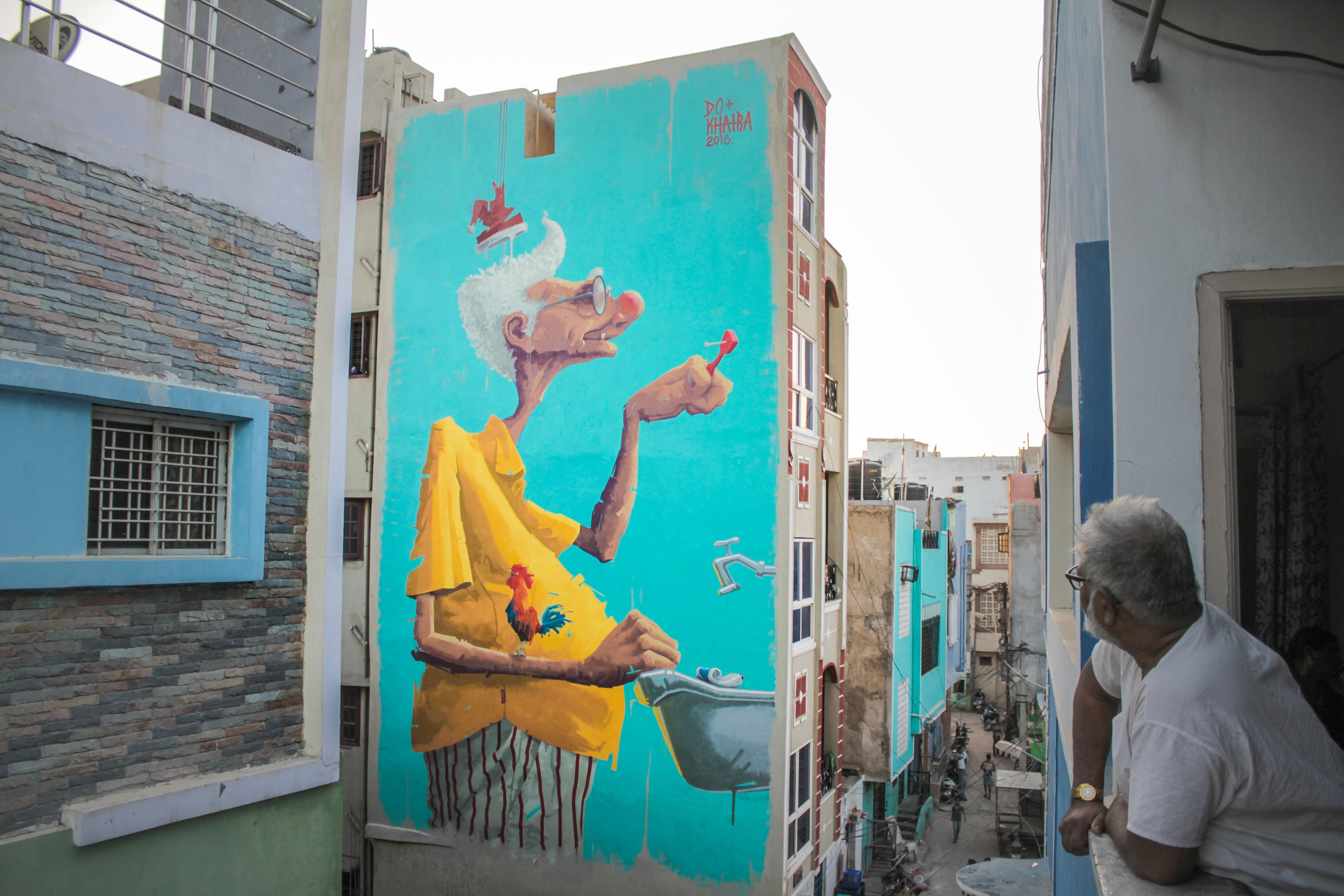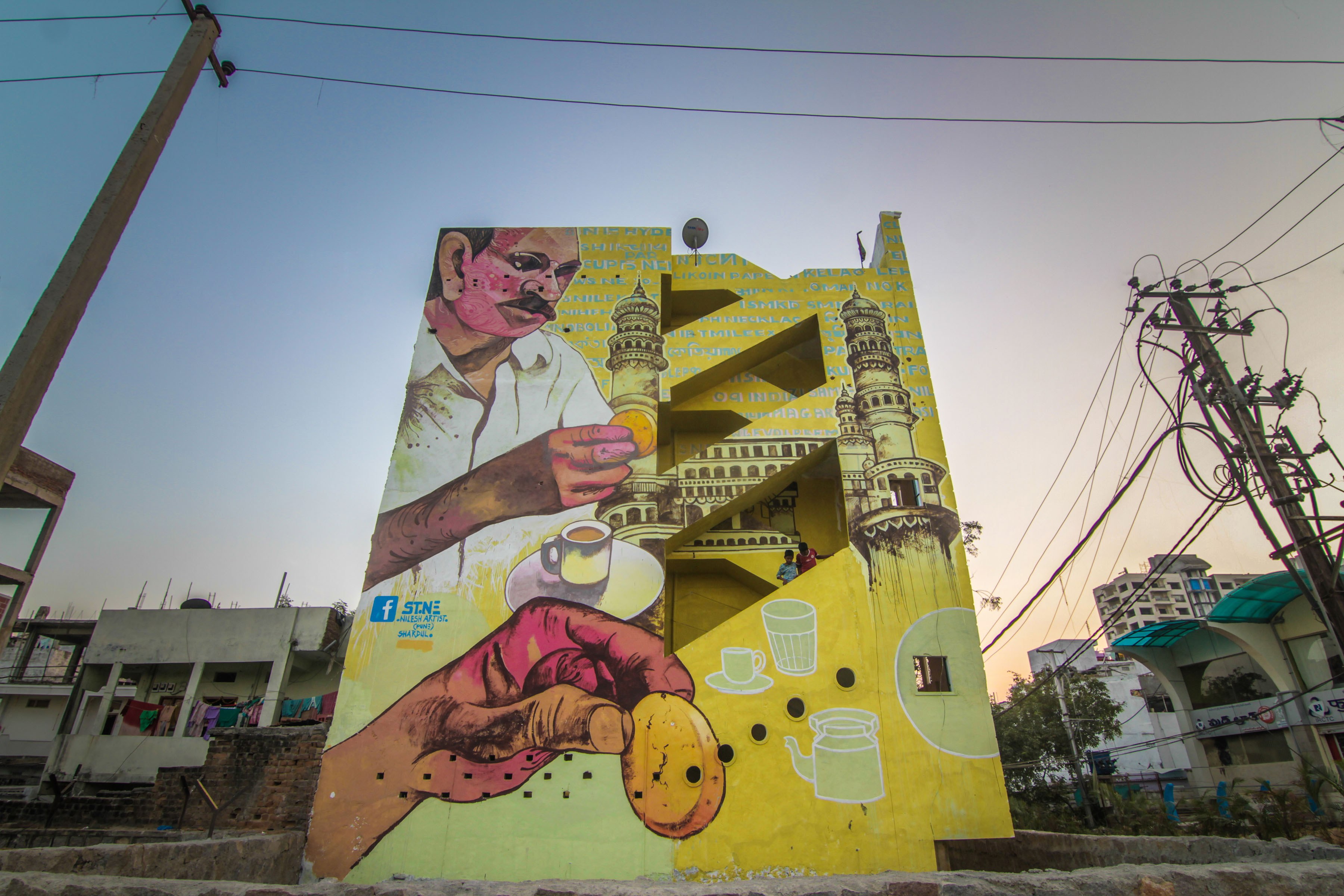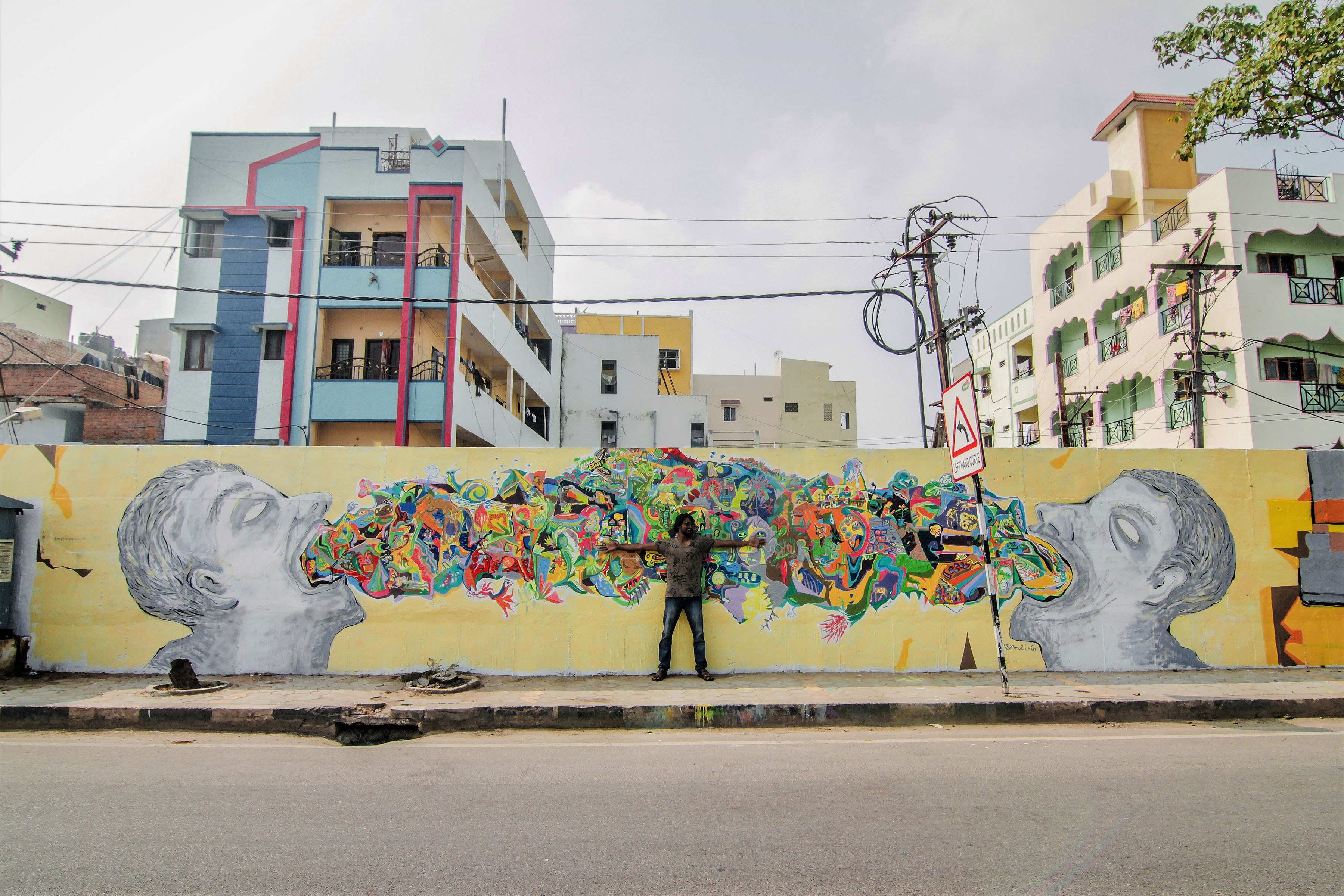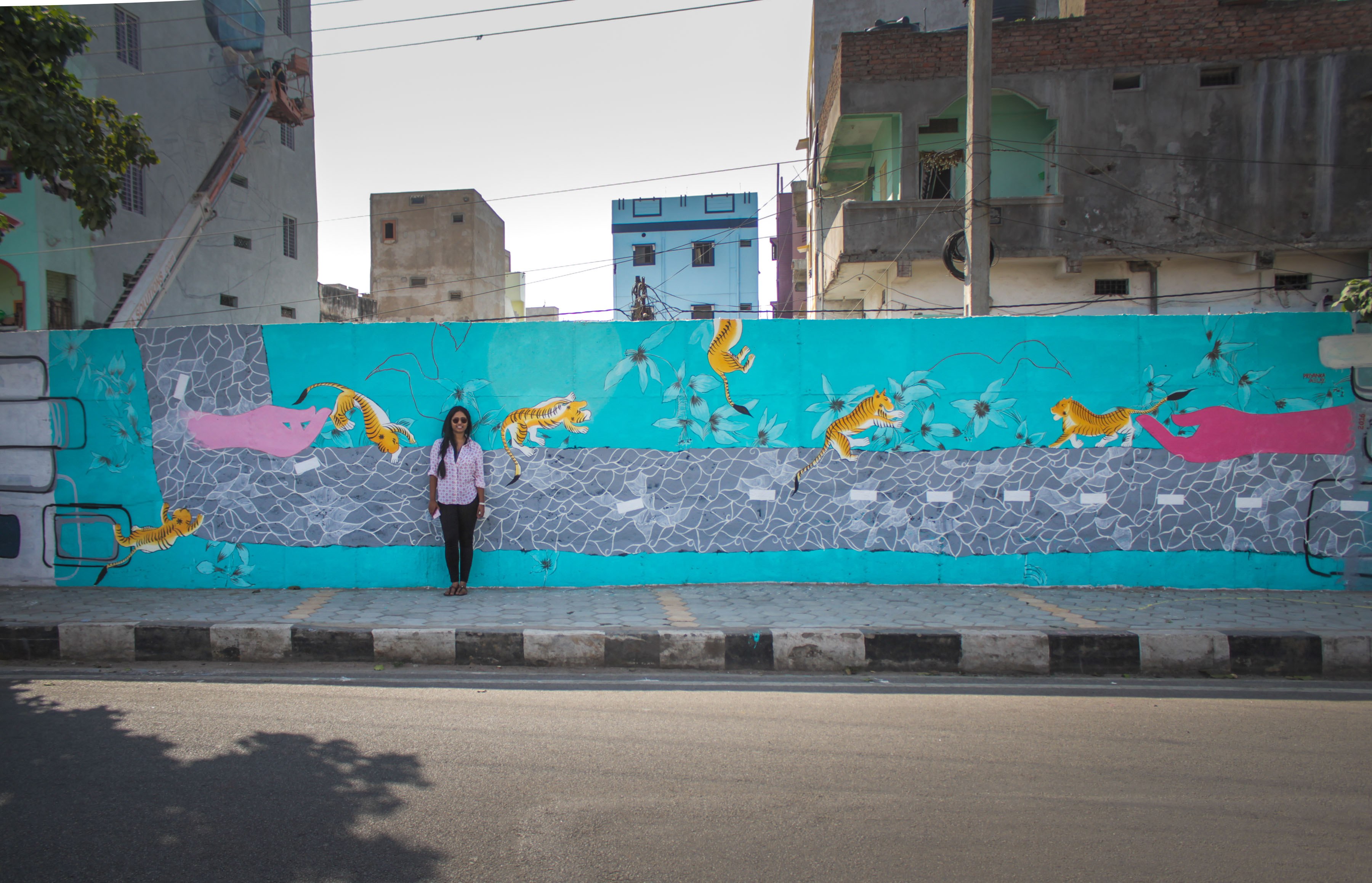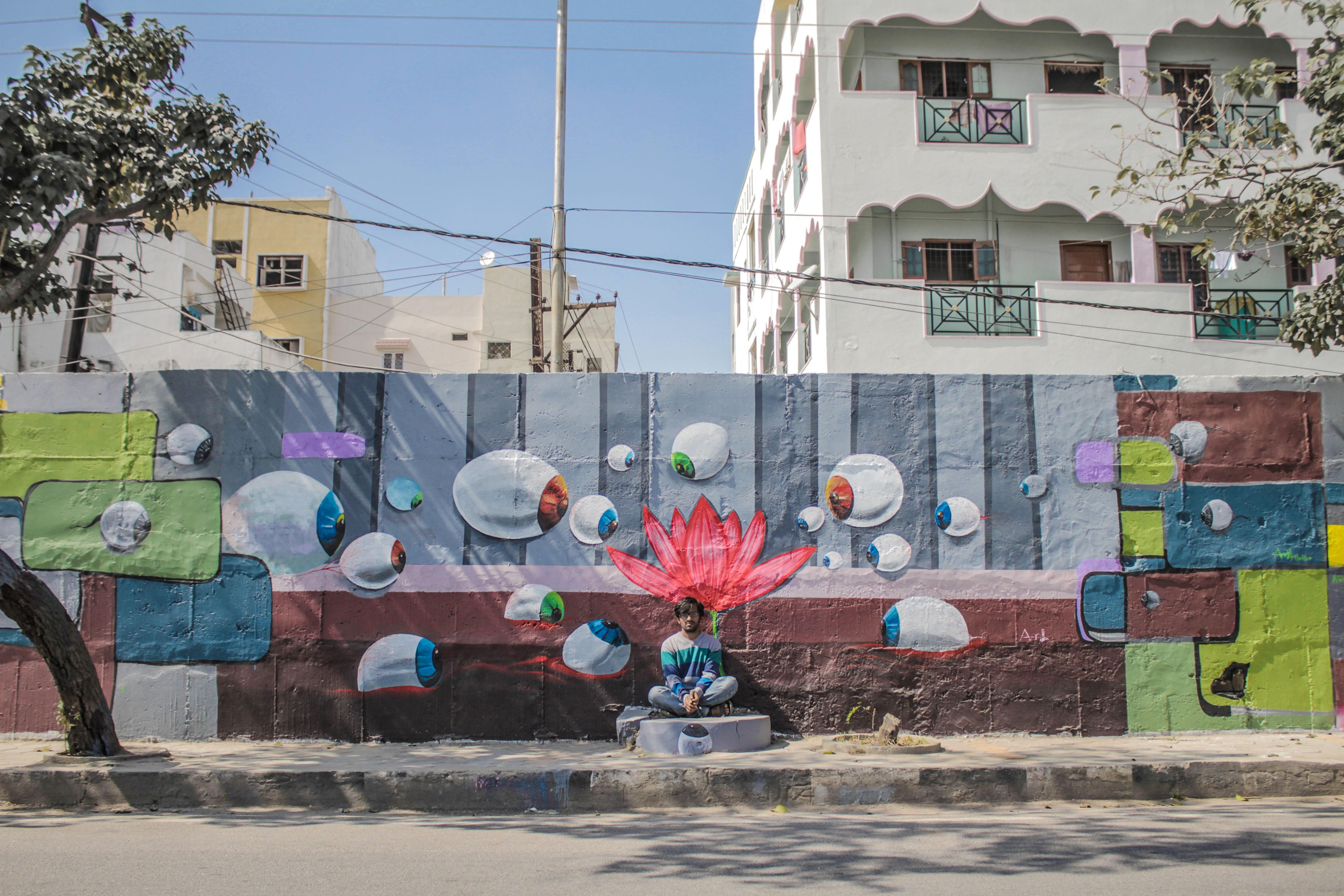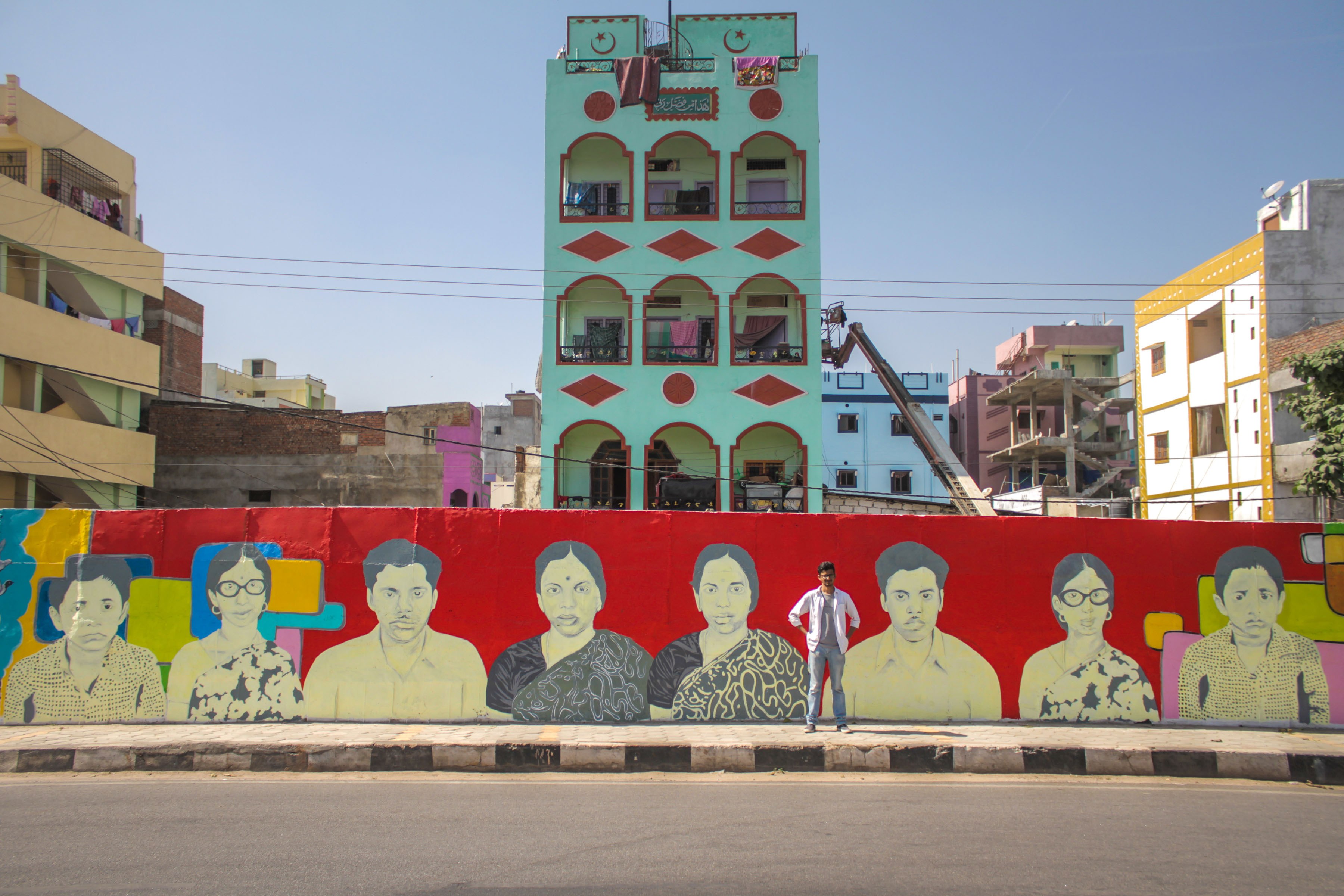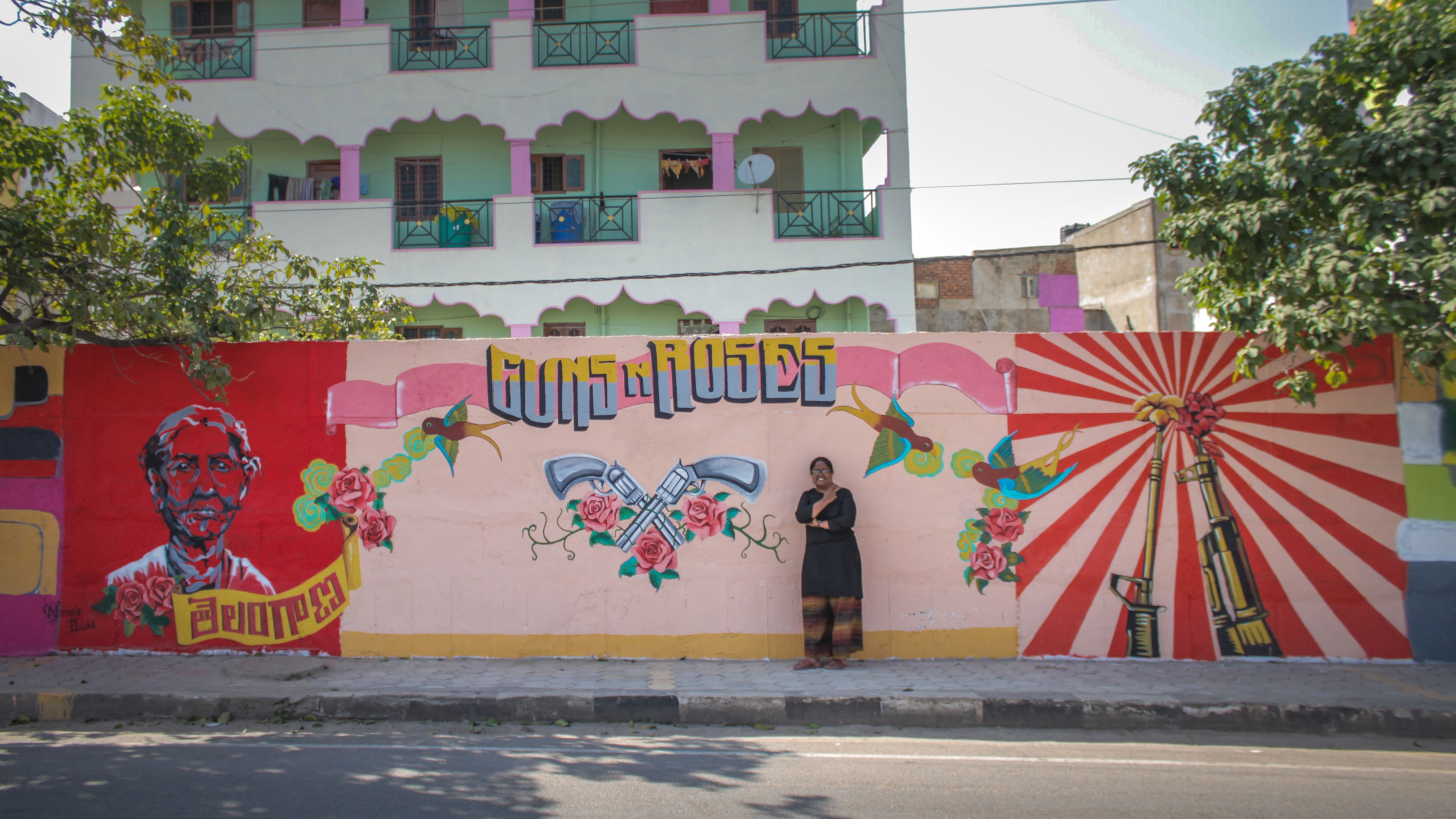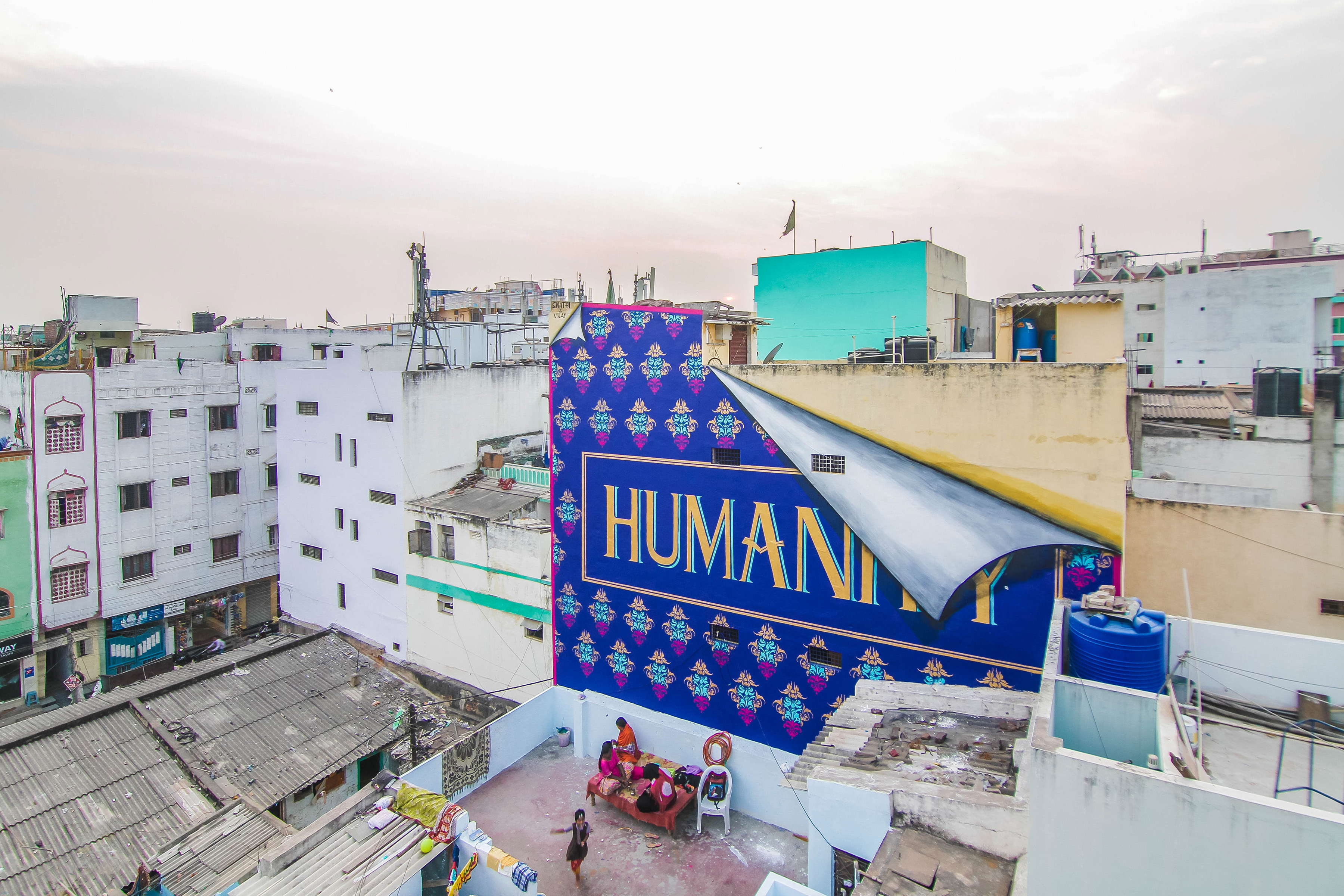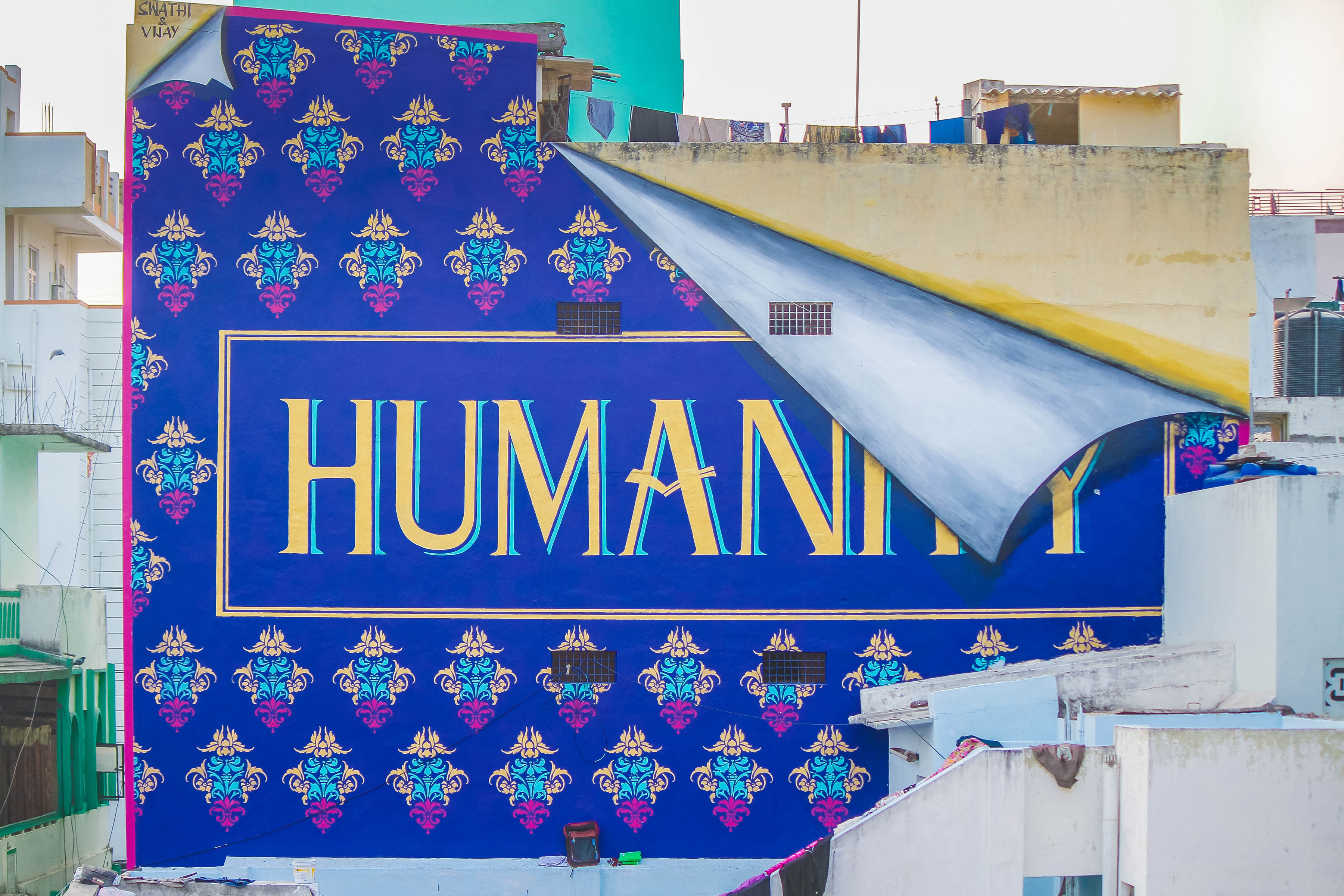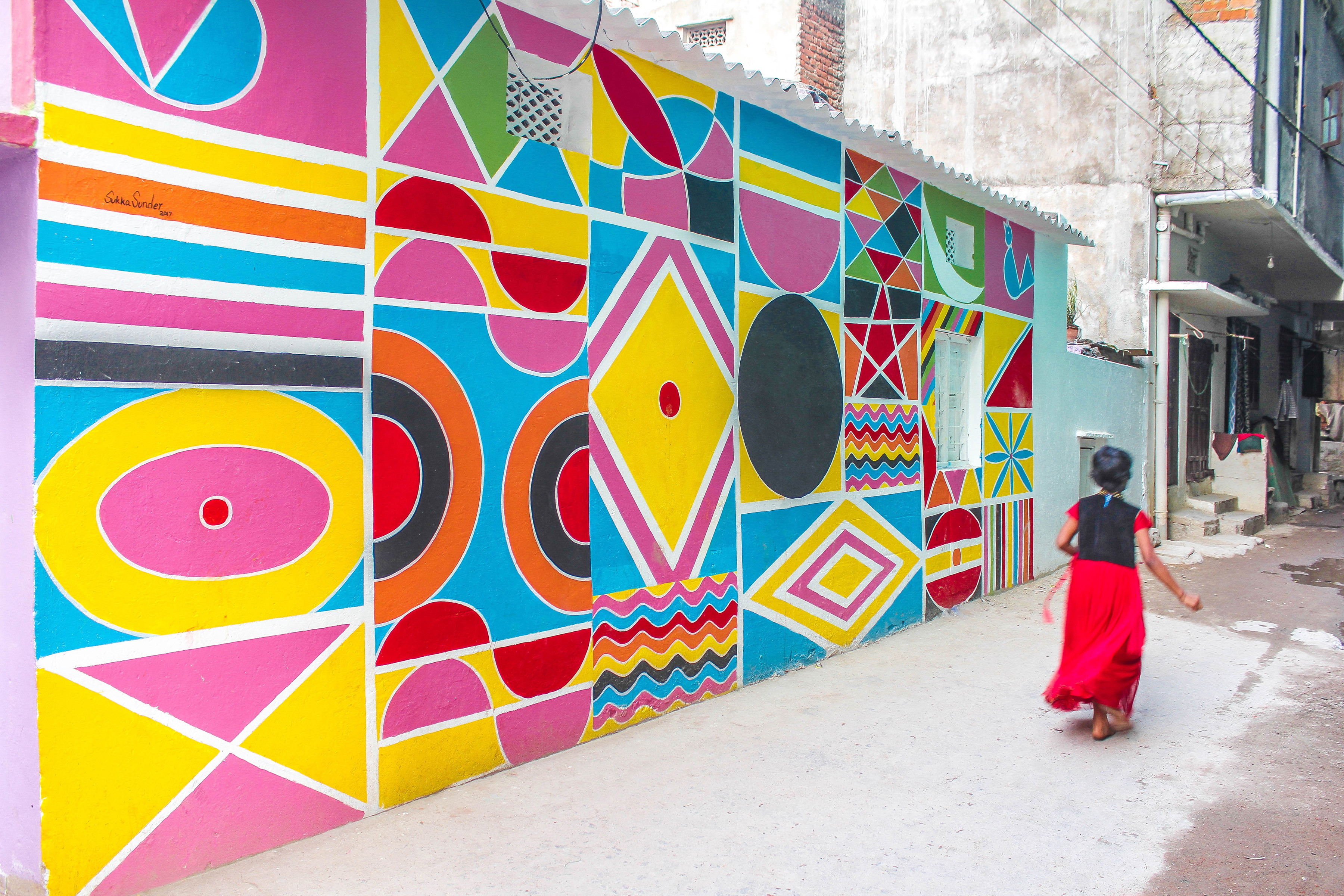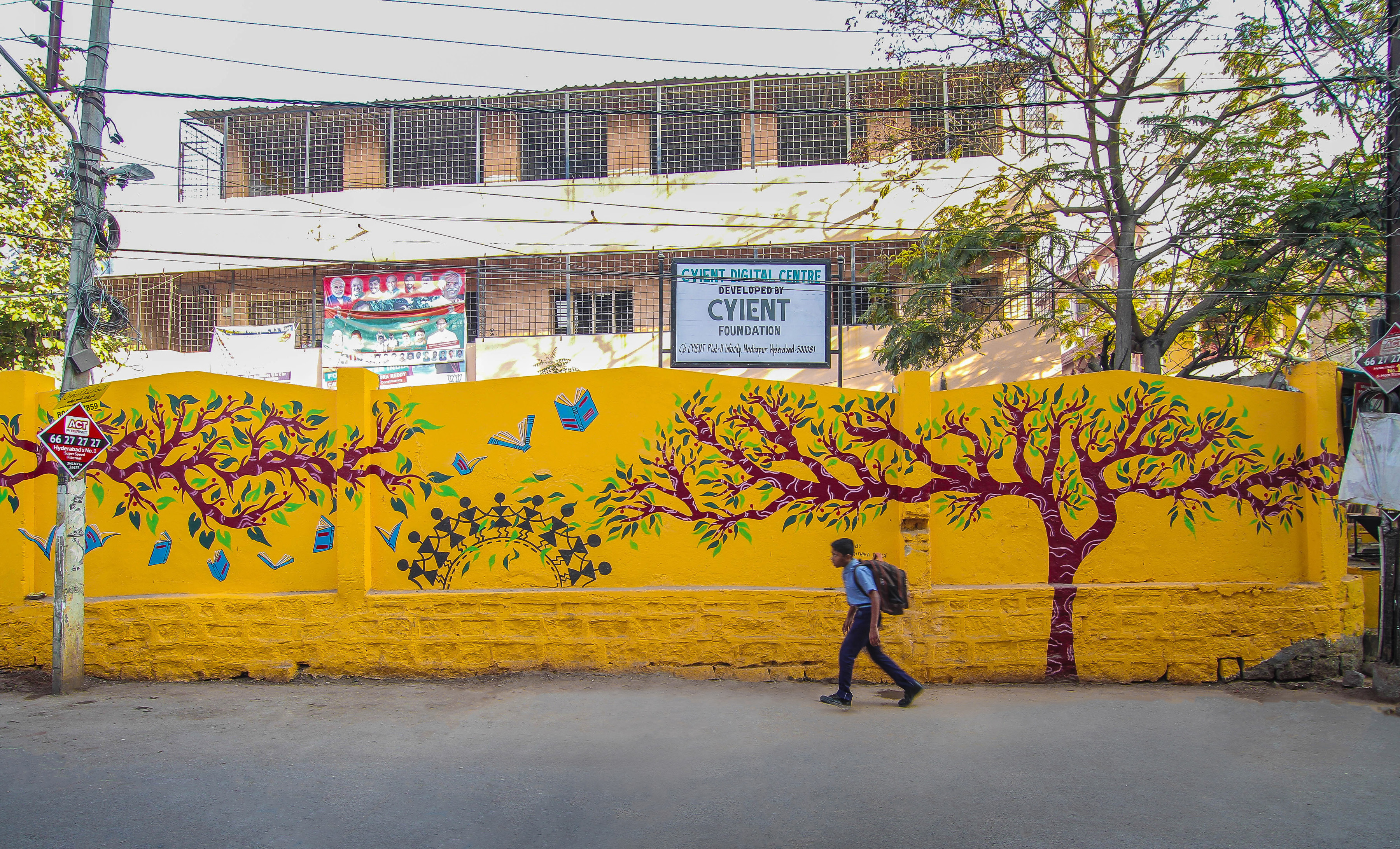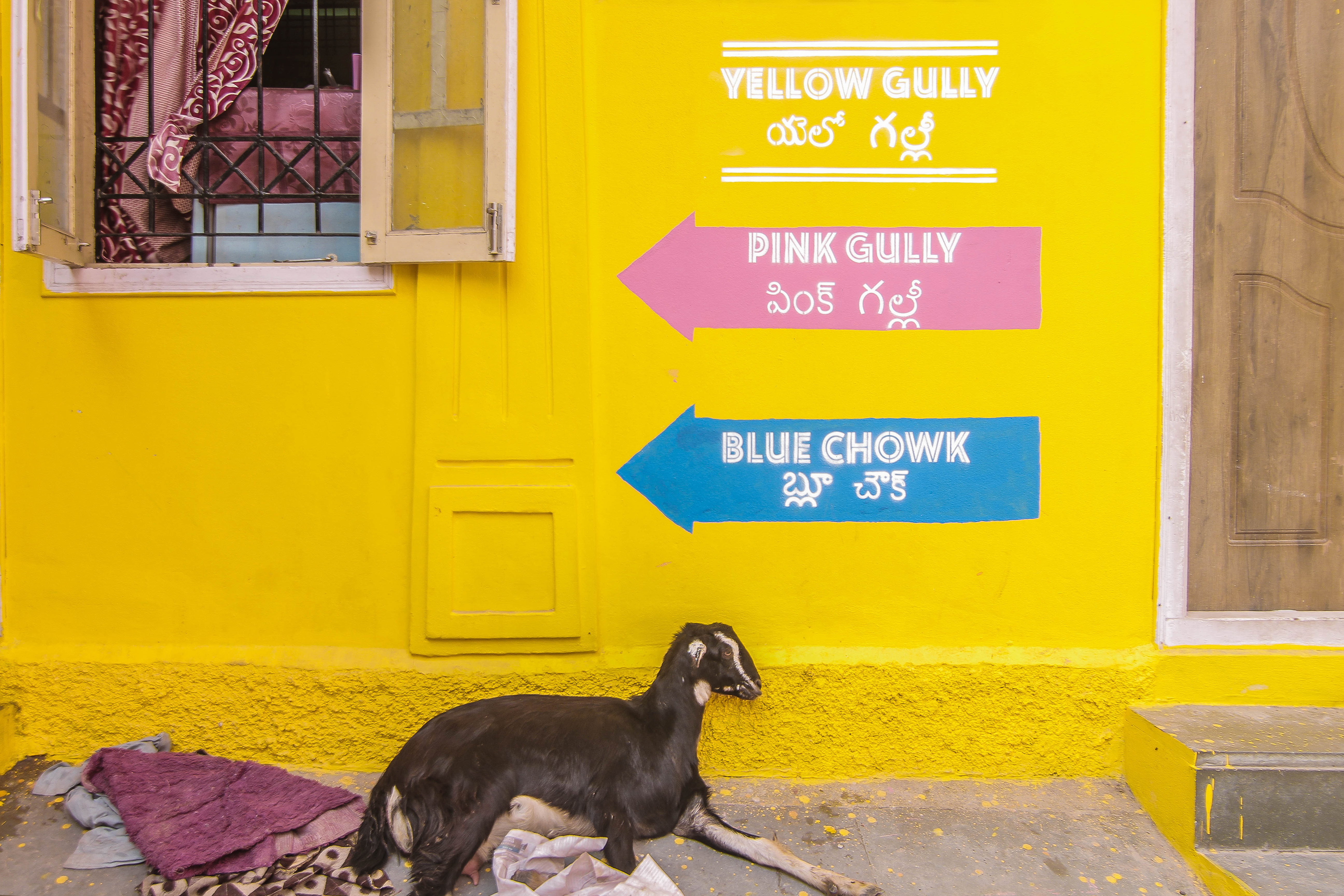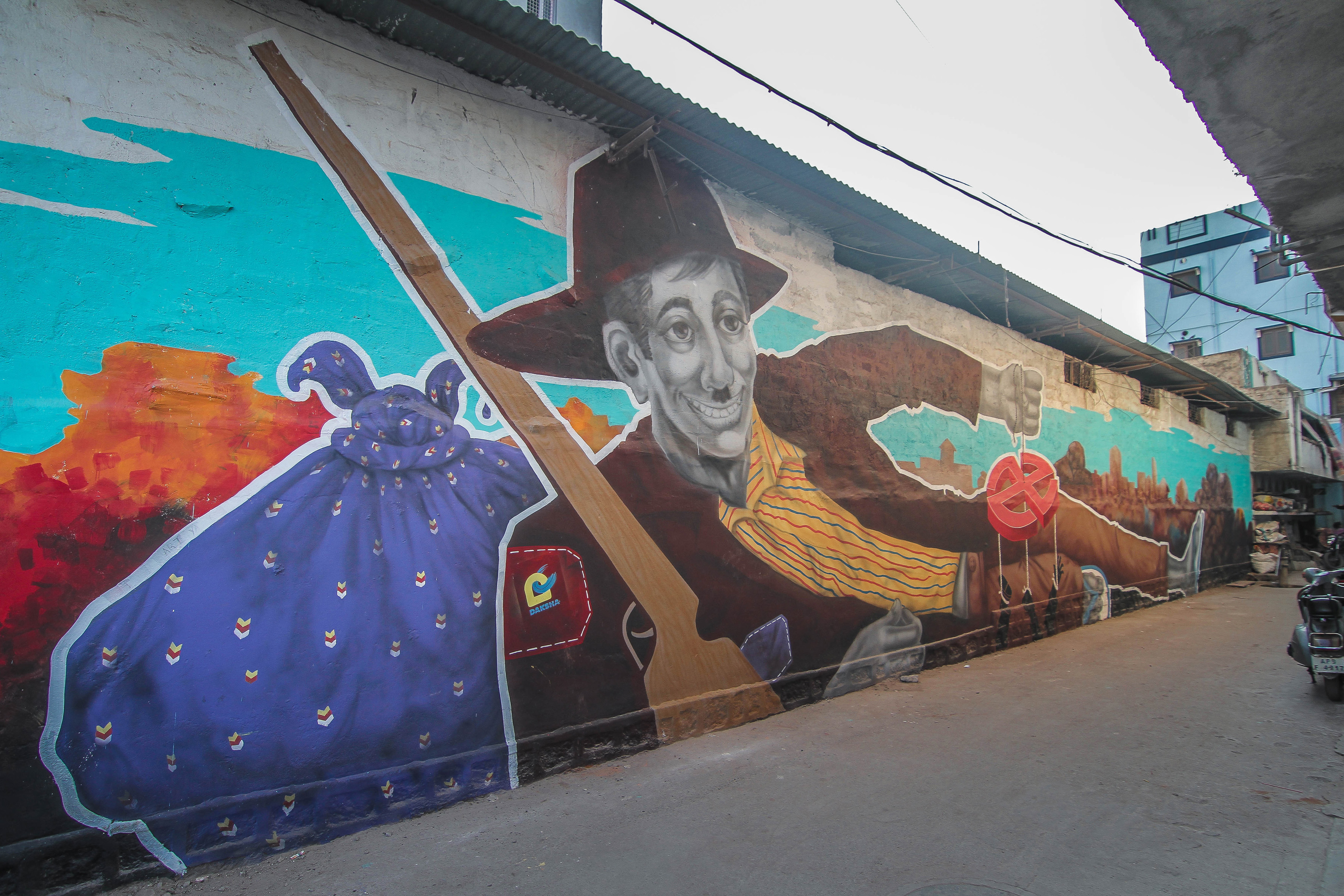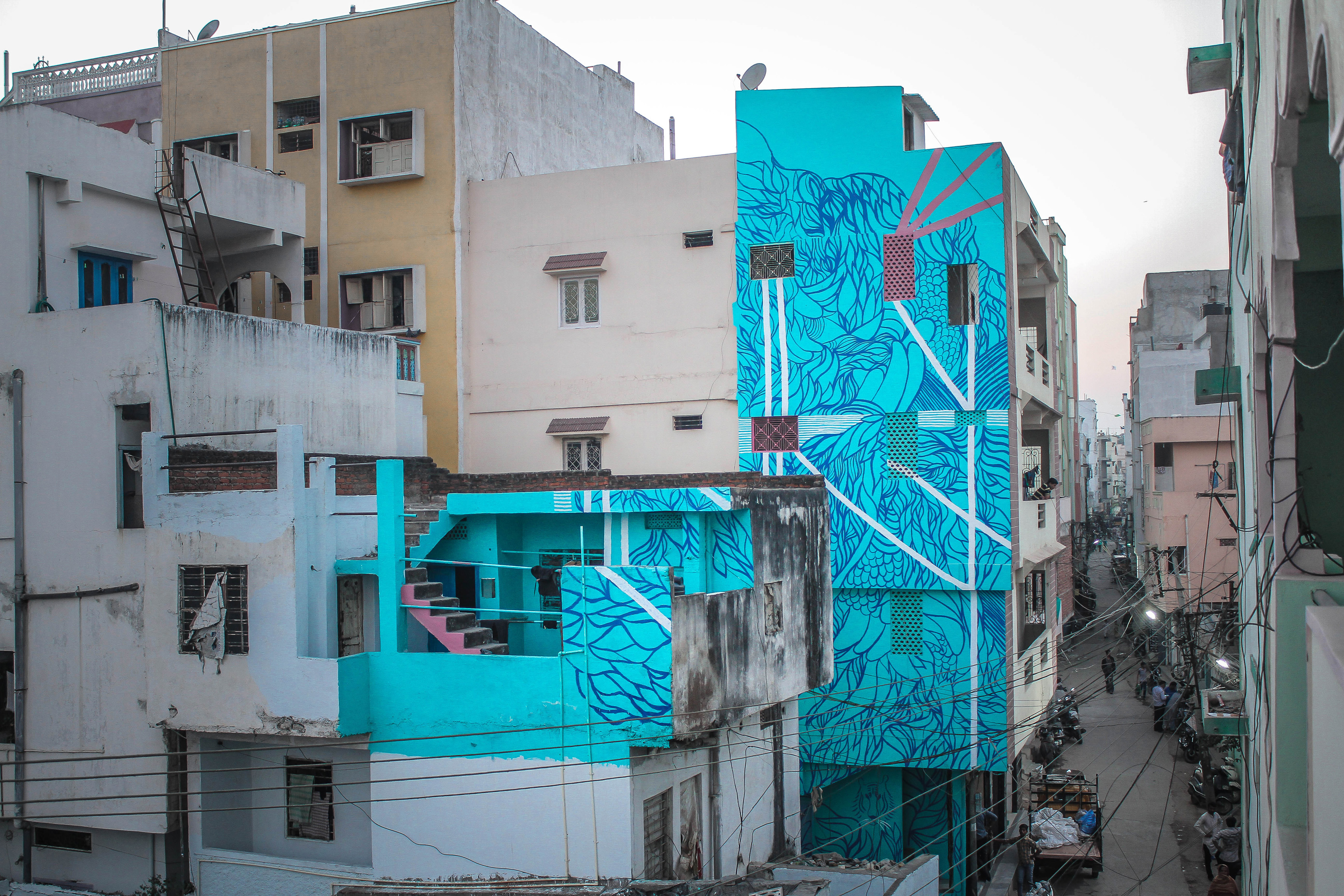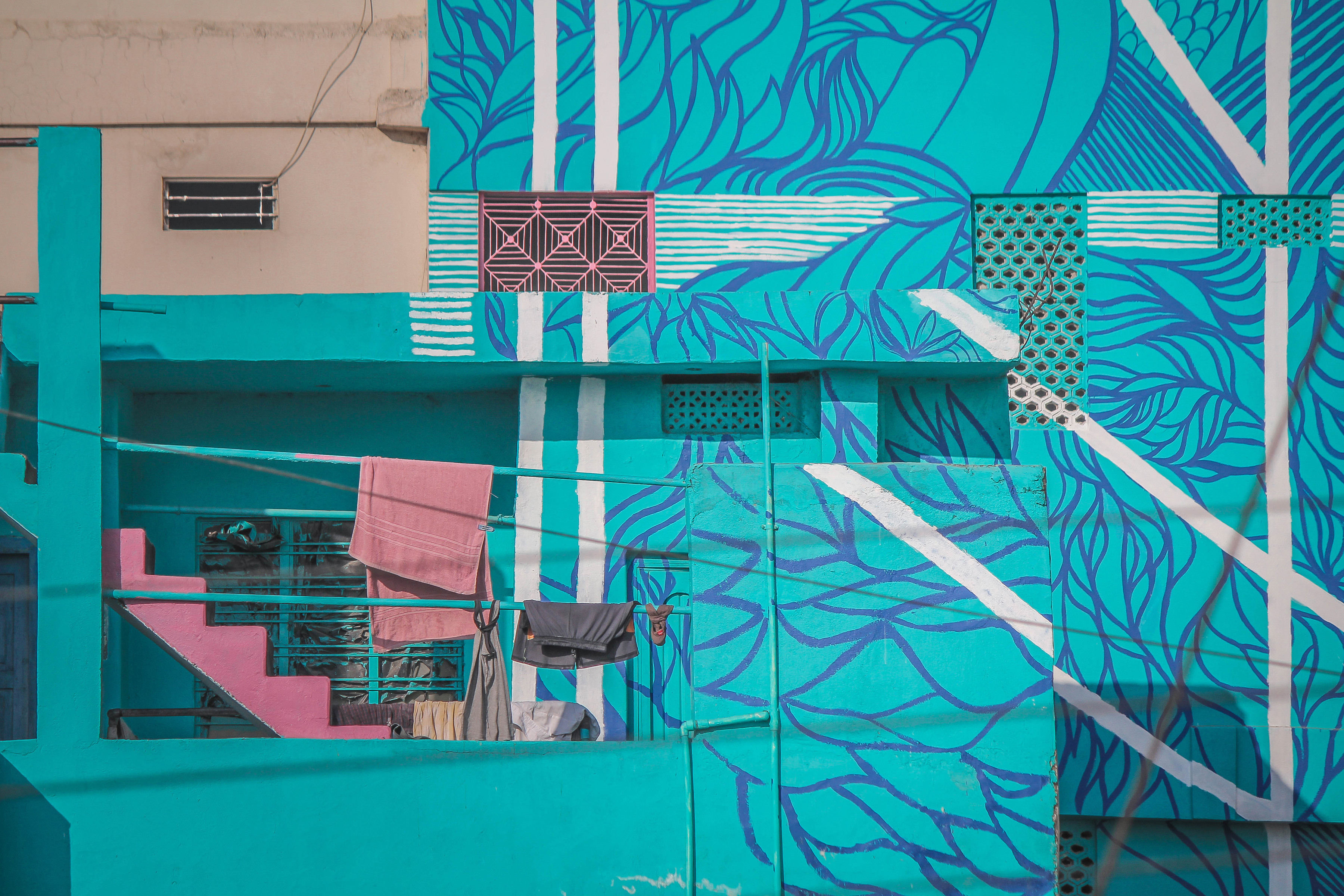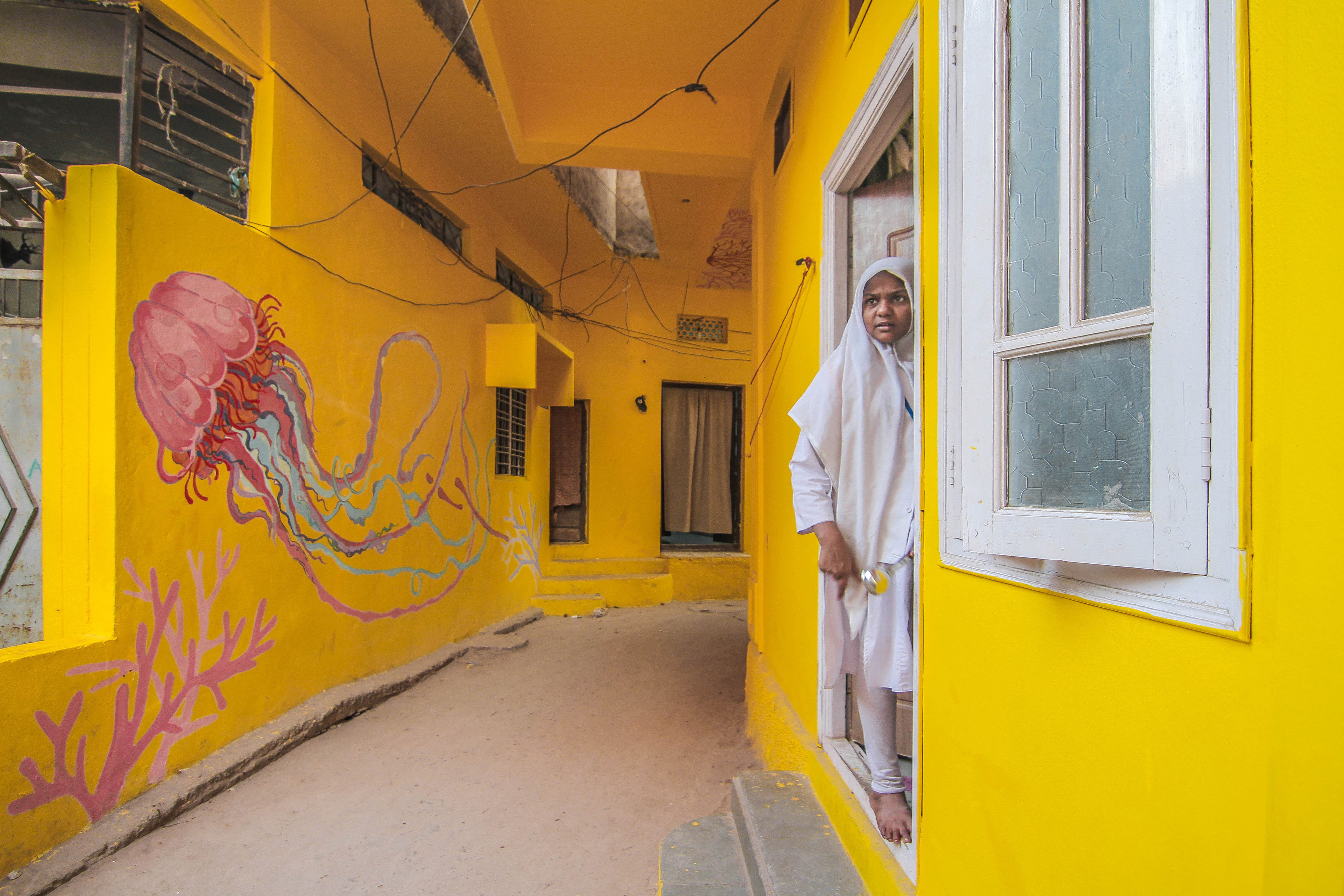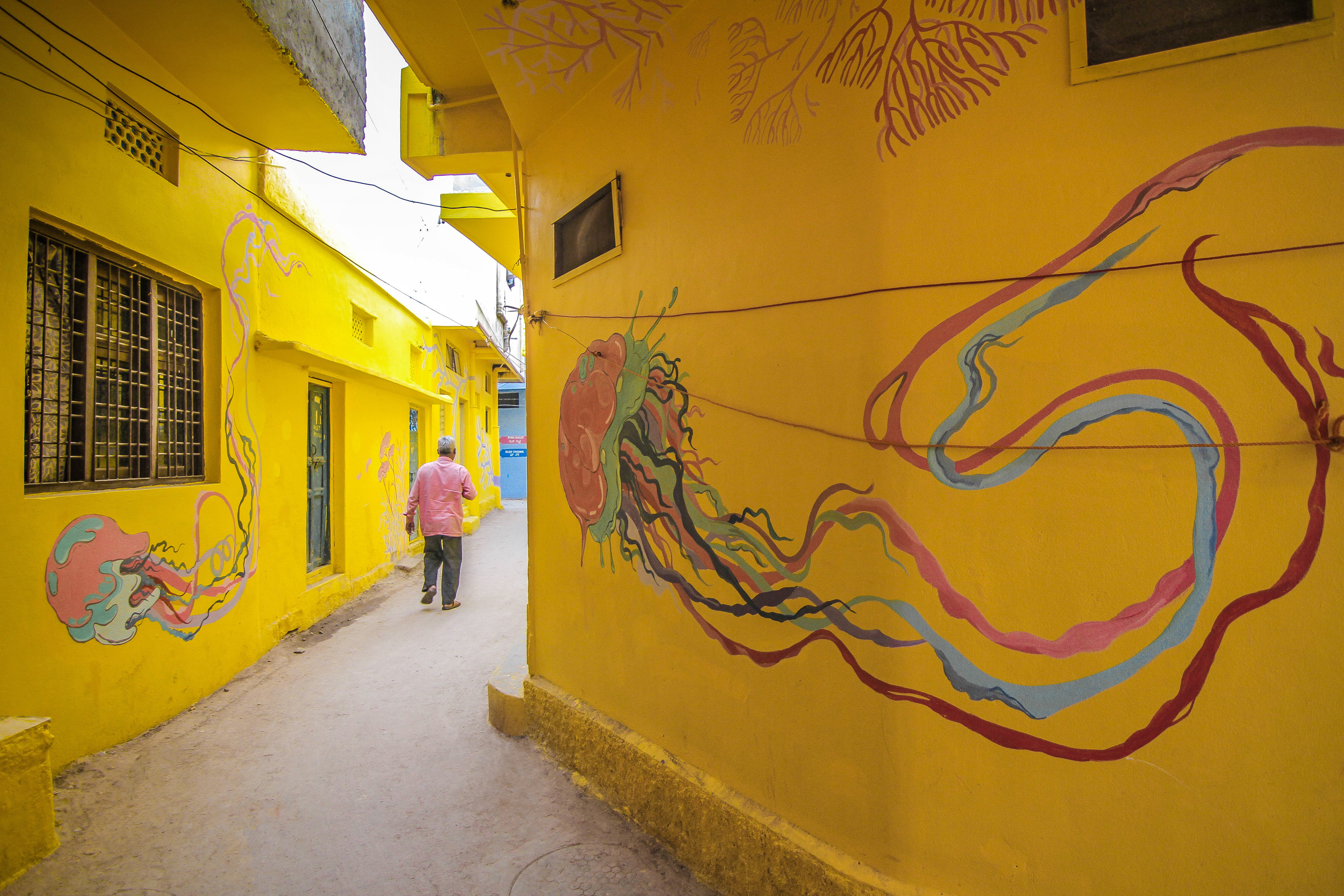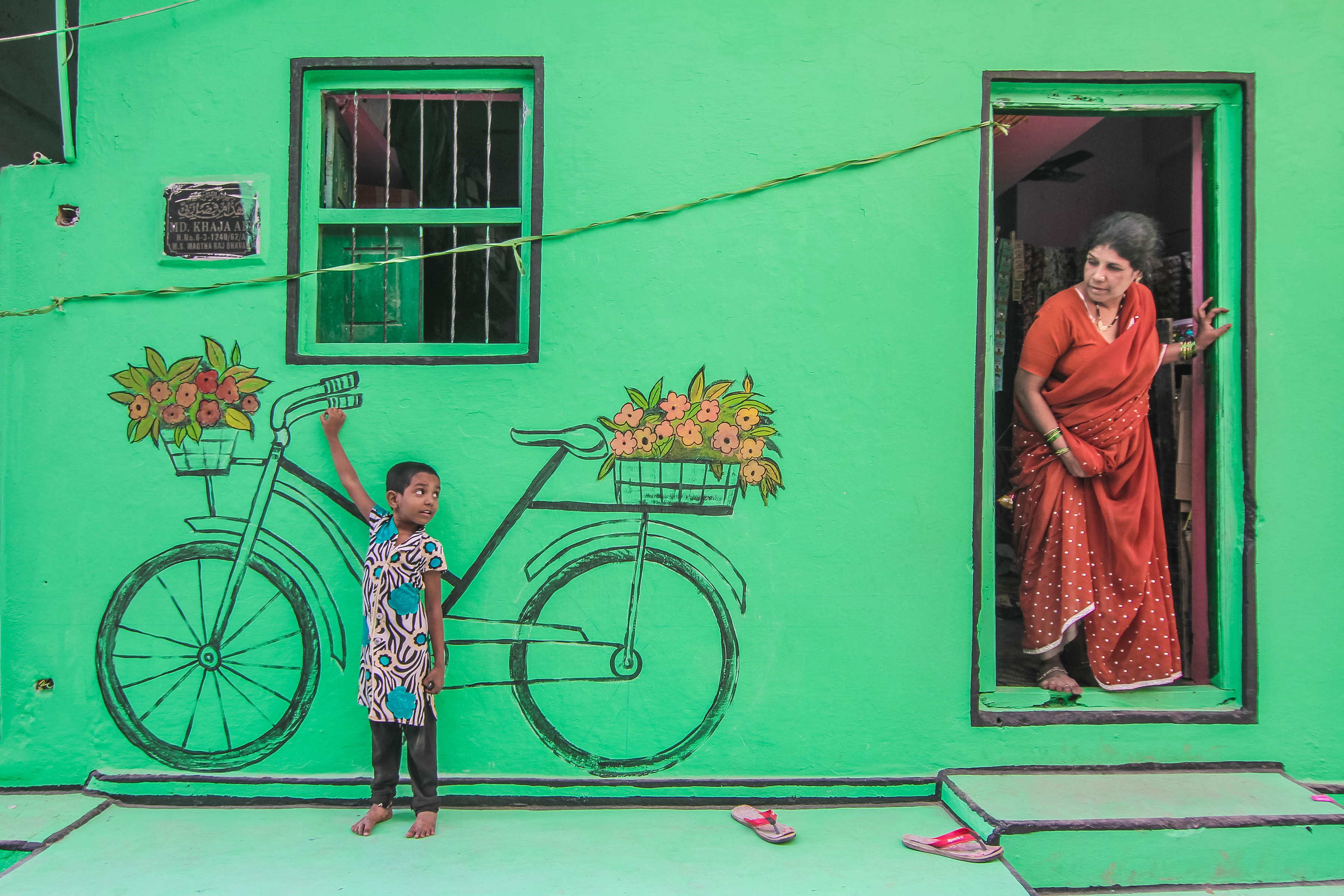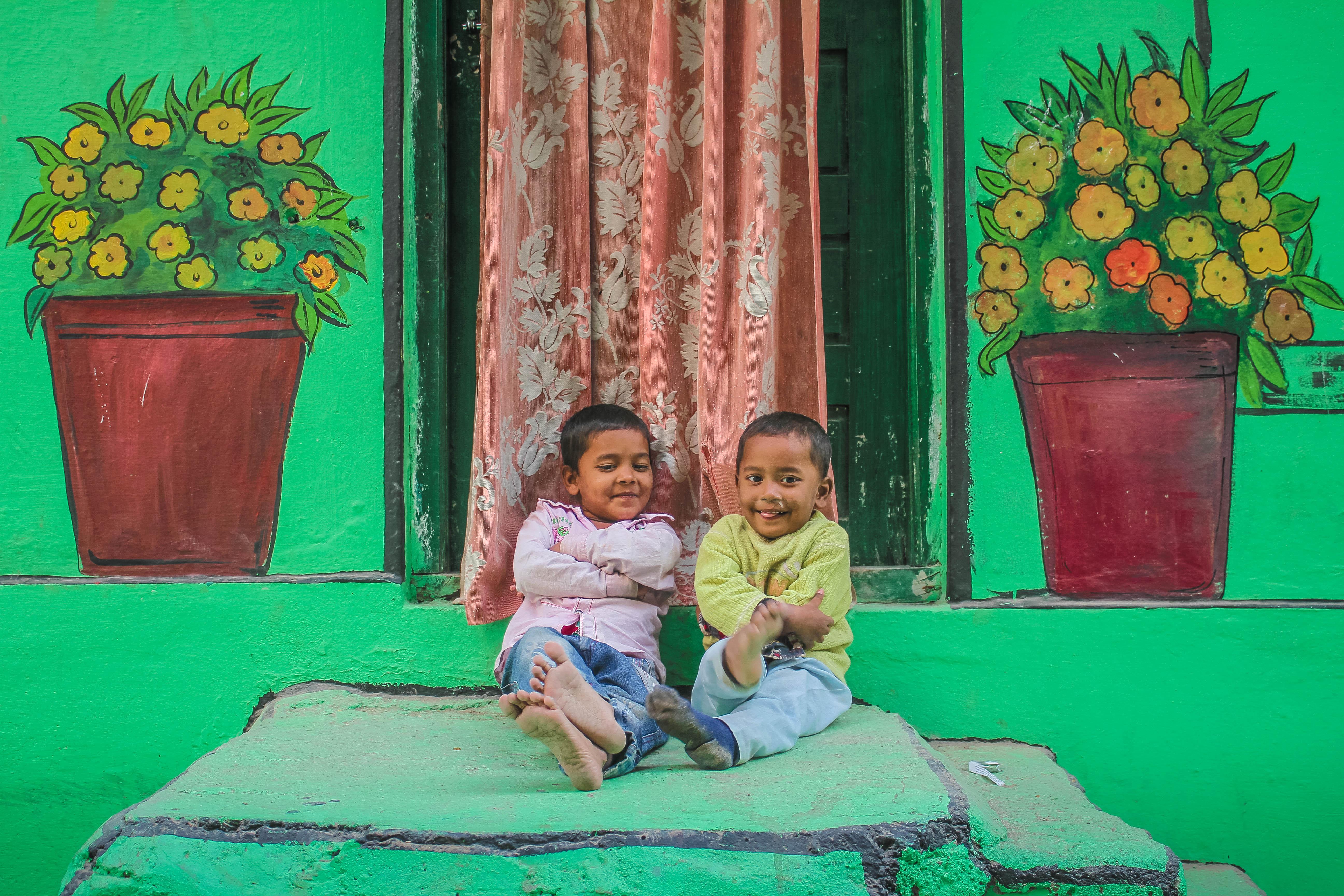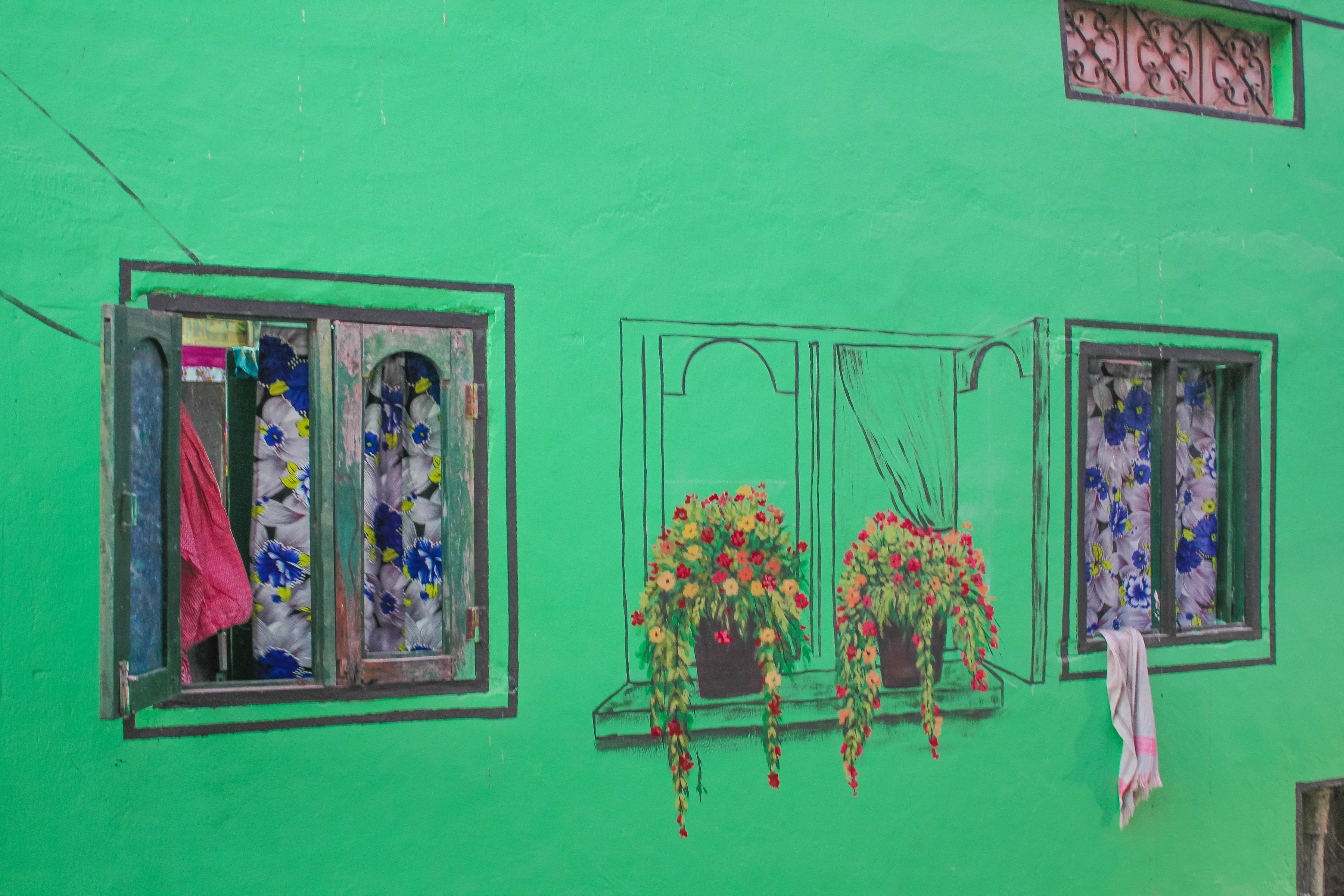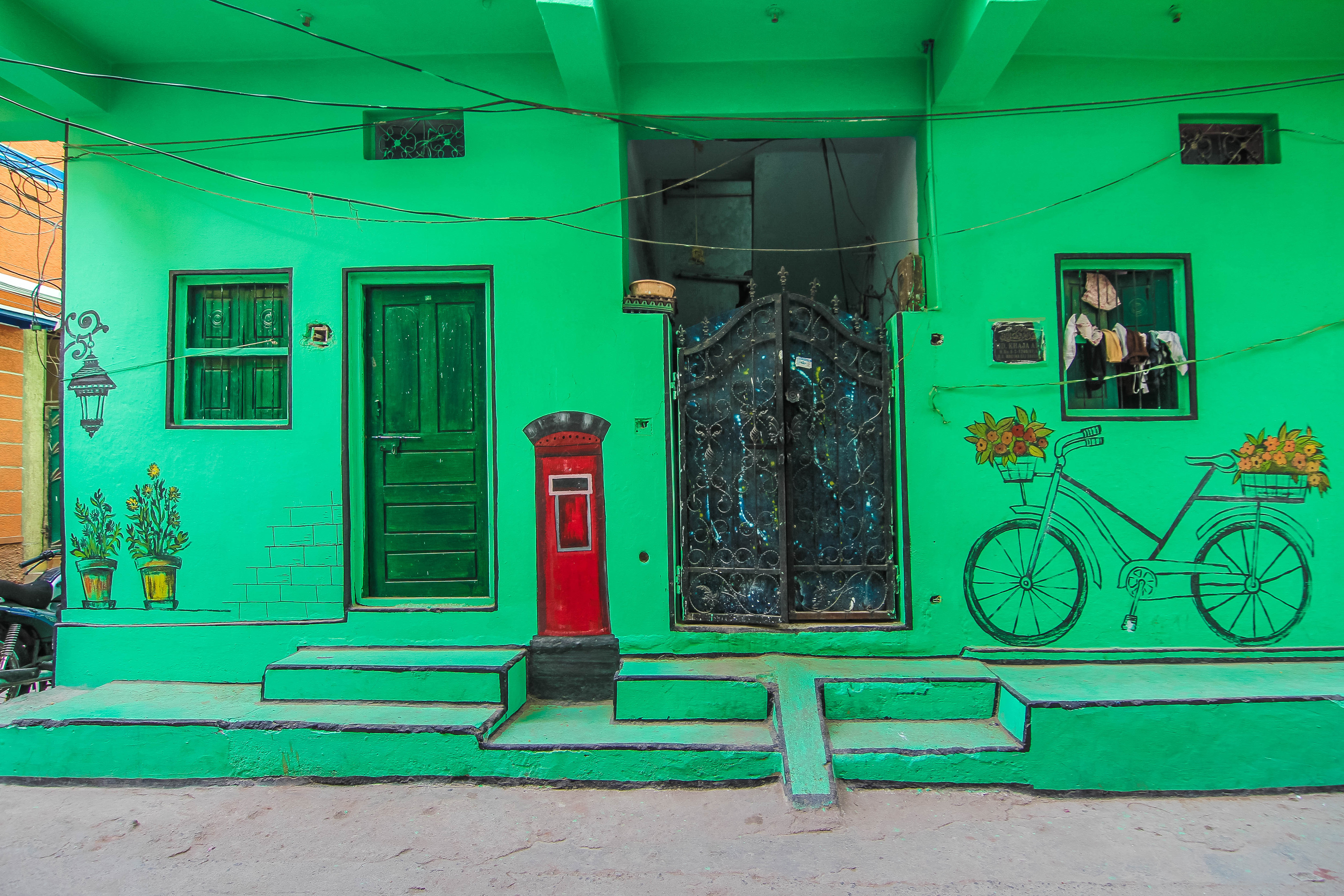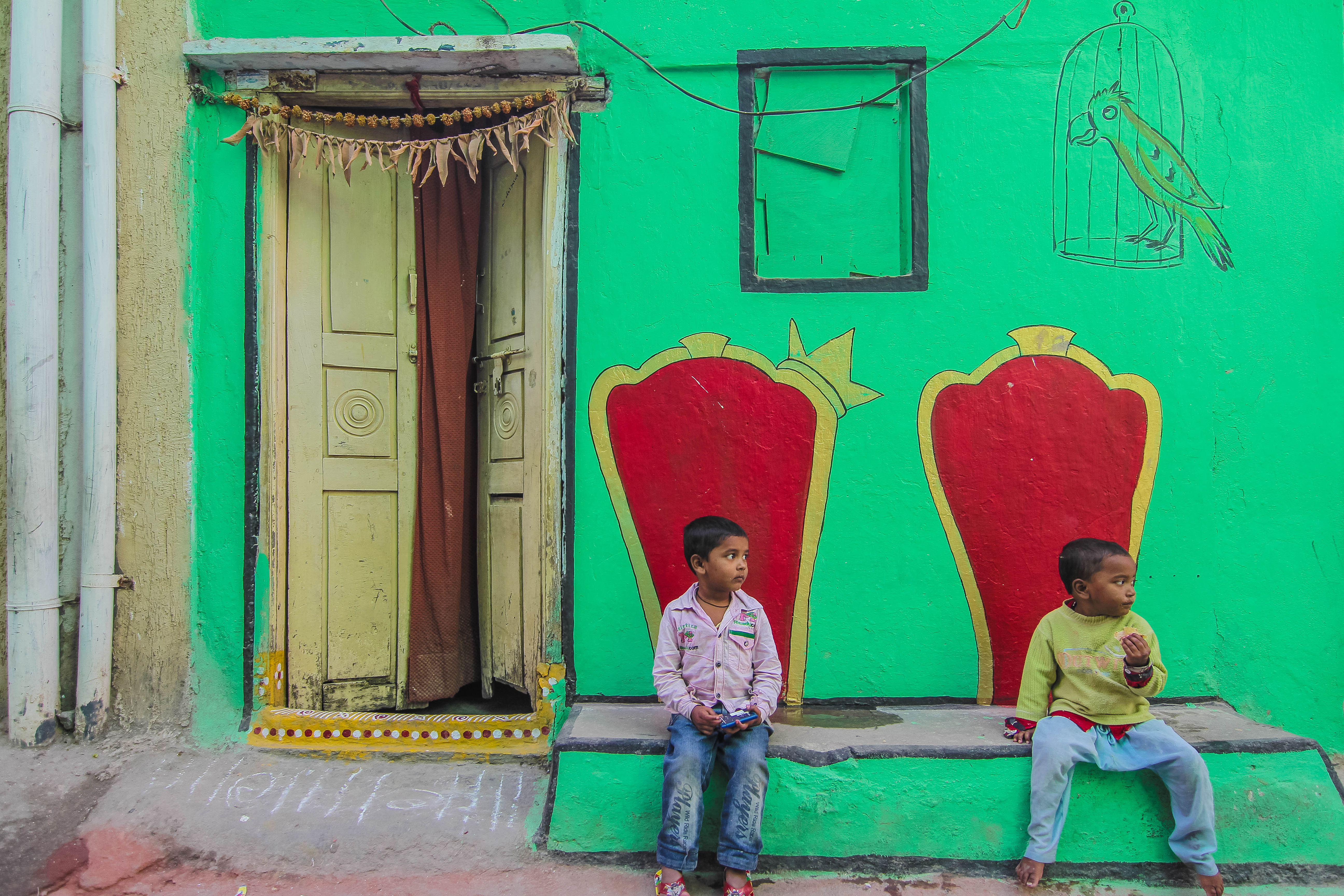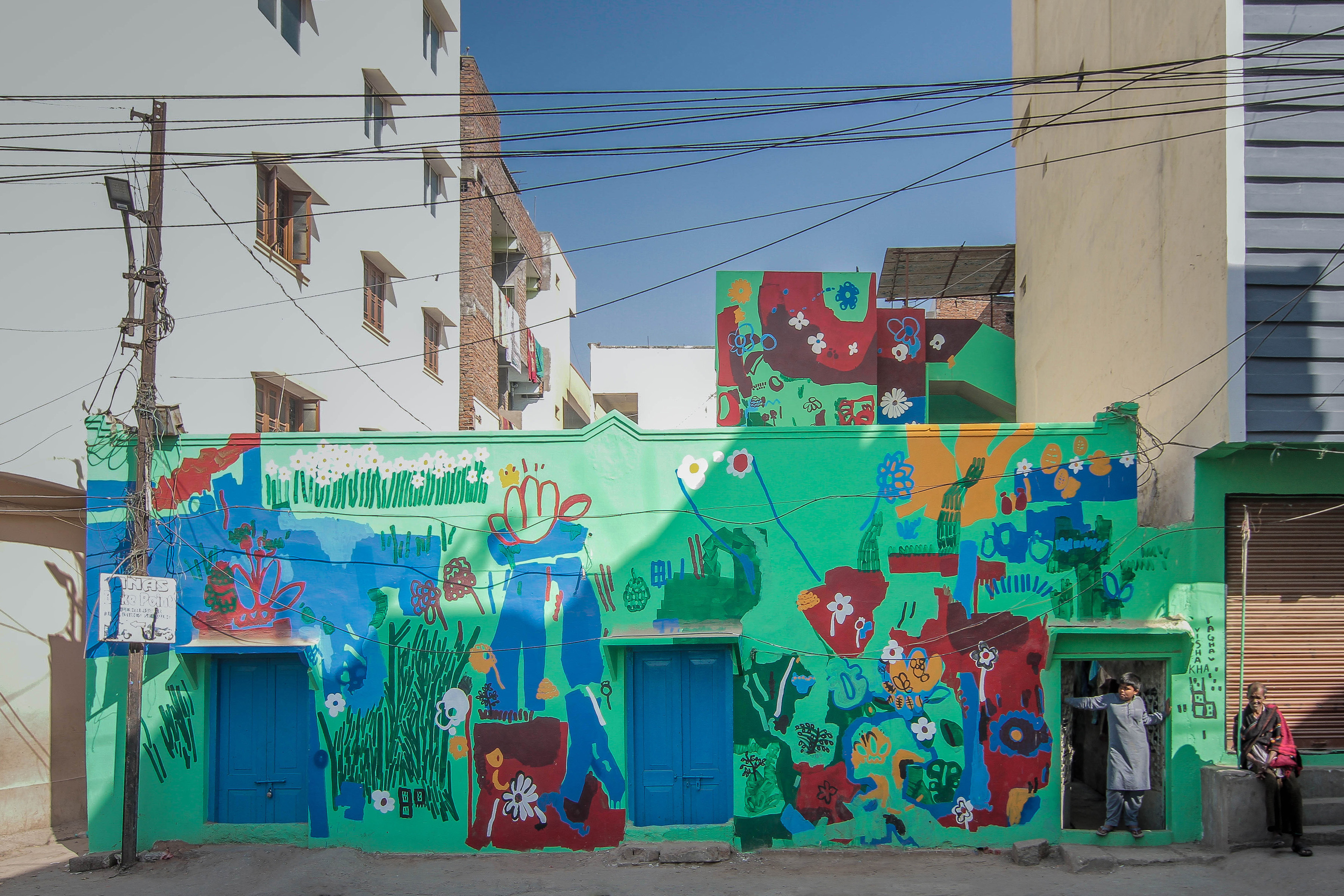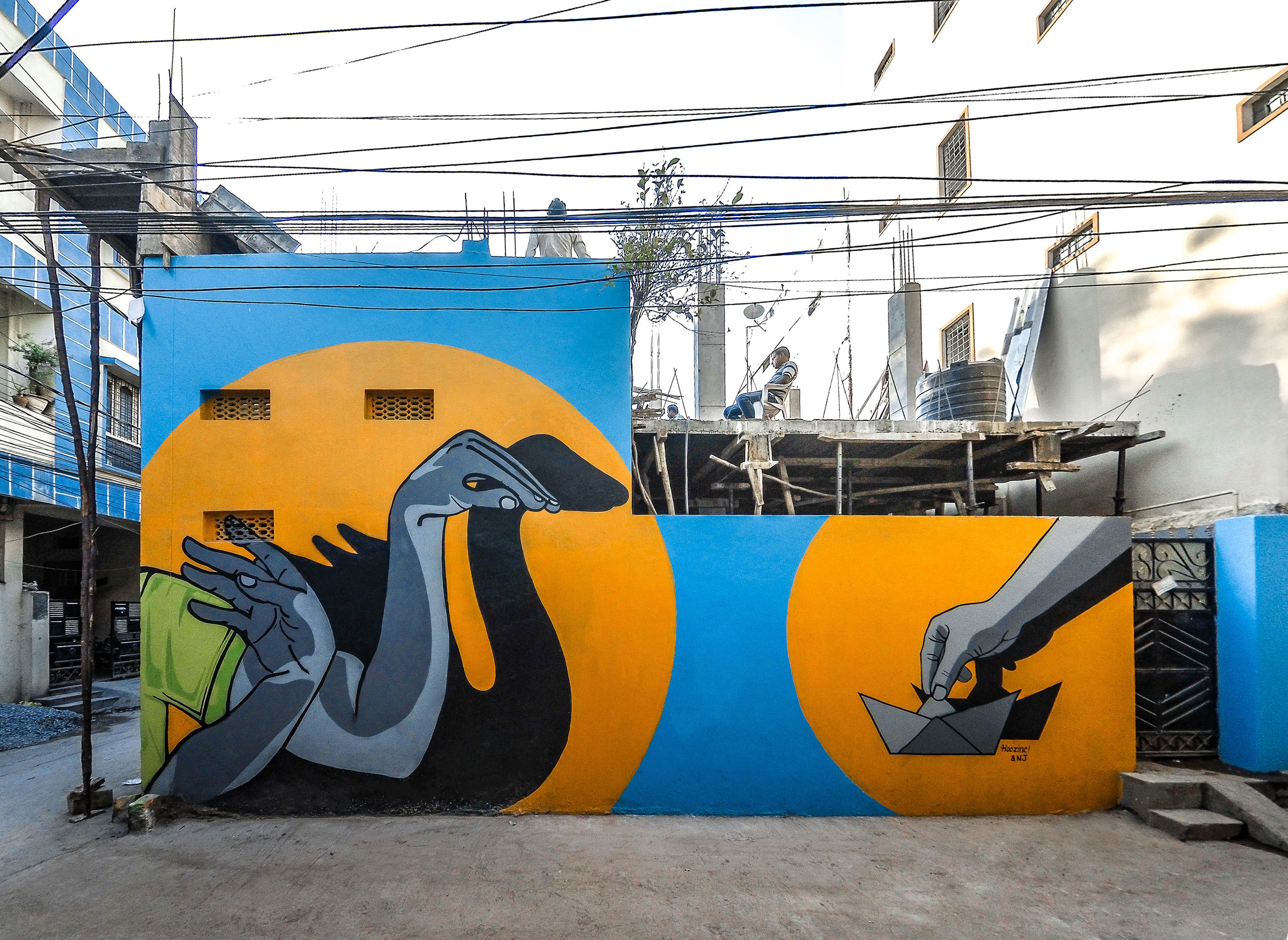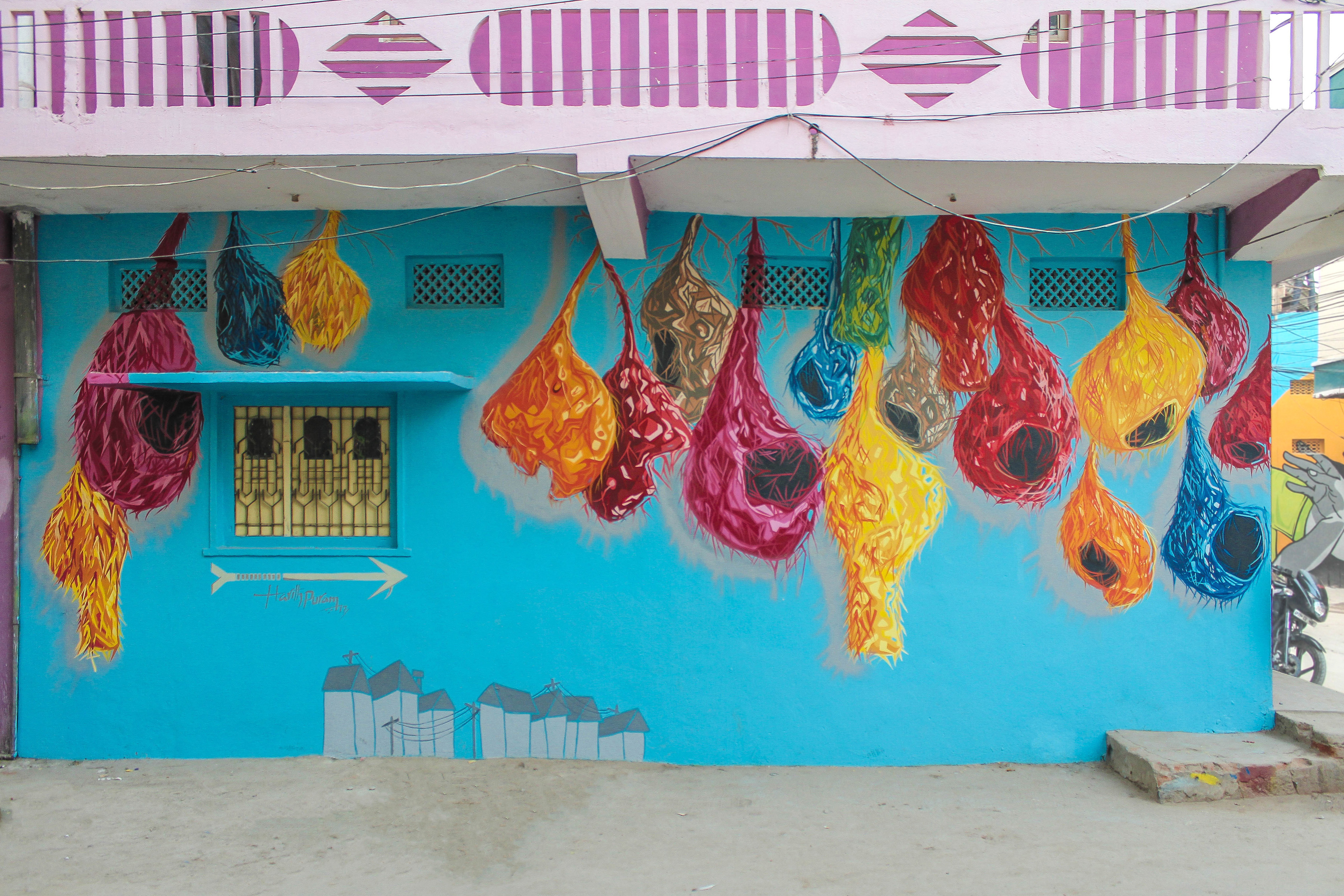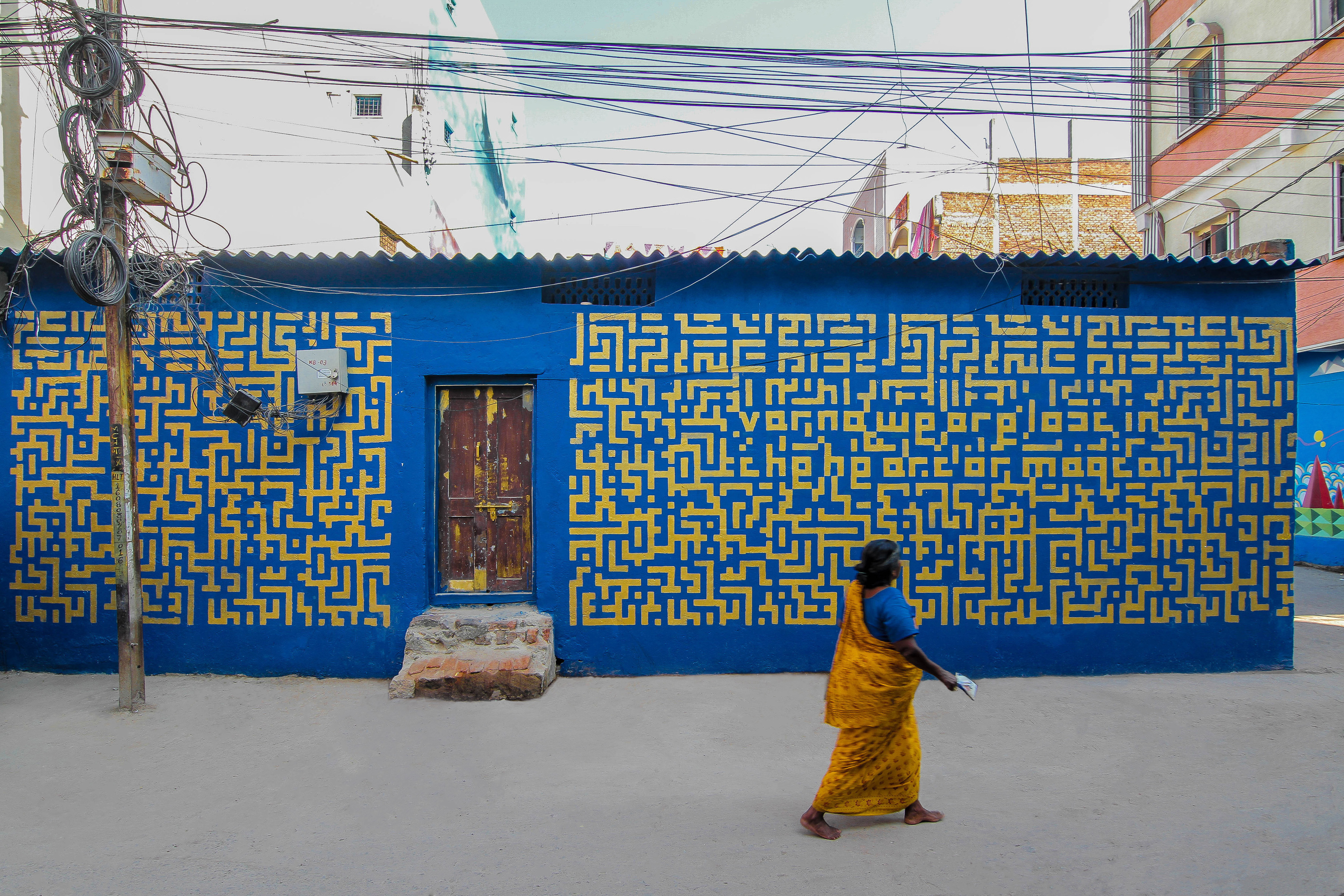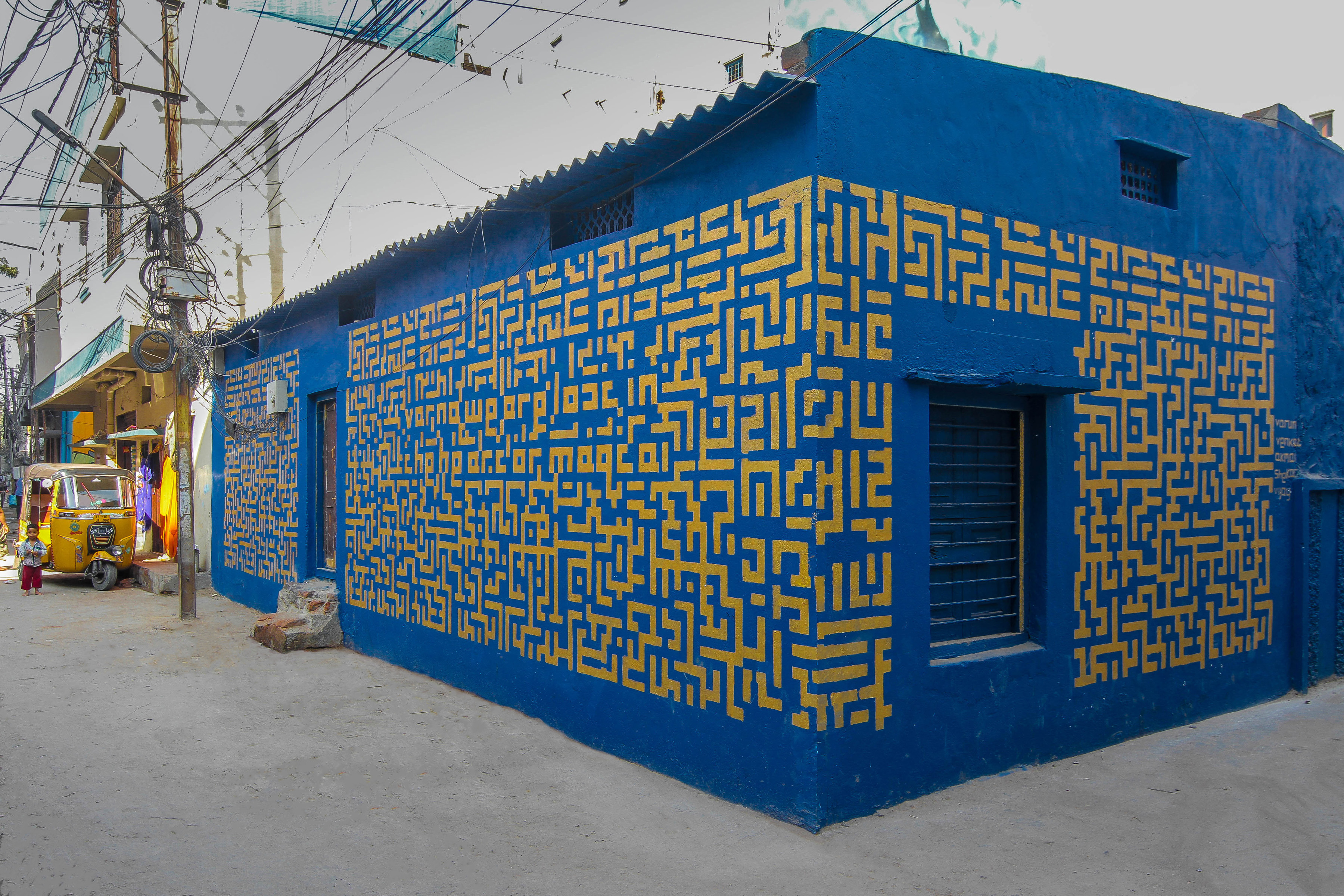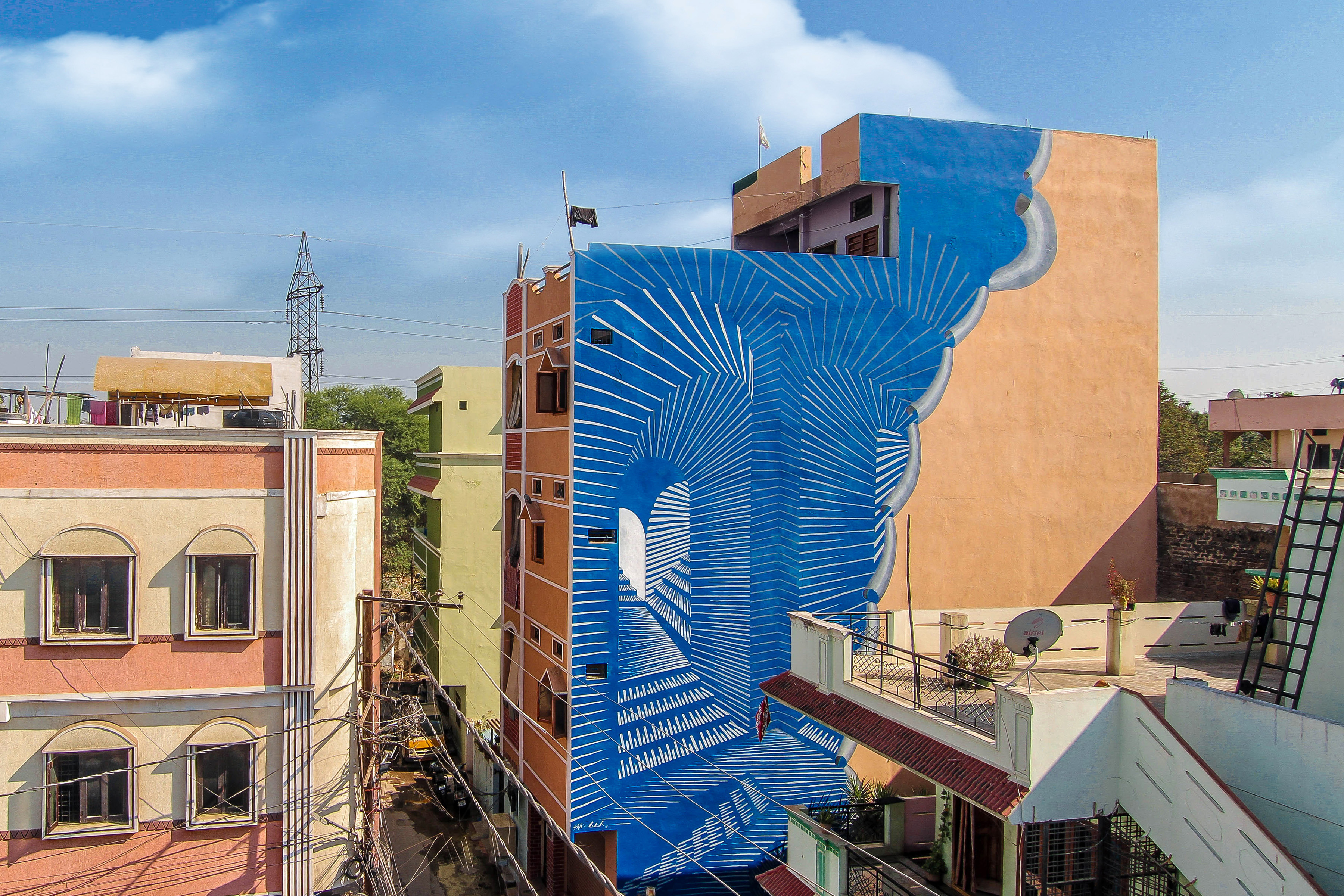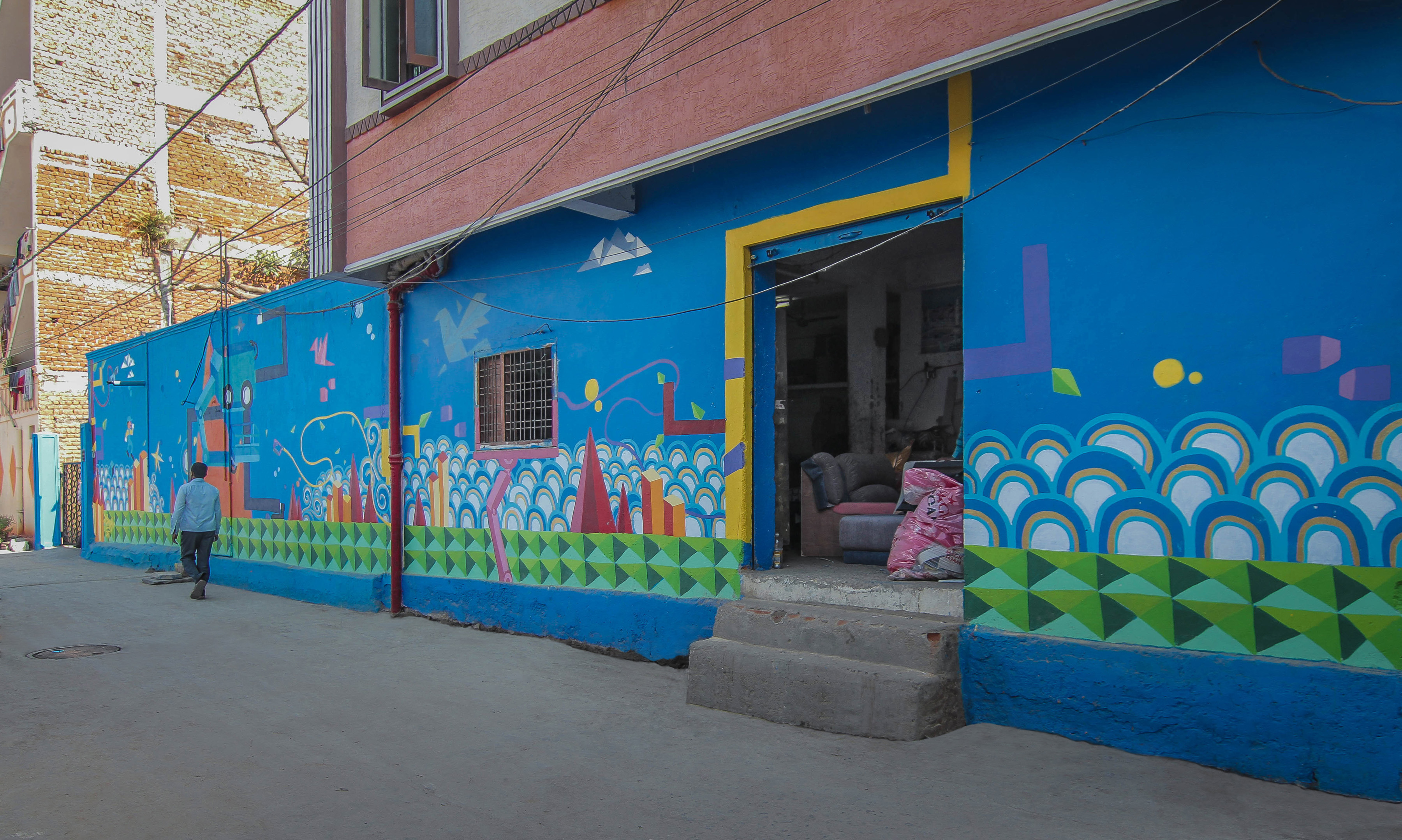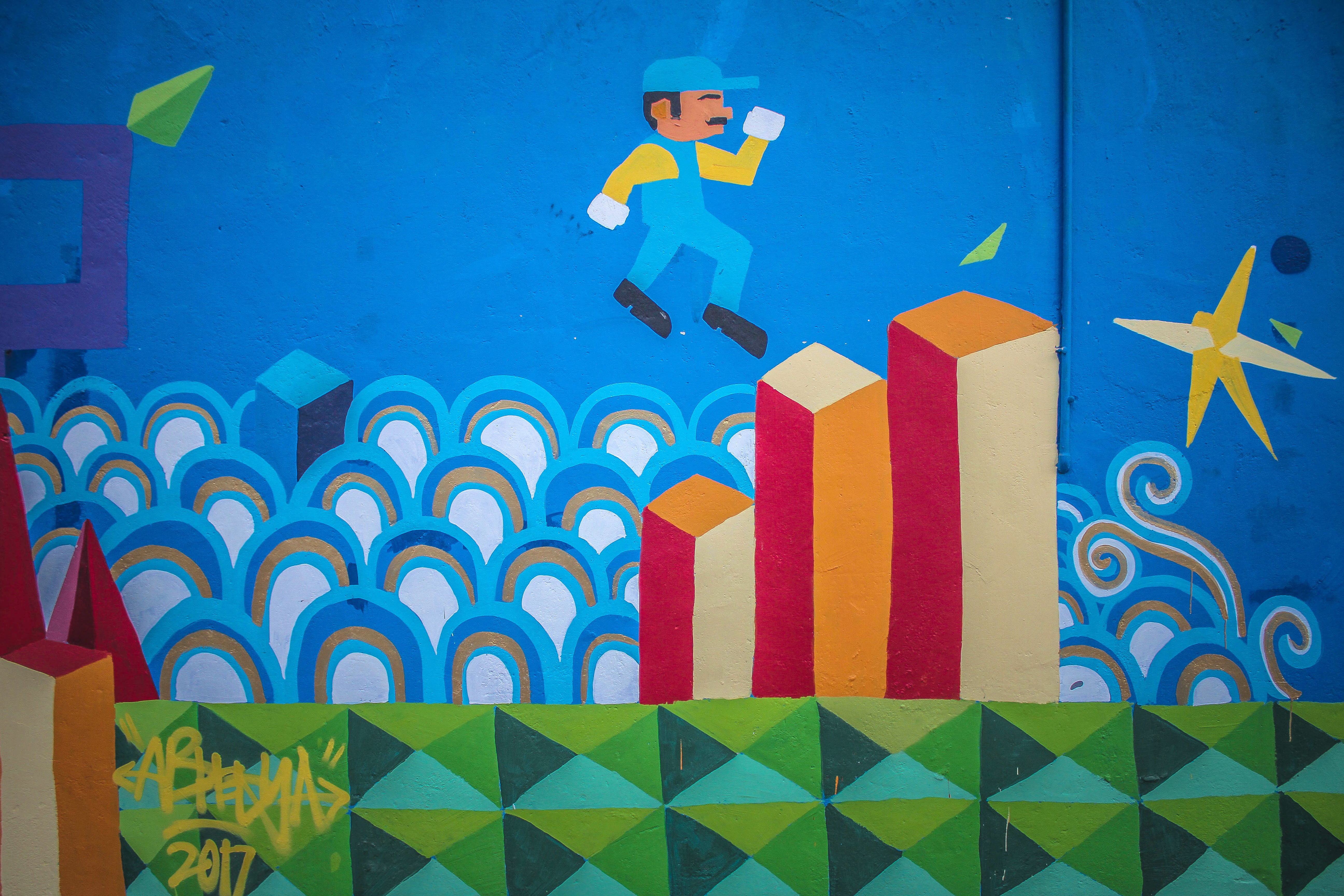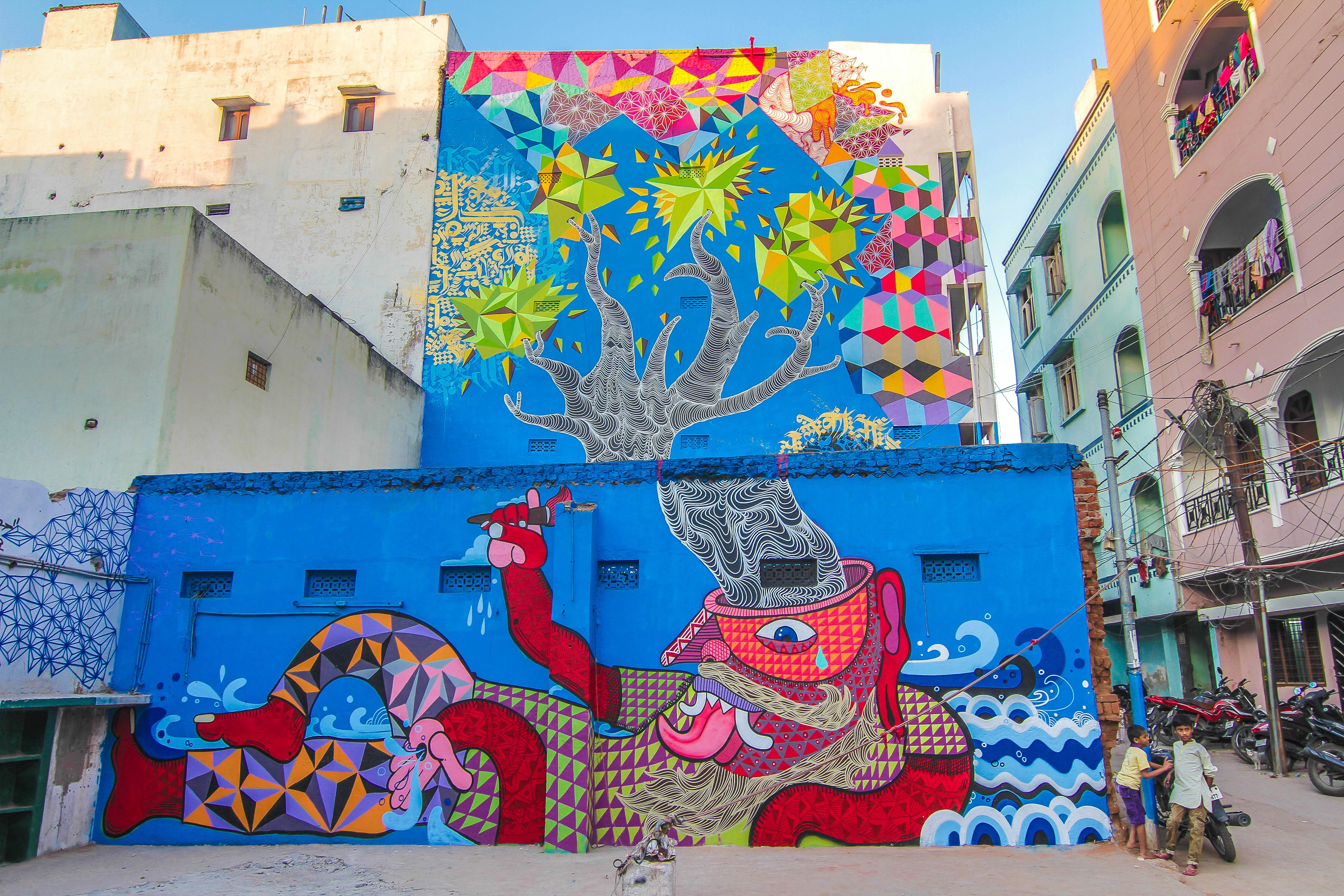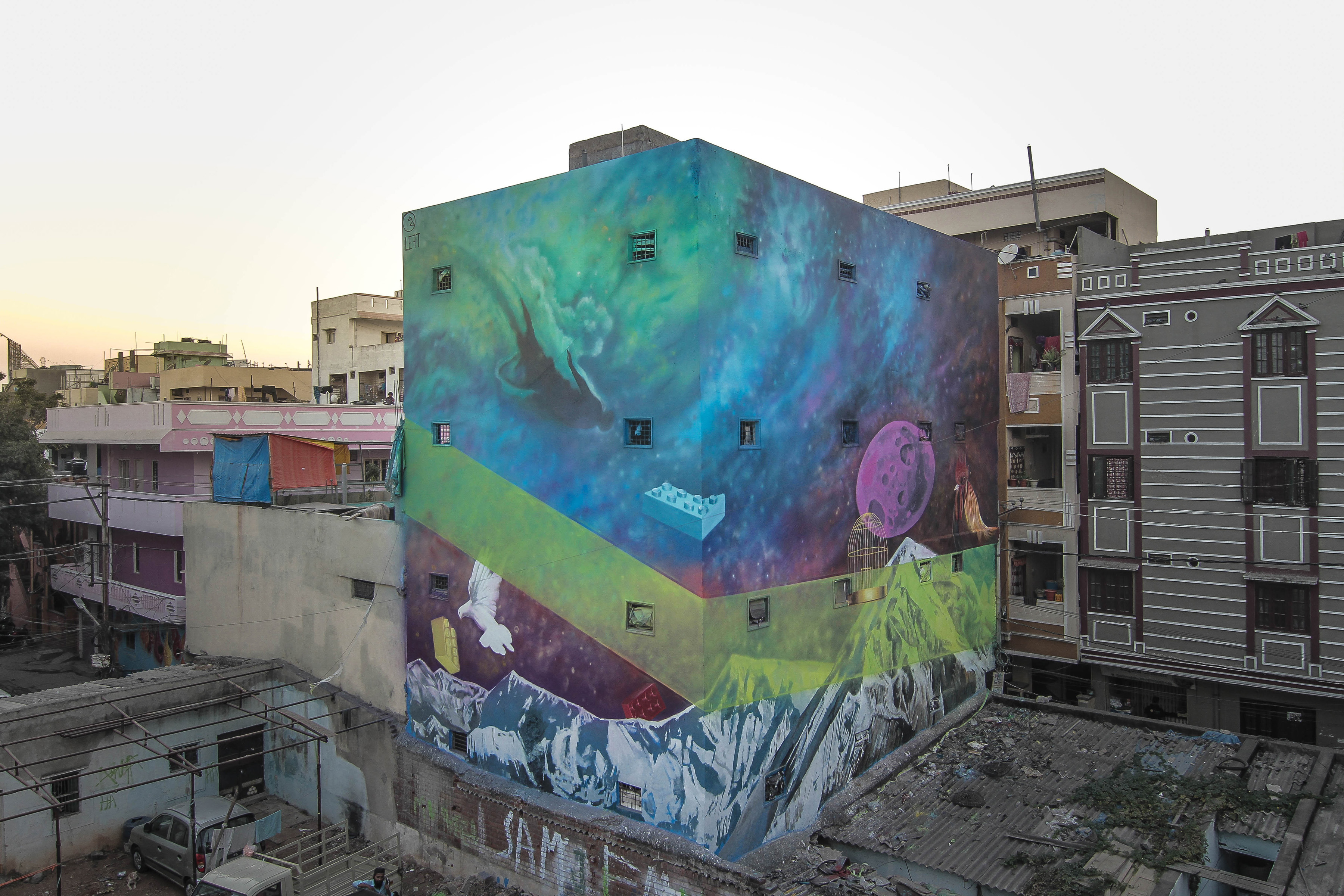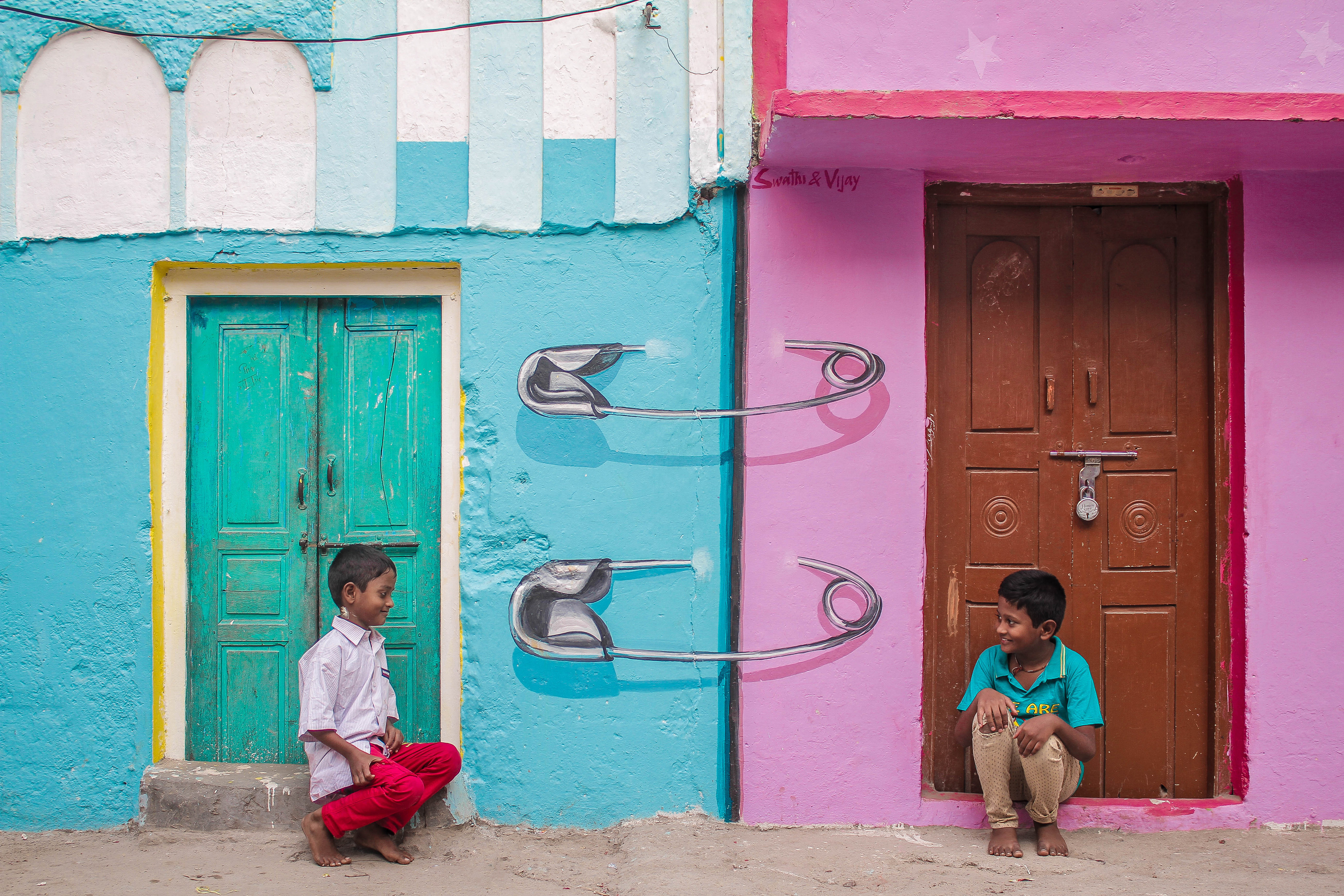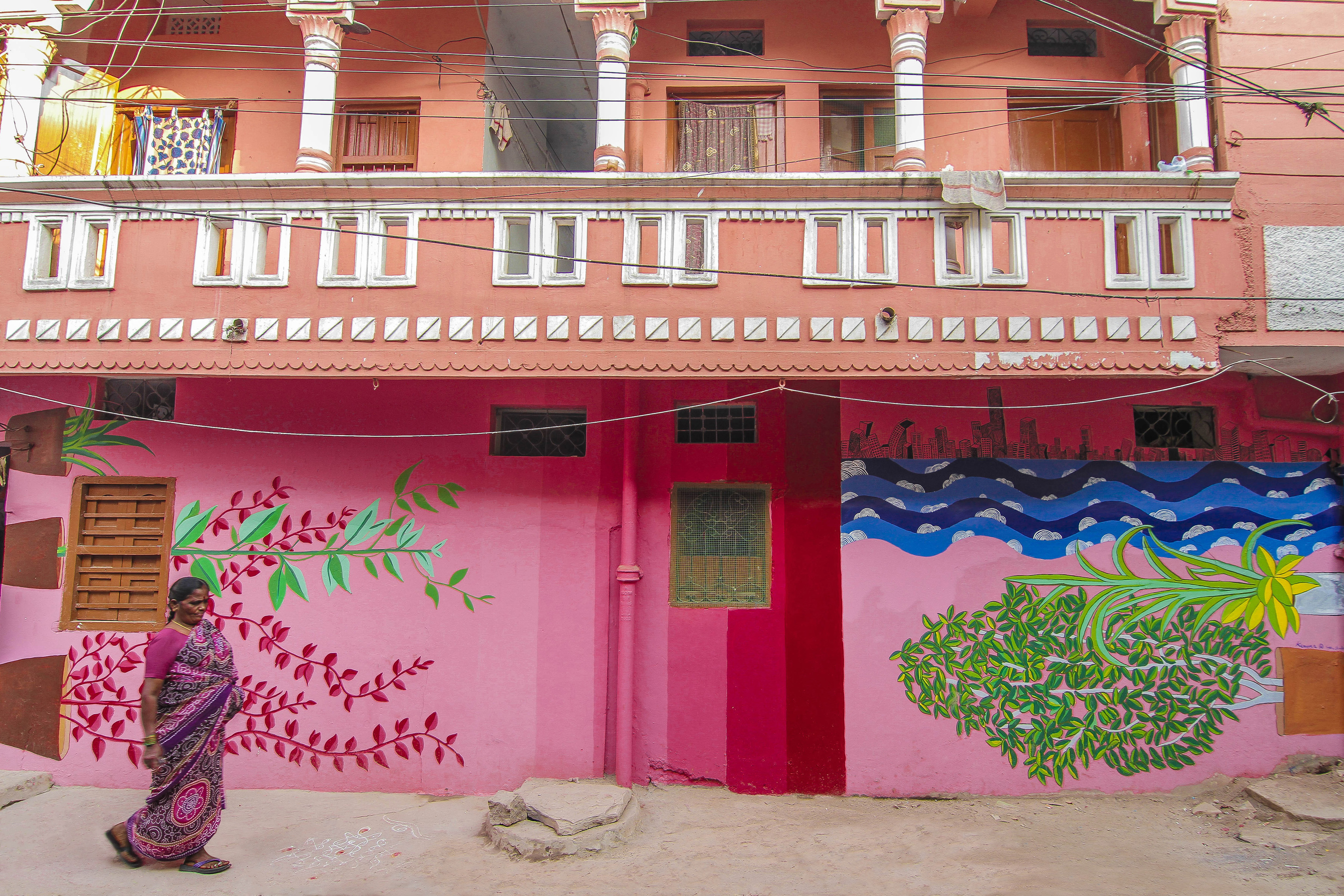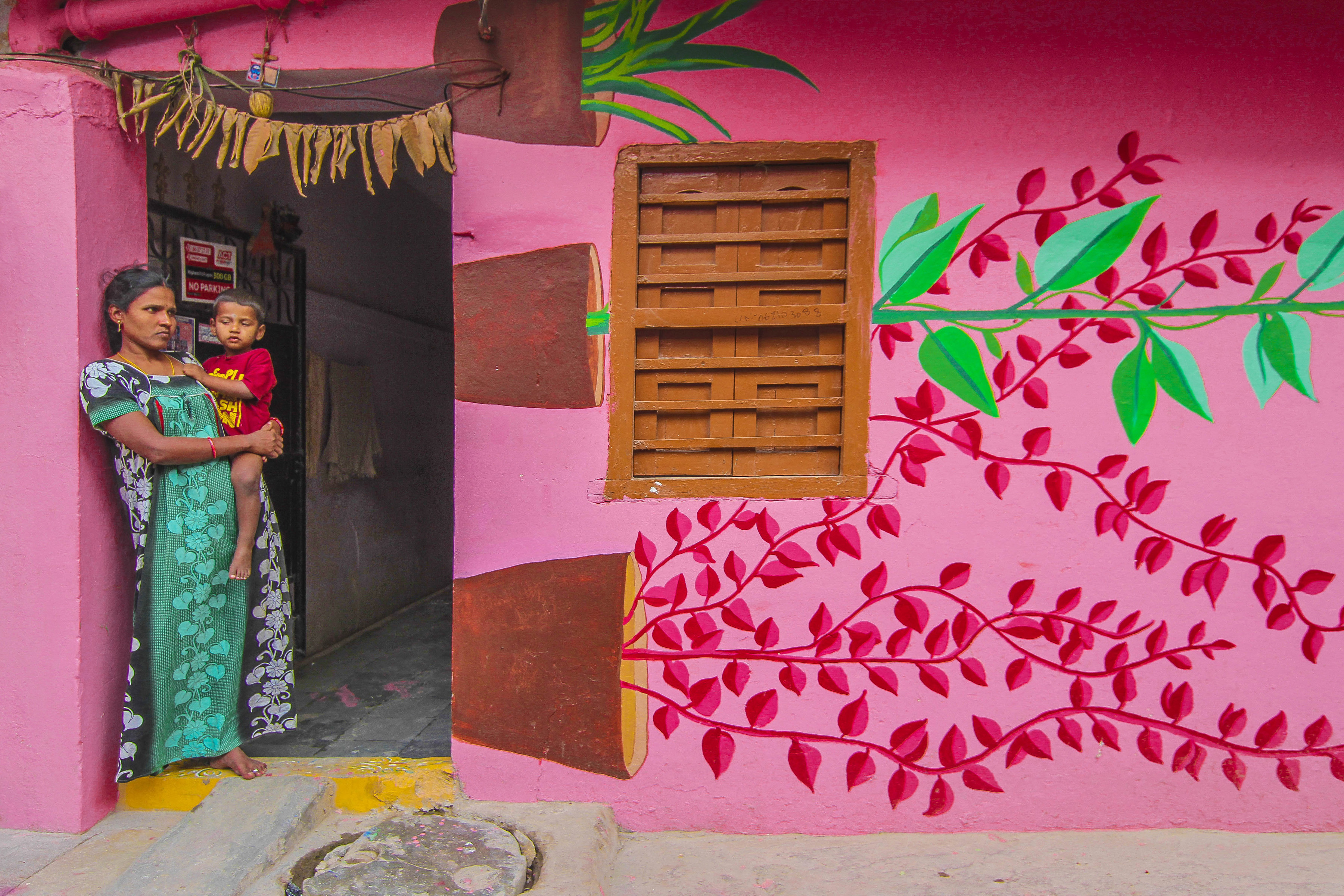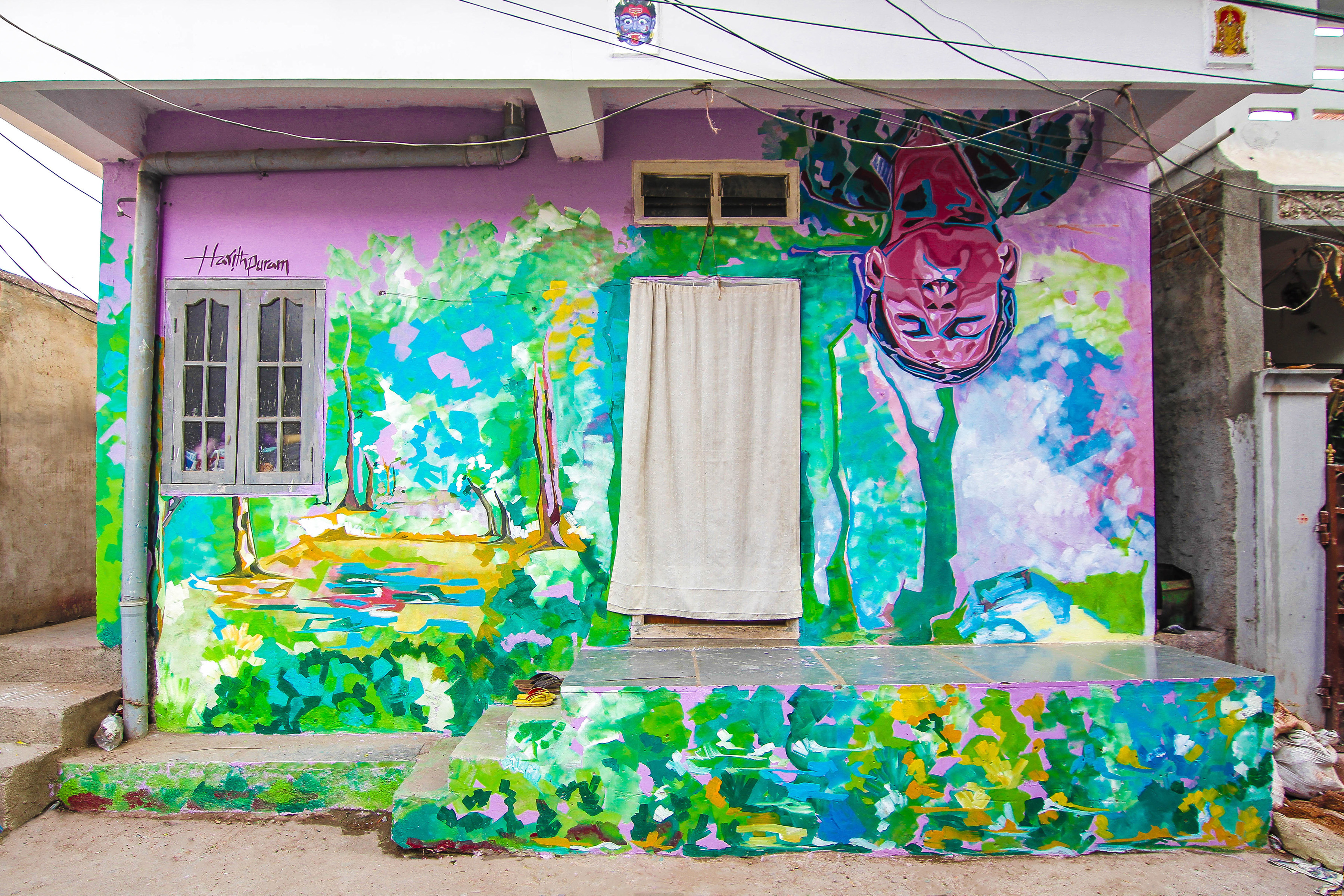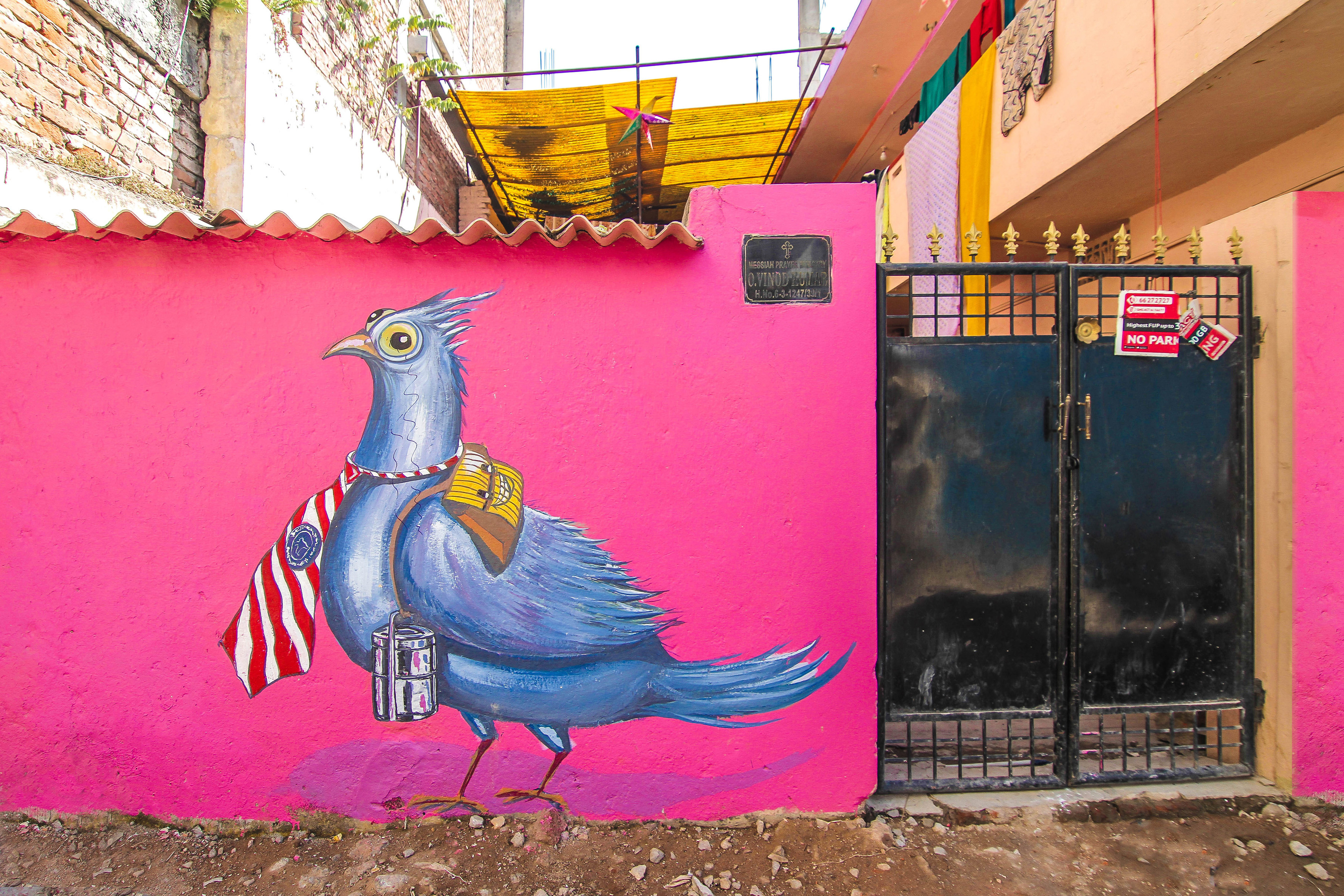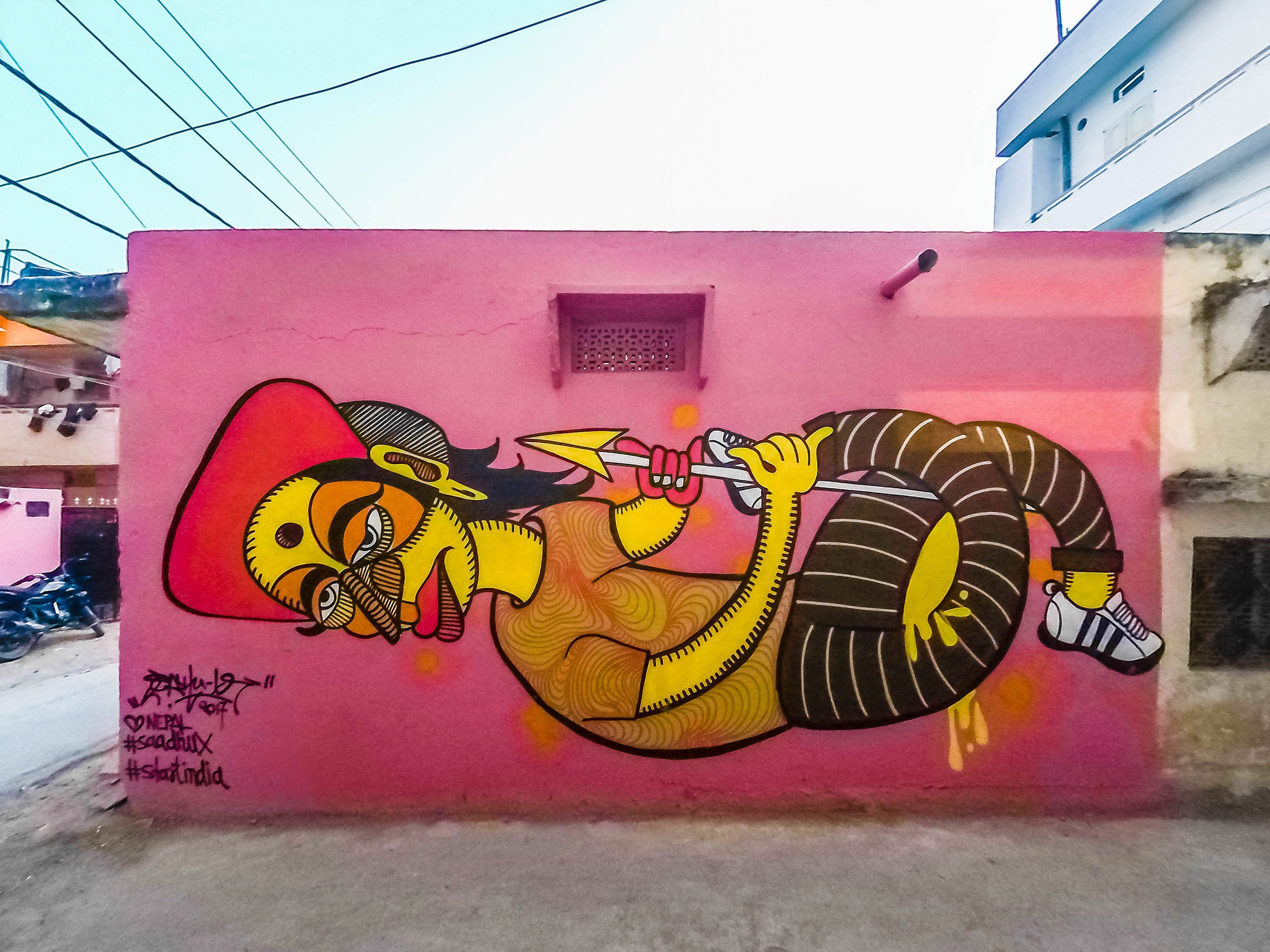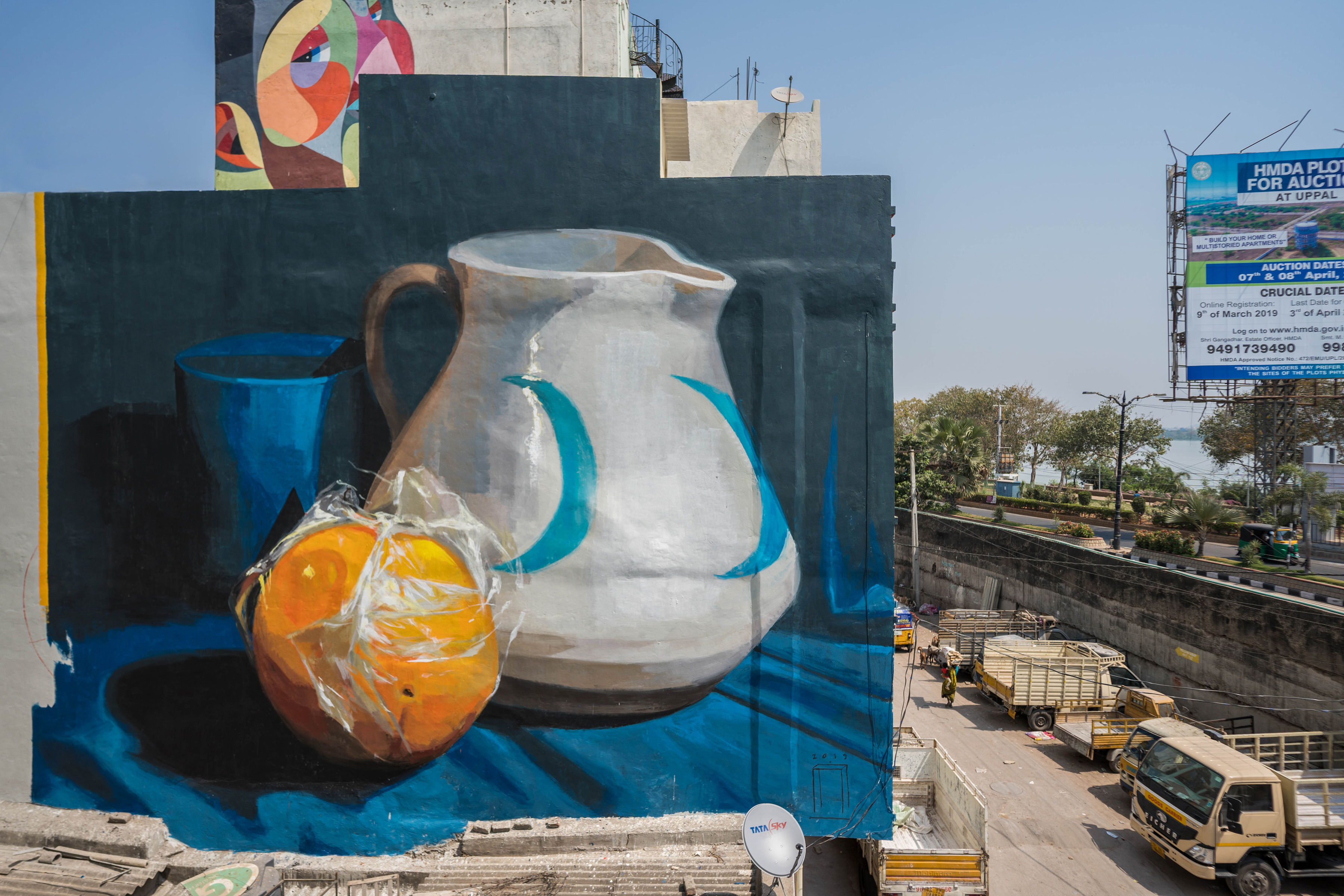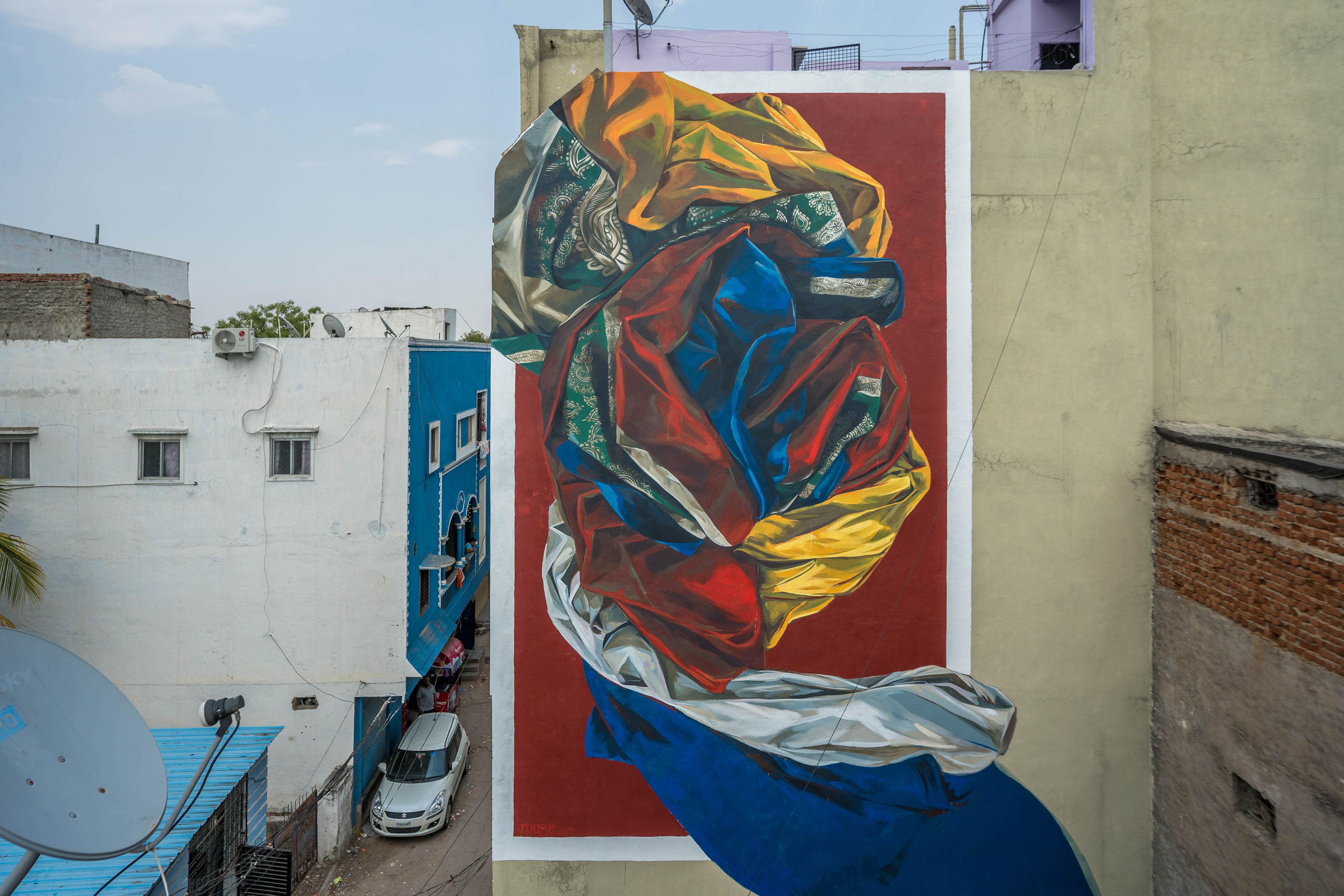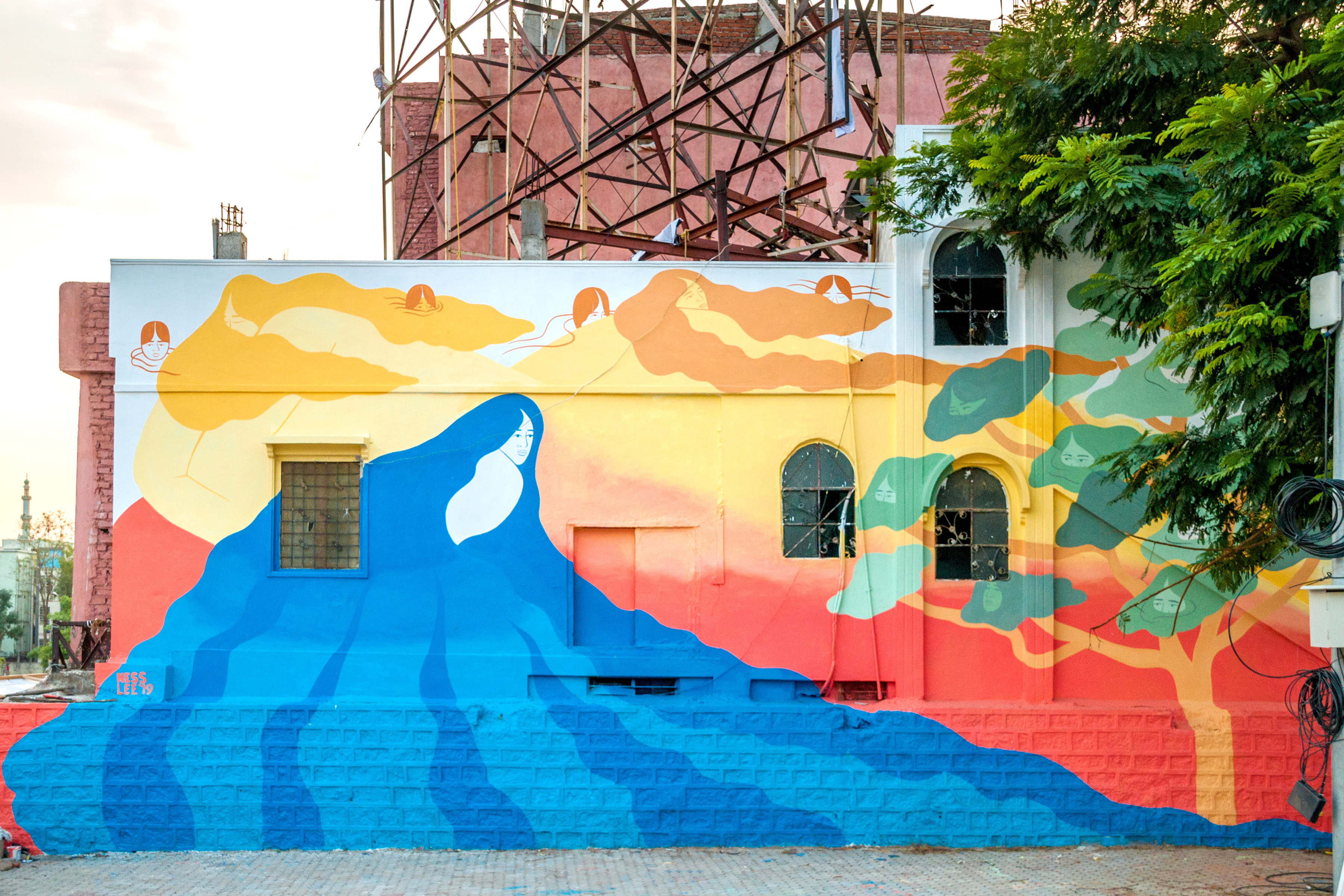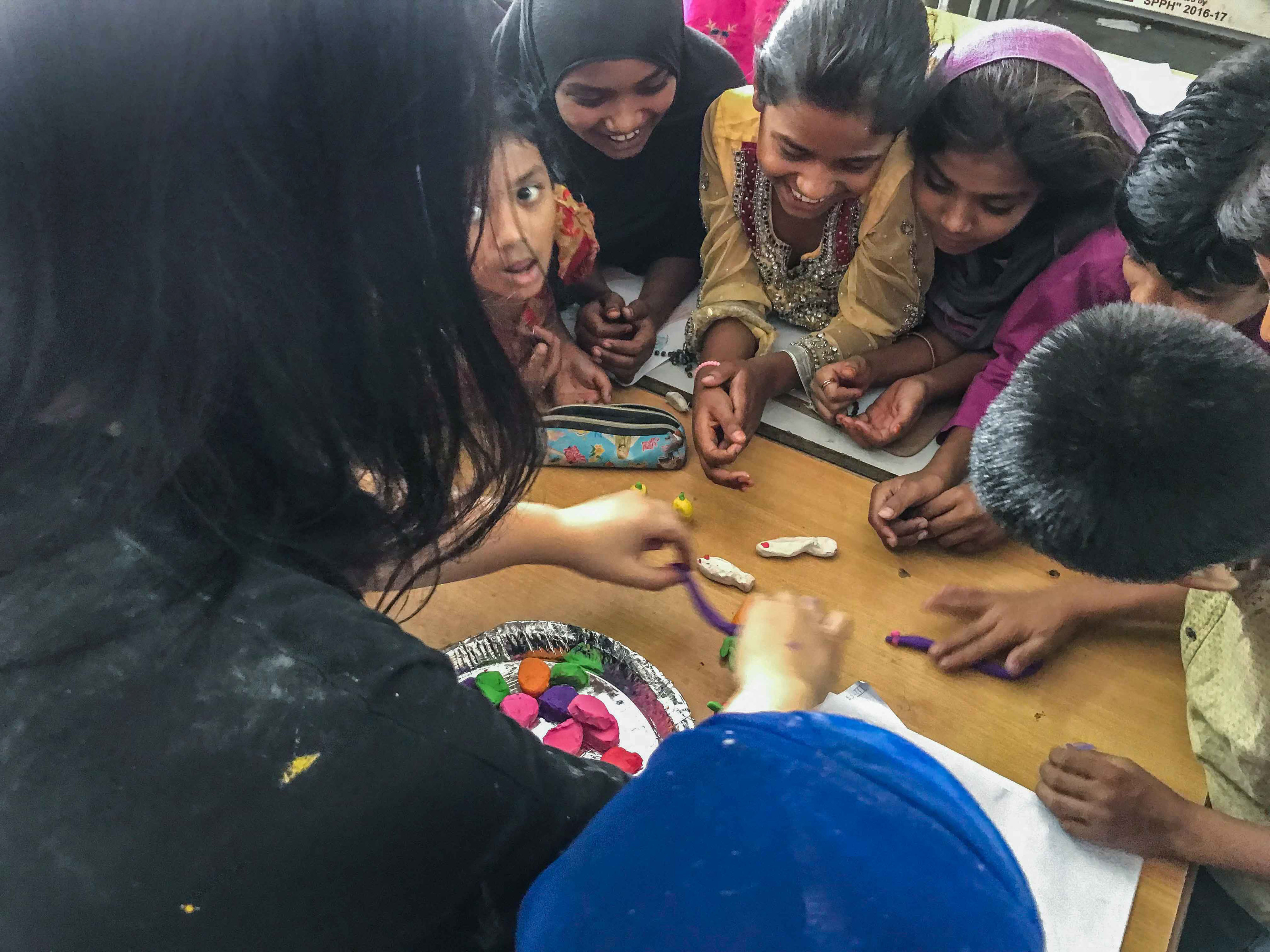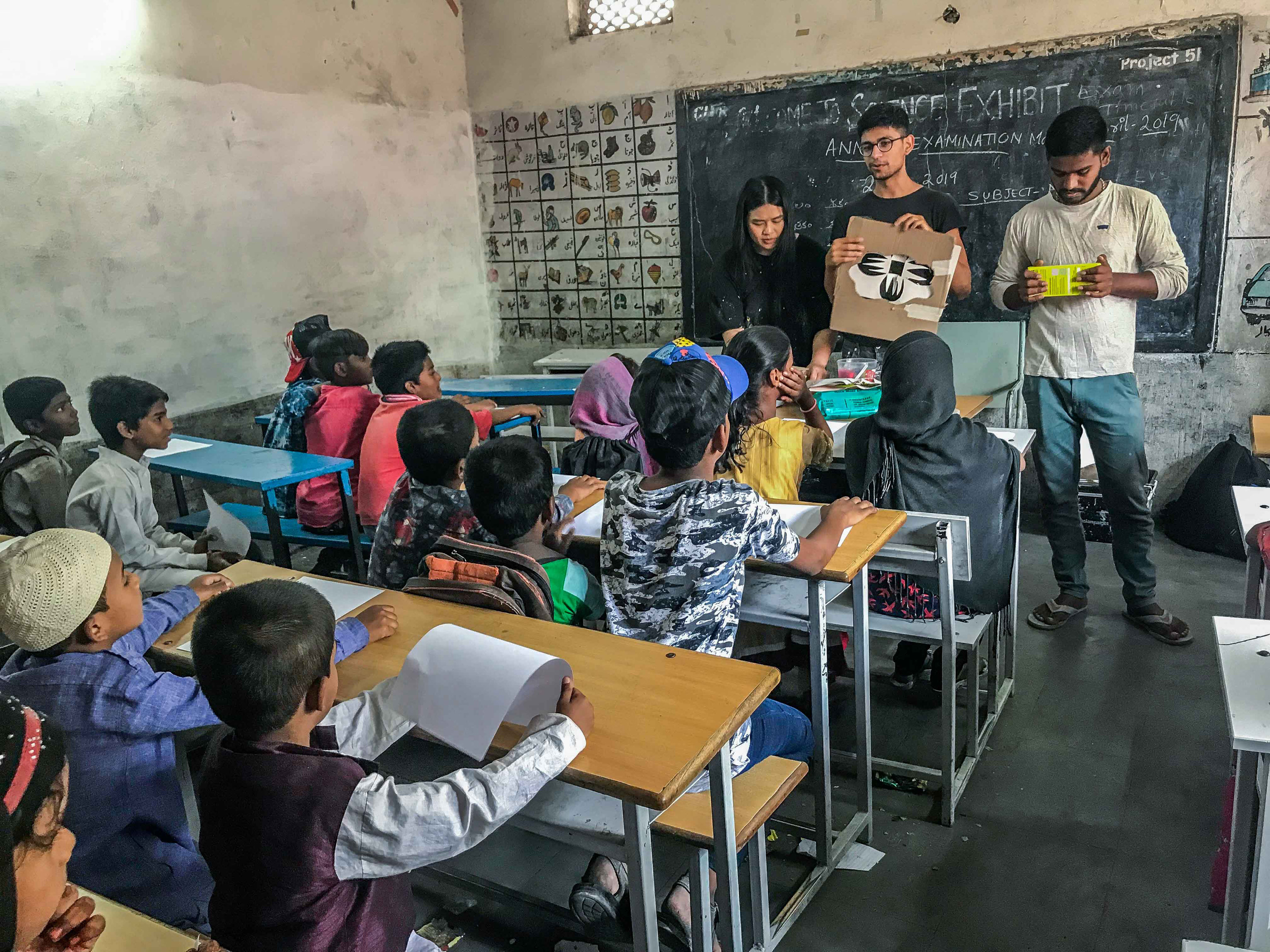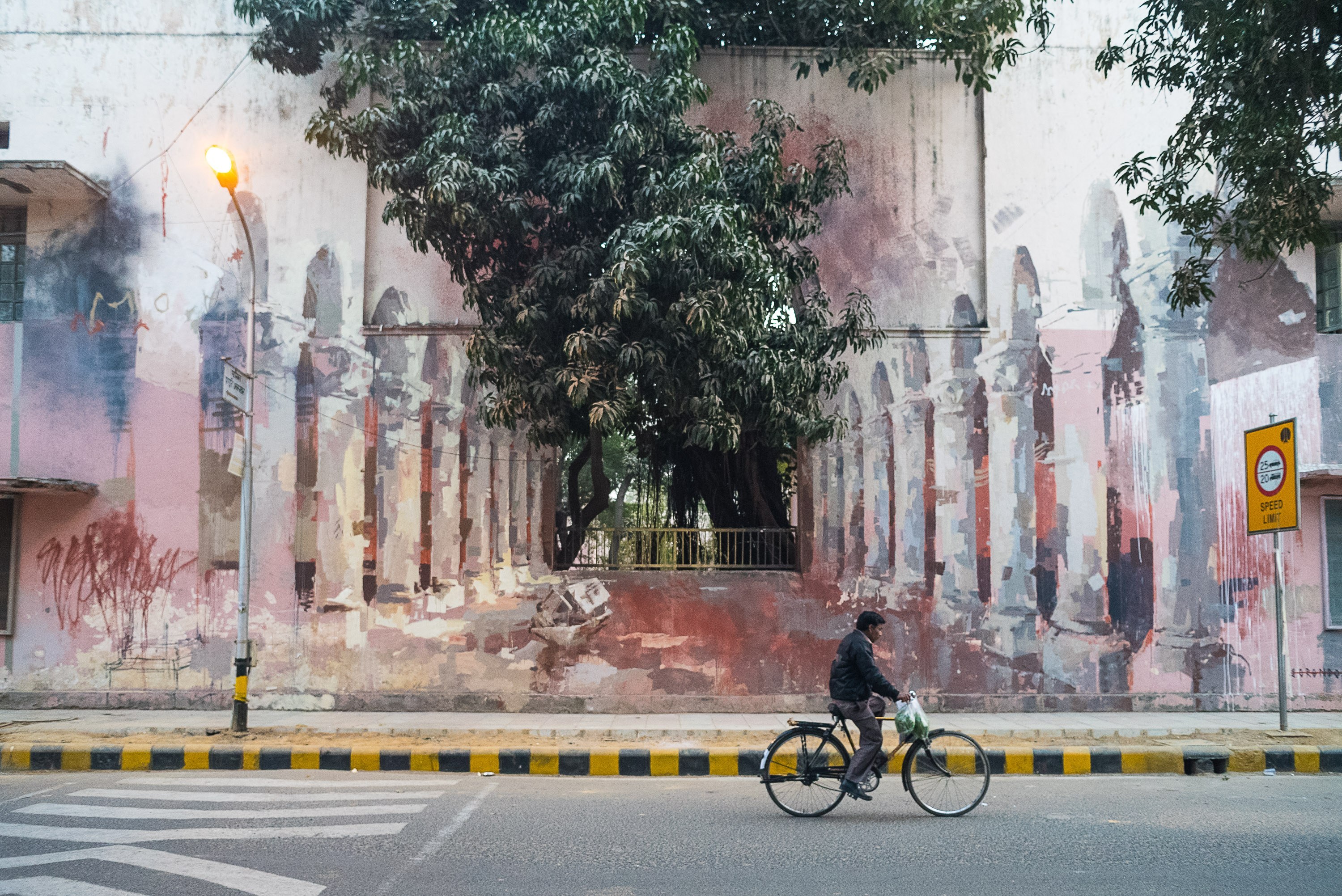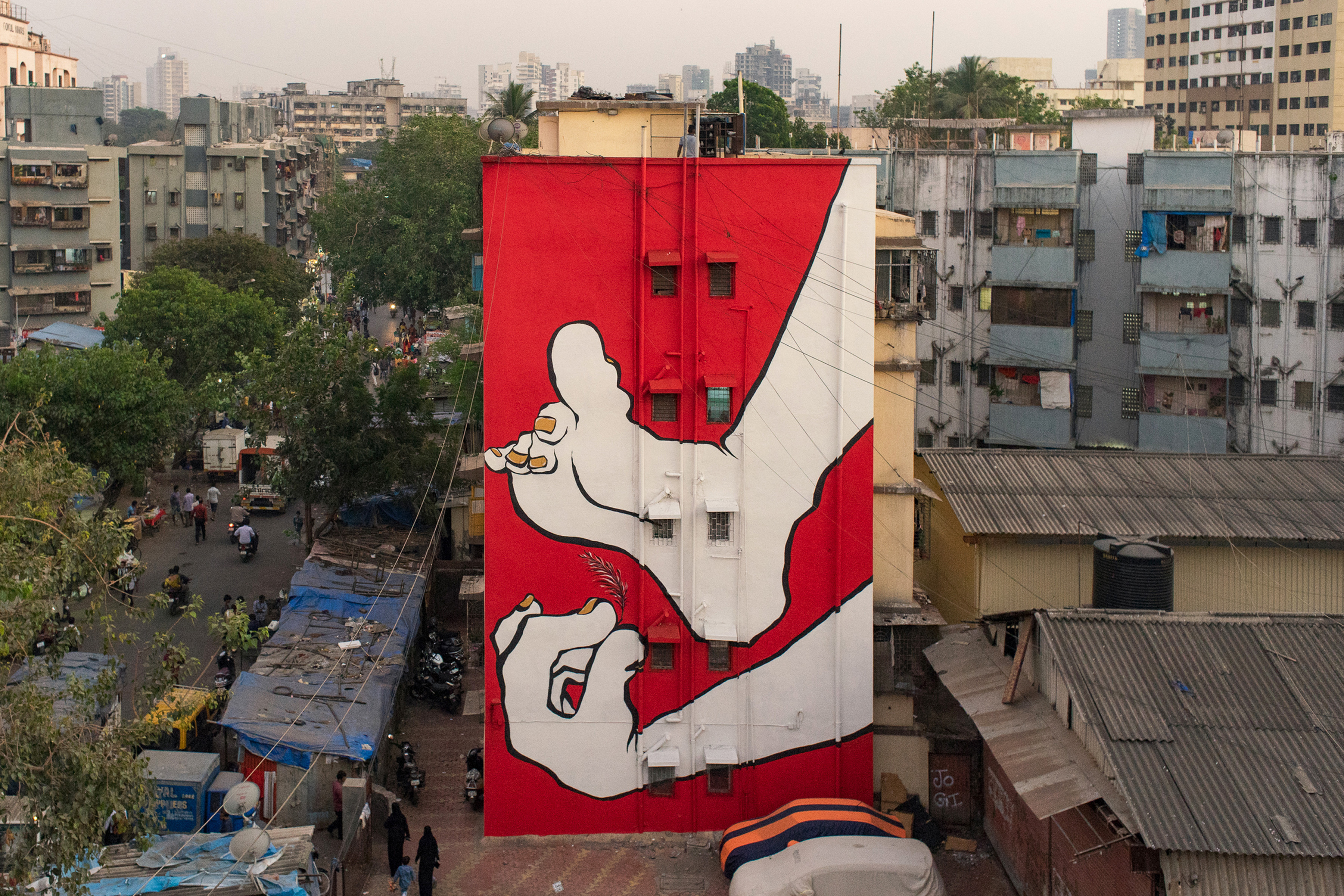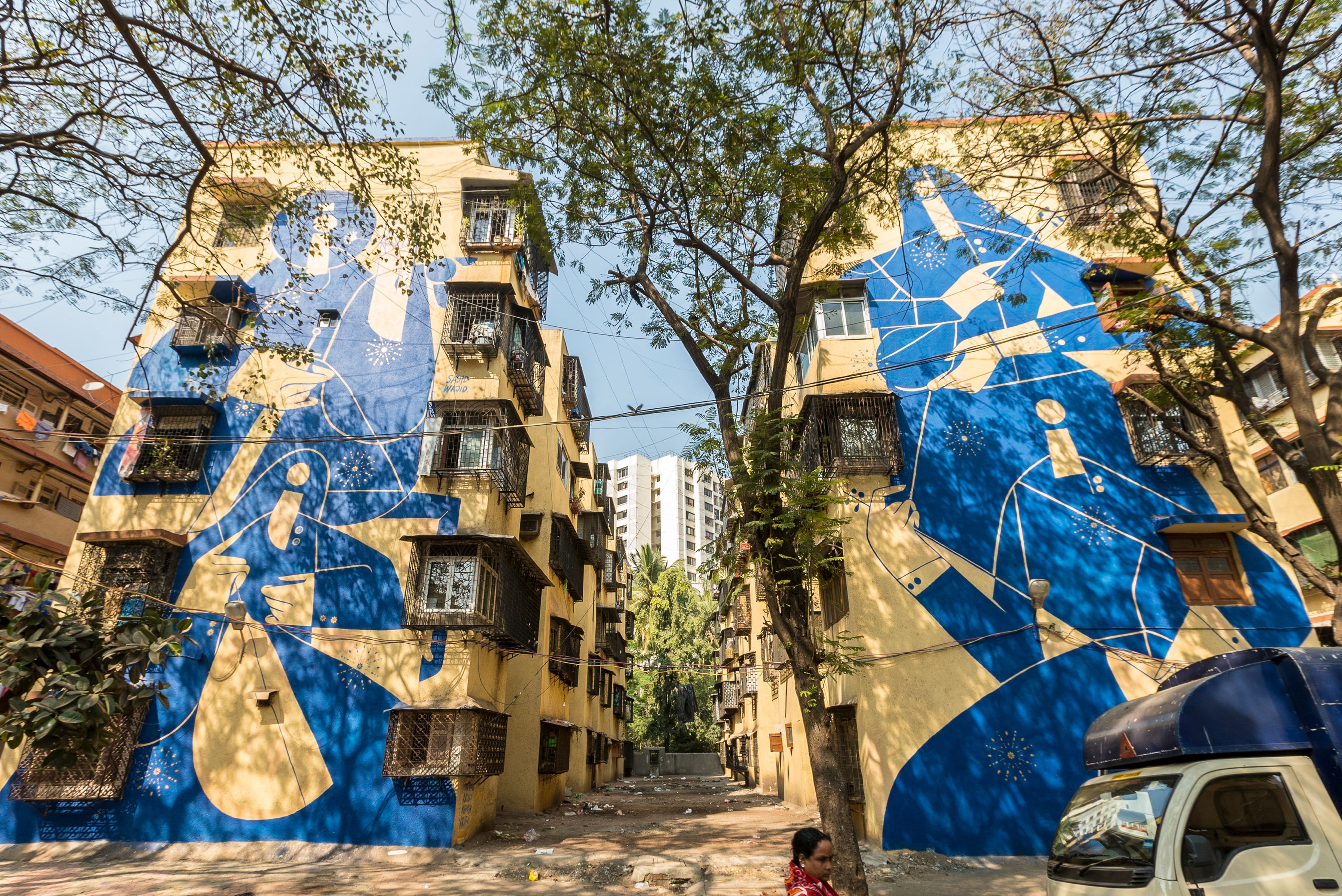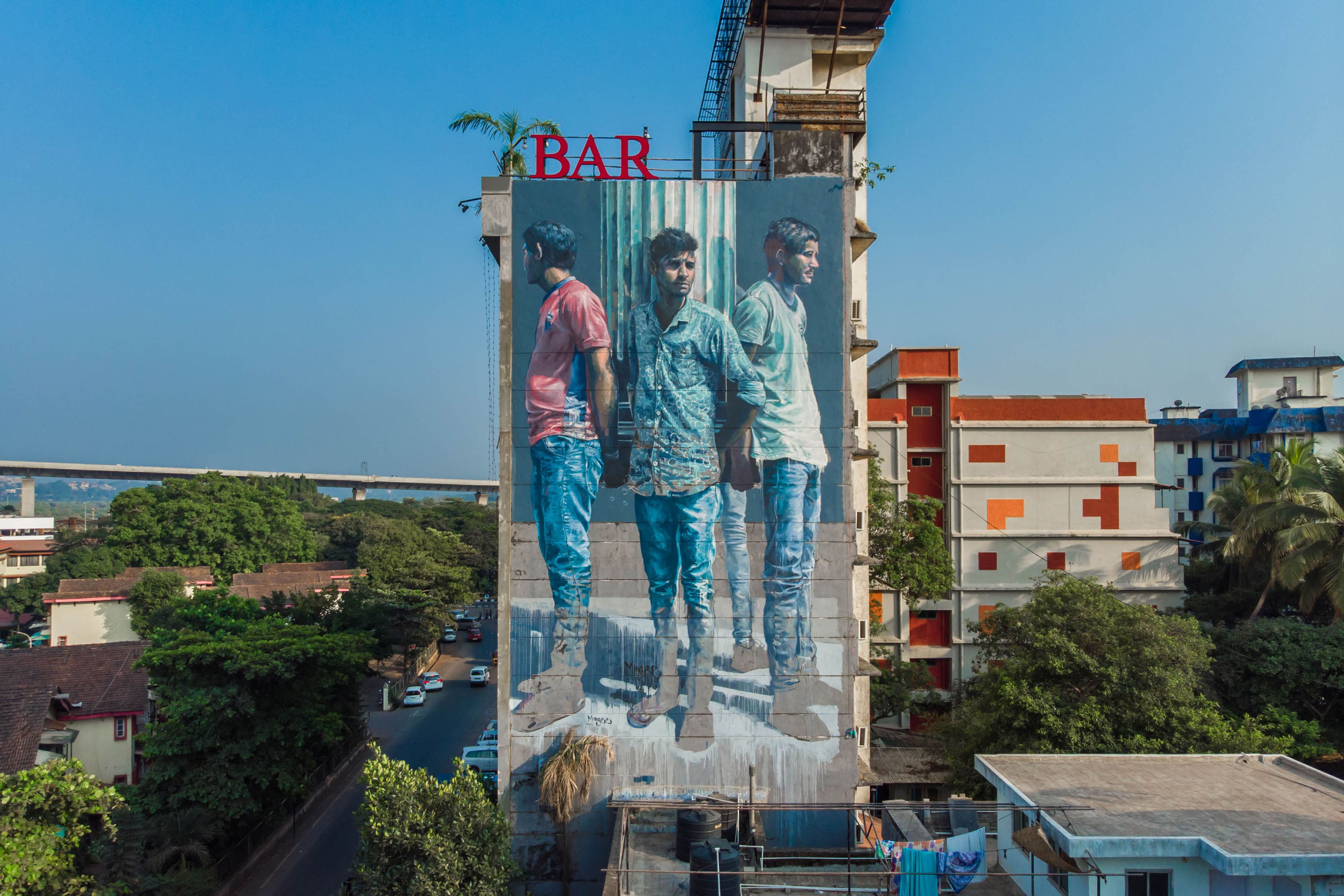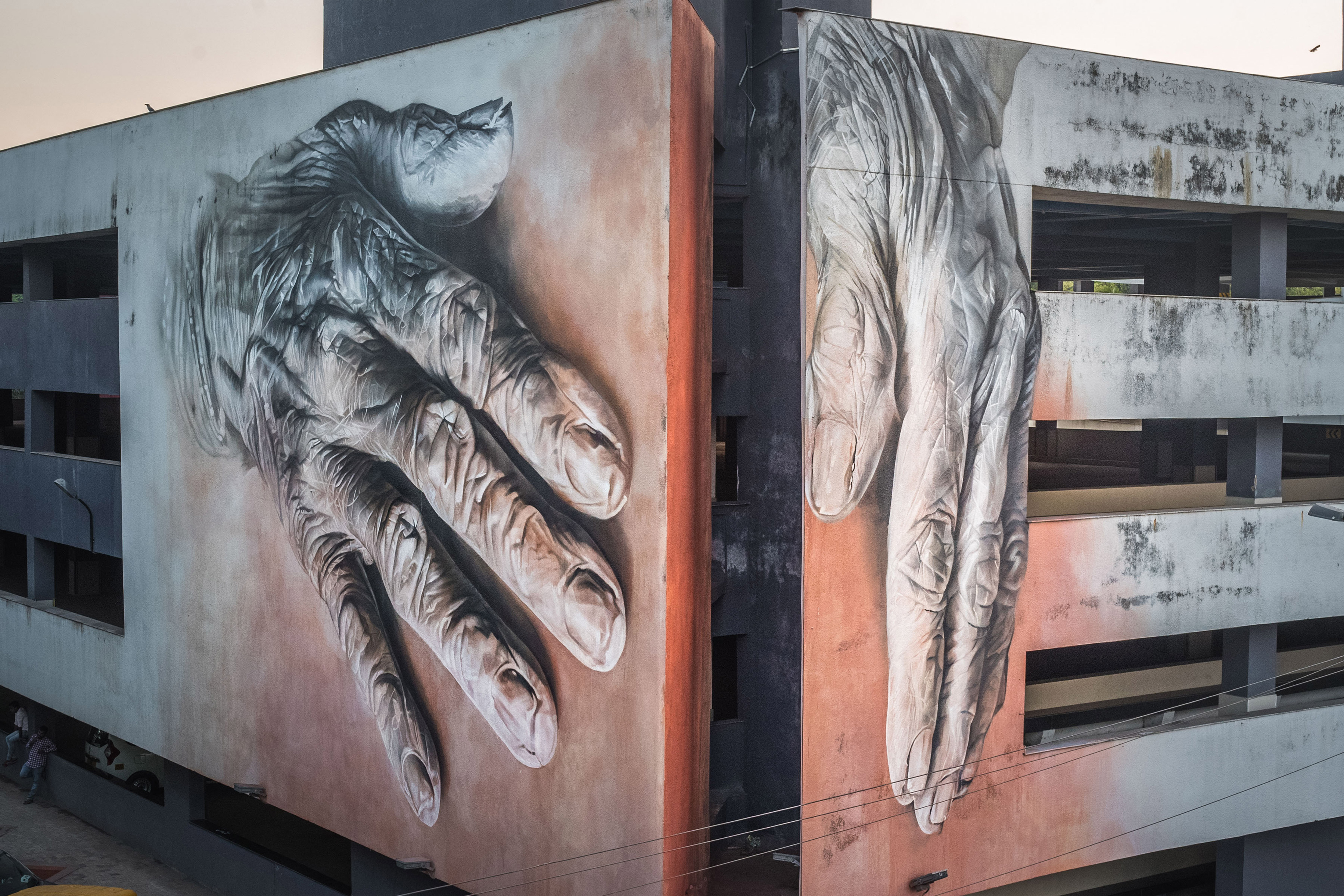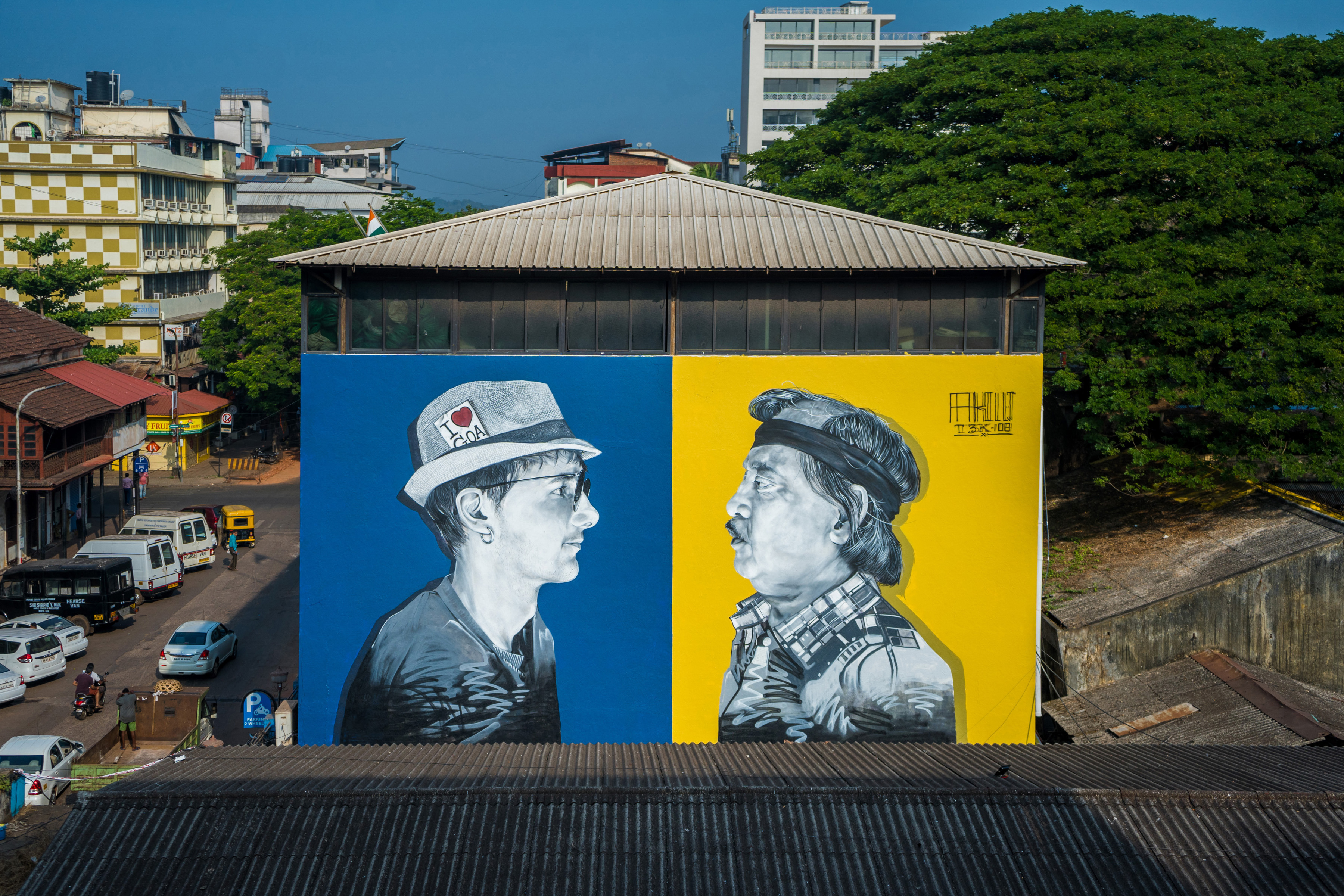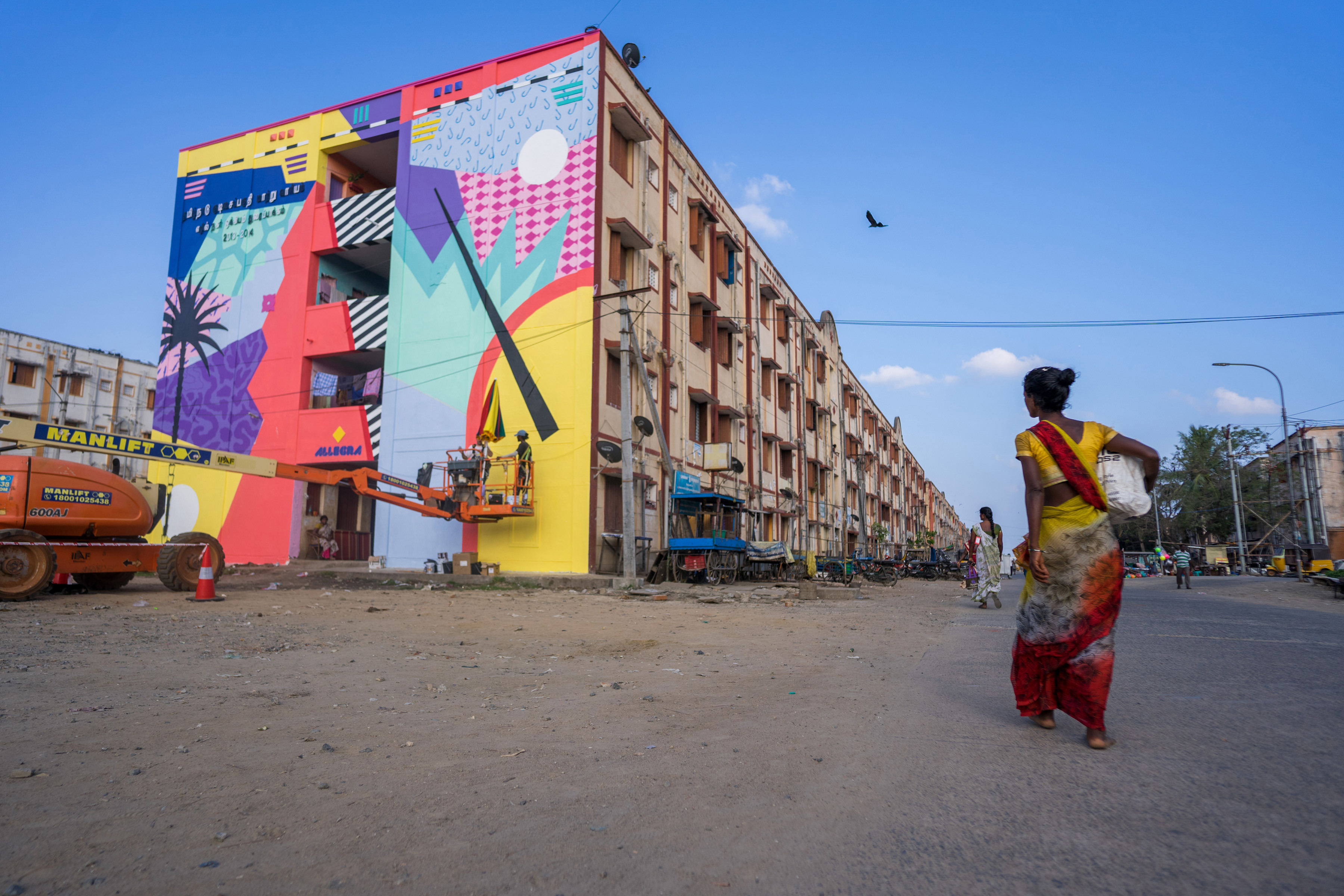Lying on the banks of the Hussain Sagar Lake in Hyderabad, the Maqtha neighbourhood is an urban village with fairly neglected structures and cramped living spaces despite being prime real estate. With a vibrant living ethos, Maqtha is home to an extremely close-knit community with a strong, self-dependent nature of living and working. The region also hosts many domestic shops, which explore the crafts of block printing and sari-making.
St+art arrived in the city of Hyderabad for the first time in 2016, to set roots for the country’s second open-air public art district in the city’s MS Maqtha neighbourhood.
For St+art Festival 2016, Maqtha hosted 5 international and 6 Indian artists to create artworks in and around the locality. By the end of the project, the area was home to a walk-through art district open for all, additions to which were made during subsequent editions of the festival in the city, with more than 16 artists creating artworks in 2017, and 3 international artists adding their pieces in 2019.
Upon our first visit to the Maqtha in 2016, we were awestruck by the spectacle of its buildings. They breathed in compact arrangements, and when viewed together, they looked like pieces in a standing jigsaw puzzle. The artists started working on these very large buildings, excited about the potential this key location in the Hyderabad cityscape had to offer. The diverse mix experimented to create a fresh dialogue with the local populace, finding themselves a most engaging and receptive audience.
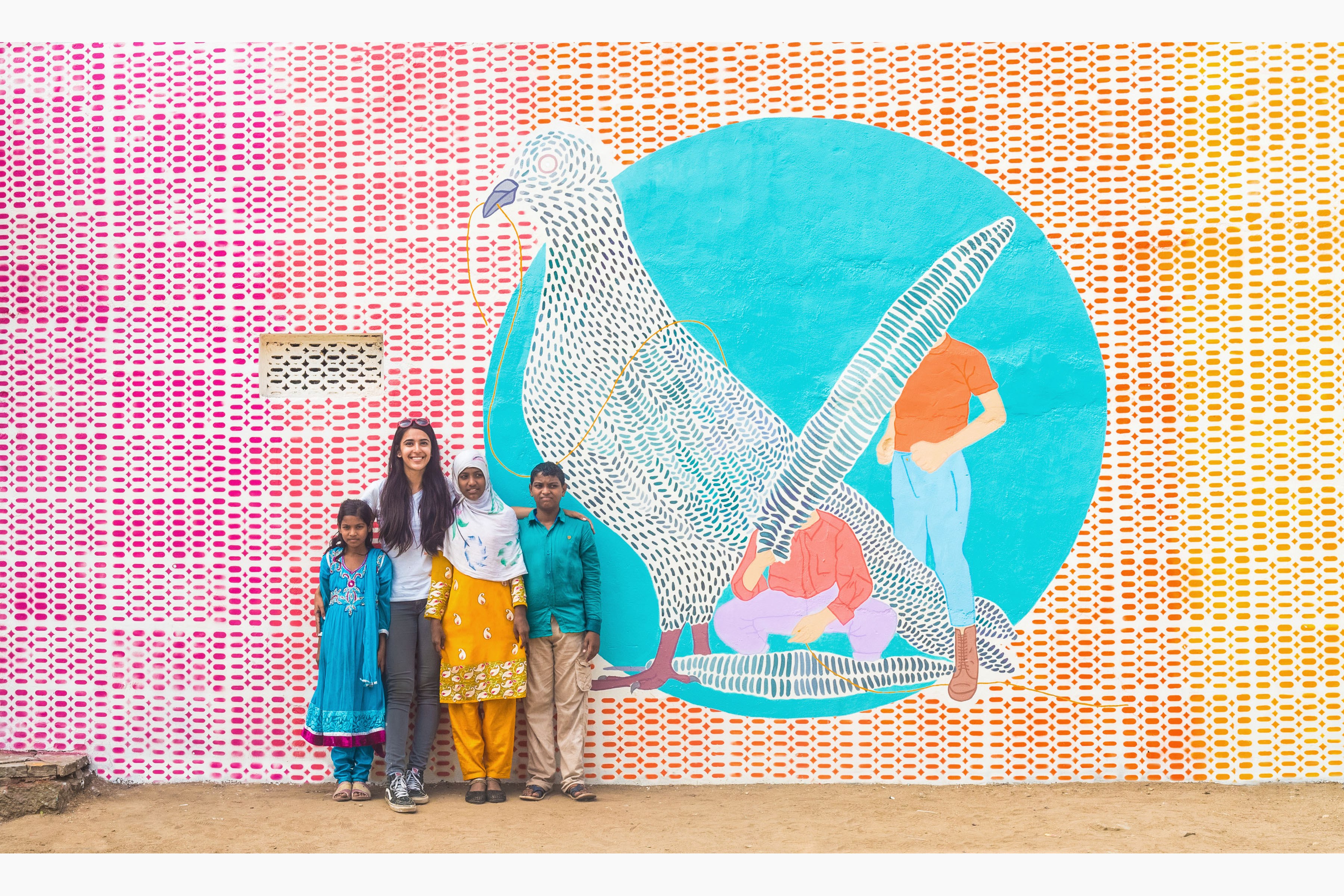
Makhta is swarming with children and pigeons, which were my first impressions, so they ended up inspiring the idea behind my mural. And, pigeon-keeping, was a Nawabi-hobby that is now making a comeback amongst the youth of Hyderabad. The colour palette and the background are influenced by the architecture and sights around me, I wanted everything to blend in together. So, in a way, this is a visual interpretation of my encounters with Makhta - open-ended, with surreal proportions and a dose of references to its rich history and colourful present. Initiating conversations and hoping to bring a close knit community, closer
- Sattired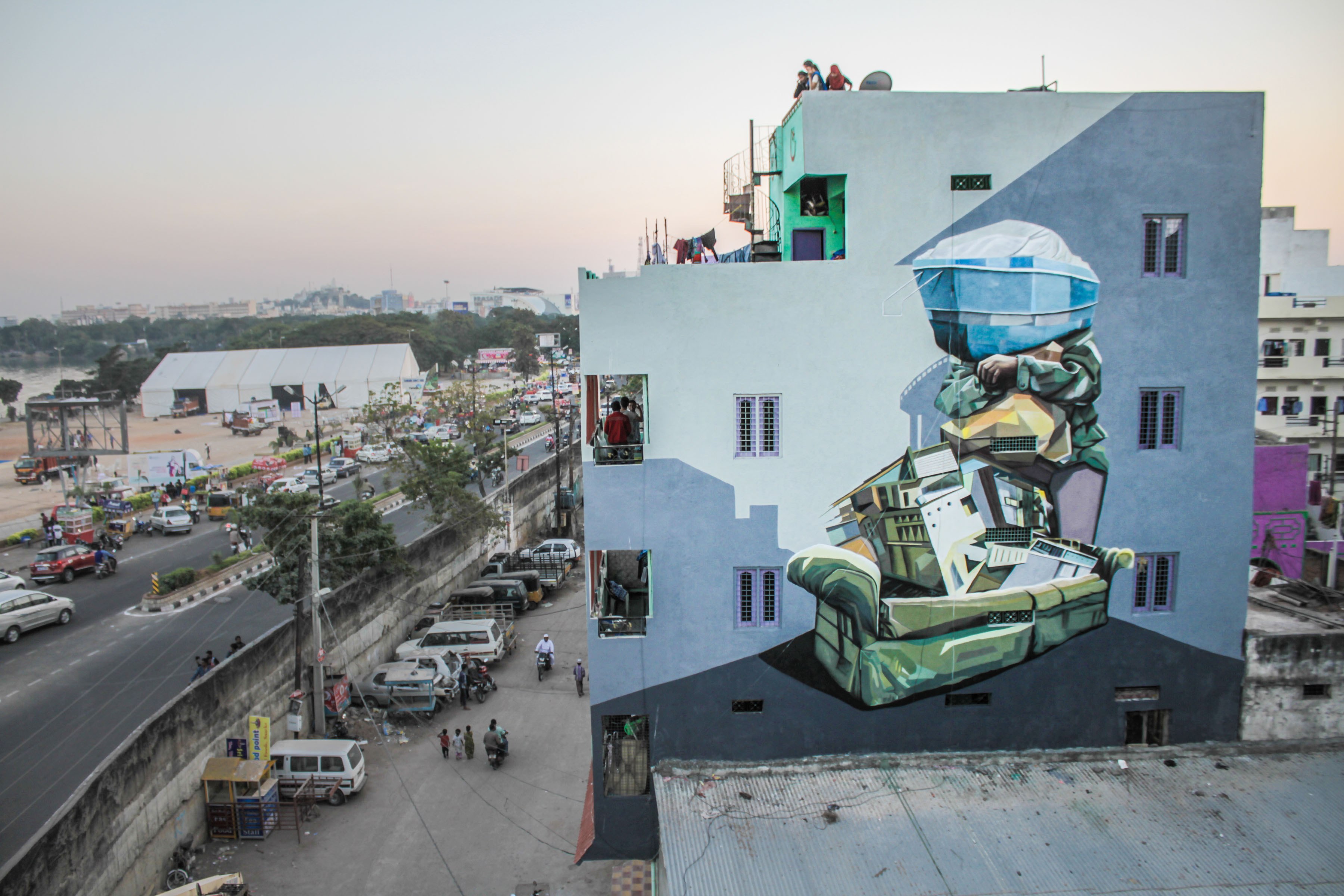
Makhta is a livewire of a place, full of chaos and children. Before starting off, we were clueless and confused about what we were going to make on this gigantic wall. What we knew for sure was that we wanted to create something funny and light-hearted. A piece that will hopefully bring a smile on the faces of the people who live here. We observed some very old citizens living around there. We then then randomly decided to paint a huge old man, who goes by the name of Aataji, who has one teeth and is holding a toothbrush with one bristle, with a crowing rooster on his arm. The depiction is a usual morning sight, but in an unusual way.
- Do & KhatraIrani Chai is a famous feature in Hyderabad. The people here have been drinking it for centuries. My piece talks about the Chai's unifying quality, bringing together various classes of people under one roof to discuss and debate pertinent topics of the day
- Nilesh
I wanted to bring everything I saw in the city onto a wall. I painted it in a way to show that the city constantly grows. Ultimately what I made was spontaneous, and it represents the chaotic flow of Hyderabad
- Nikola Mihajlović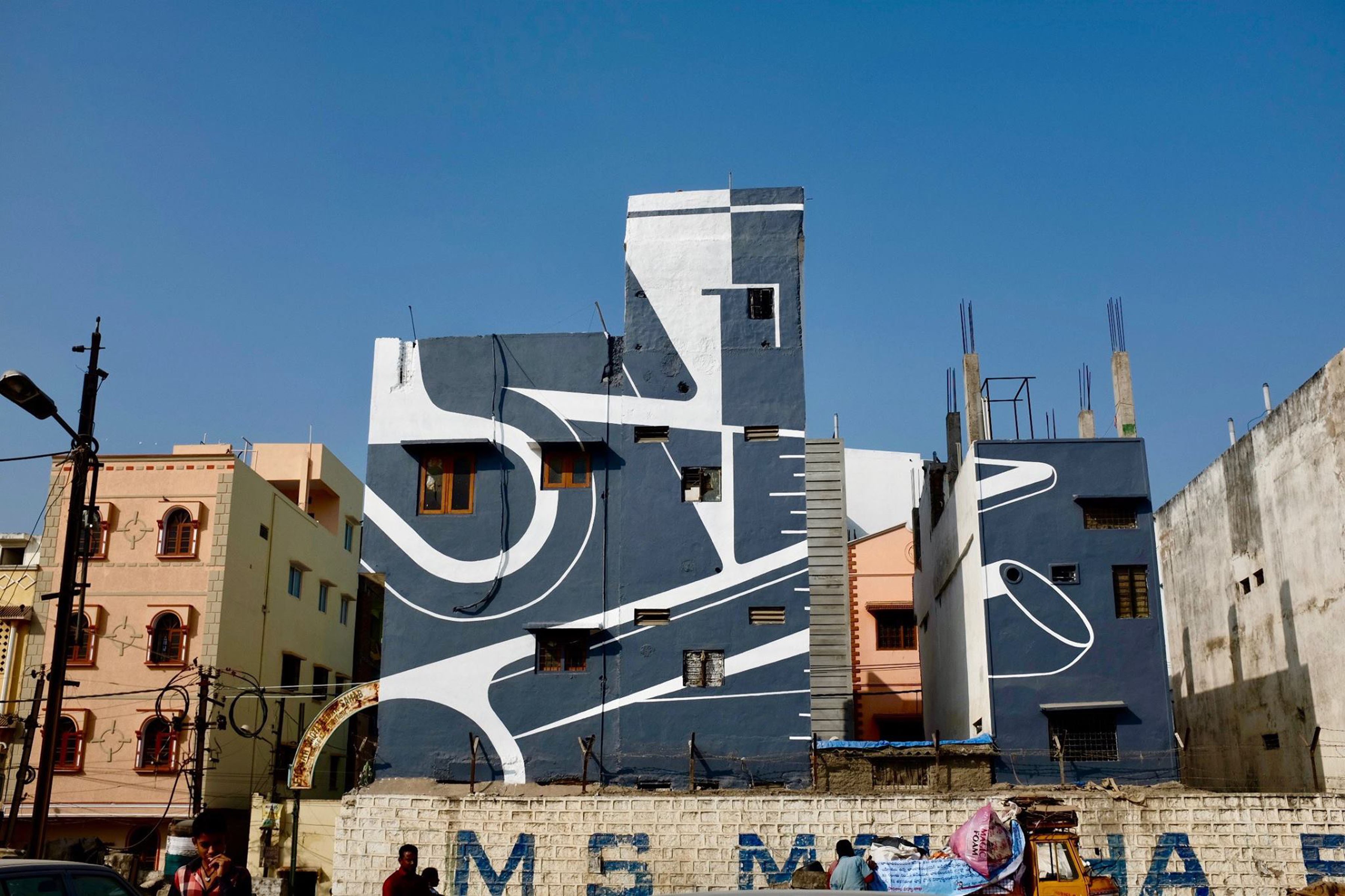
The idea was to make a coincidence between the surroundings and the artwork, since I have always been fascinated by the merging of the abstract and the real. To have been able to do this experiment here has been wonderful. It is interesting to bring art to such a neighborhood. It makes art a truly democratic process.
- Jean-Luc Feugeas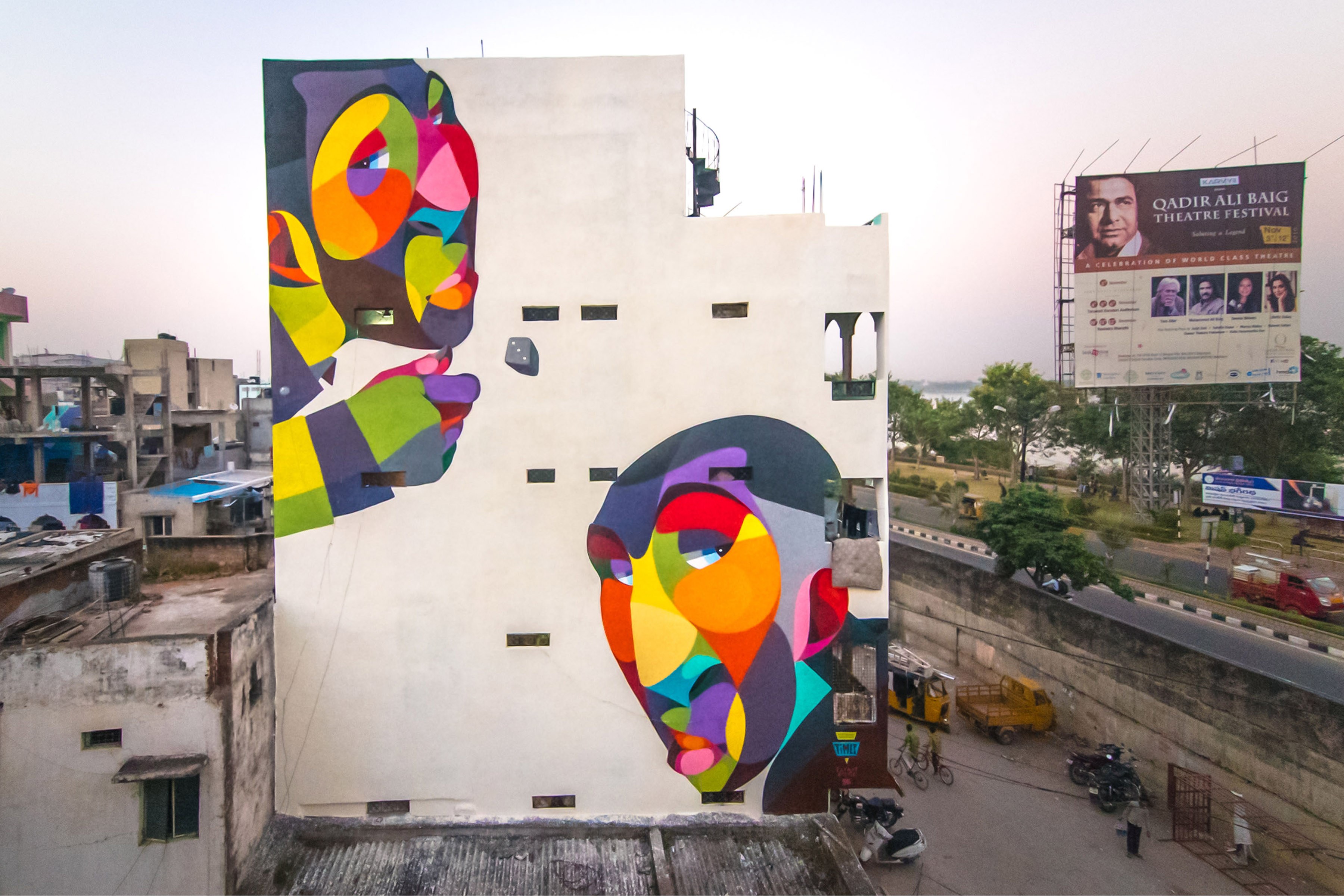
I use line and colour prominently in all my street art work. I love painting characters. Initially, I used to paint full bodies, but over the time I've been only painting faces and profiles. My piece at Maqtha is a play on the eyes. Two characters with expressive eyes looks back at you
- AlberWALL OF FAME
In 2016, St+art invited a few artists from Telangana to paint the boundary walls of the the Maqtha art district.
A bridge connects the people of this city with its flora and fauna. Unfortunately, the latter has gone from abundance to gradual extinction, depriving us of our nature. The co-existence though must be maintained. Through my artwork, I wanted to depict a common road and a riverside to talk about unity. The location meant that I could talk about the Hussain Sagar lake and the community path, which is used by plenty of civilians
- Priyanka AelayThe attraction between the flower and the eye balls are propelled by the brain. What I've depicted is entirely subjective. Someone may feel it is real, some one may think it's entirely imagination. But what is surely is, is a surrealist piece
- Anjaneyalu ReddyThe portraits are a part of a series of vintage illustrations that I have been recently working on. They're drawn from a collection of old family photographs from the 60s. That's why you'll spot a puzzled young boy wearing a check shirt or a young man with a pencil moustache. There's also the woman in a zig zag saree. They are all people showing off the fashion of that era. The objective was to illicit a nostalgic feeling for a bygone time, and contrast them to today - where they have great photographs but lack a bold personality. I drew it with an old, rustic look in mind, and I used bright red to bring out the contrast and contemporary look to the portraits.
- VarunAs an aside, you'll also see Guns and roses, that I've used to depict the duality of the female - oscillating between tough and soft depending on the situation. My work on such themes in the past helped me execute this piece. As for the visual style, I drew inspiration from realism and Indian popular culture.
- Nirmala BilukaWe returned to Maqtha the following year in 2017, with a bigger list of artists lined up to build the art district further.
Later in 2017, St+art went back to Maqtha entering in the neighbourhood and taking the approach of colour-coding the area, in turn erecting a sturdy method of navigating its sometimes confusing lanes. Colour-coding the walls helped us deliver a way of easy navigation for people not native to the locality, with an added element of ‘emotional navigation’ for the locality’s residents.
Walls in different blocks of the region were painted in basic colours - green, blue, yellow and pink, that allowed them to be christened afresh: going forward, these alleyways came to be referred as the Green Gully, the Turquoise Gully, the Pink Gully ,the Yellow Gully and the Blue Chowk, respectively. Artists created works in these ‘gullies’ that were in sync with their base colours. Some artists took inspiration for their pieces from stories and sights exclusive to Maqtha, while others engaged with pertinent social realities of the day - depicting themes ranging from rapid urbanisation to the concept of ‘being human without humanity’.
TURQUOISE GULLY
YELLOW GULLY
GREEN GULLY
BLUE GULLY
PINK GULLY
In 2019, to continue building the public art gallery, we returned to the area with 3 international
INAUGURATION
On December 16, 2017, the Maqtha Art District was inaugurated by Honourable Minister, KT Rama Rao.
The project was born with the intent of developing the neighbourhood through contemporary urban art in view of regenerating several of its public spaces while engaging the community in the process.
With over 40 murals created by Indian and international artists, #maqthaartdisrtict is now an integral part of Hyderabad's civic landscape and a source of pride and inspiration.
